INFORMING POLICY AND PRACTICE V
2019/20 Student Equity in Higher Education Research Grants and Equity Fellowships
Make tomorrow better.

ACKNOWLEDGEMENTS
We acknowledge this place called Curtin is on Whadjuk Noongar lands from the past, today and in the future. We wish to pay our deepest respects to all their ancestors and members of their communities, past, present, and to their emerging leaders. Our passion and commitment to work with all Australians and peoples from across the world, including our First Nations peoples are at the core of the work we do, reflective of our institutions’ values and commitment to our role as leaders in the Reconciliation space in Australia.
This publication could not be completed without the work of a dedicated team of people and the support of the Australian Government Department of Education, Skills and Employment and Curtin University.
Sincere thanks go to our 17 policy and practice commentators for their contributions, as well as the many people from all institutions involved in conducting the research we proudly share here with you in this publication.
The full reports are available online at ncsehe.edu.au
COPYRIGHT INFORMATION
© Curtin University 2022
Except as permitted by the Copyright Act 1968, this material may not be reproduced, stored or transmitted without the permission of the copyright owner. All enquiries must be directed to Curtin University.
CRICOS Provider Code 00301J
ISBN Print 978-0-6487317-9-5
ISBN Digital 978-0-6487317-8-8
Funded by the Australian Government
Contents
Foreword
Preface
Open textbooks and social justice: A national scoping study
Career guidance for culturally and linguistically diverse migrants and/or refugees
Supporting carers to succeed in Australian higher education
Understanding access to higher education amongst humanitarian migrants in Australia
STEM Pathways: The impact of equity, motivation and prior achievement
Equity through complexity: Inside the “black box” of the Block Model
Australian universities and educational equity for student veterans
Housing matters: Understanding the housing experiences of undergraduate regional, rural and remote students living outside the family home
Comfort with discomfort: Exploring Wadjella educators' engagement with Indigenous students
Exploring benefits and challenges of online Work Integrated Learning for equity students
Investigating transitions to university from regional South Australian high schools
A novel approach to mapping changes in student attitudes towards science and mathematics in reaction to changes to their learning environment
Calculating the costs of supporting people with disability in Australian higher education
"Ghost student" failure among equity cohorts: Towards understanding non-participating enrolments
Higher education aspirations, participation, and achievement of Australian Indigenous males
“On the radar”: Supporting the mental wellbeing of mature-aged students in regional and remote Australia
‘You going to uni?’: Exploring how people from regional, rural and remote areas navigate into and through higher education
Supporting persons with disabilities to succeed in higher education
Indigenous students' journeys to and through allied healthcare programs
Meaningful jobs for students with disability: From luck to business as usual
Building a stronger evidence base to support effective outreach strategies for Aboriginal and Torres Strait Islander students: Increasing impact and university participation
Biographies Acronyms About the NCSEHE 2 3 14 16 18 20 22 24 26 28 30 32 34 36 38 40 42 44 48 52 56 60 64 68 81 82
Foreword
Professor Sarah O'Shea — NCSEHE Director
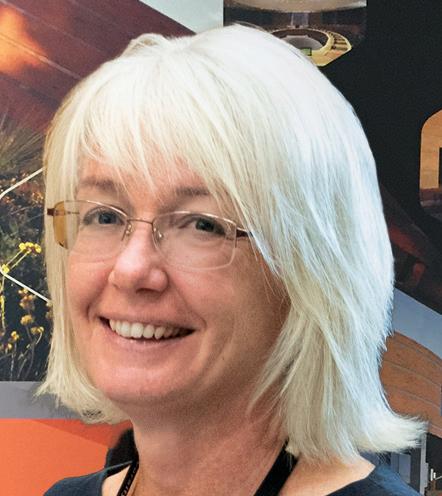
The National Centre for Student Equity in Higher Education (NCSEHE) endorses an approach to higher education policy that is grounded in inclusive participation. This vision is underpinned by an understanding that all people in Australia, whomever and wherever they are, are provided with the opportunity to successfully engage in lifelong learning that is inclusive, accountable and responsive to community needs. For this to happen, educational systems need to be adept at responding to both current and prospective challenges.
The NCSEHE is building an evidence base to inform decision making in both equity policy and practice in Australian higher education and bridge the gap between the two. The NCSEHE Student Equity in Higher Education Research Grants Program and Equity Fellows Program are important aspects of this work.
Since 2014, the NCSEHE Research Grants Program has funded 79 projects, across six rounds, with total expenditure of A$3,020,512. The Equity Fellowship program began in 2016. Since then, 12 Fellowships have been awarded to researchers and practitioners to conduct year-long studies into topics of emerging importance to equity in Australian higher education.
This Informing Policy and Practice V publication summarises the latest instalments of these two programs over 2019–20.
The 2019–20 Research Grants Program funding round focused on the following themes:
• equity students and science, technology, engineering and mathematics (STEM)
• equity and mature-aged students
• digital inclusion and student equity
• study–life balance and student equity
• “non-traditional” equity groups (i.e., groups other than low socioeconomic status [low SES]; Indigenous; disability; regional and remote; non-English speaking background [NESB]; women in non-traditional areas [WINTA]; or First-in-Family [FiF] students)
• housing and student equity.
An important consideration in selection was whether projects made innovative uses of existing or new data sources on equity status, undertook a comparative approach to examining issues using international or interstate or institutional comparisons, and/or adopted an interdisciplinary and policy-focused approach. The projects selected collectively met these criteria and, as this publication documents, yielded insights and recommendations which we hope will inform both policy and practice in Australian higher education moving forward.
The 2019–20 Equity Fellows Program included research by six Fellows looking at critical issues facing Indigenous (Aboriginal and Torres Strait Islander) students; regional and remote students; and students with disability.
Of course, 2020 was different from previous years in that research project and Fellowship work had already commenced just as the COVID-19 pandemic emerged in the early part of the year. This necessitated variations in research work to accommodate difficulties in carrying out projects under the pressures of the pandemic, with rapidly changing circumstances affecting both research questions and potential responses. We would like to thank all research teams and Fellows, as well as their participants and supporters, for persevering with research activities during a particularly trying time. However, whilst this was a challenging time to undertake research, equally it was an insightful period. This body of research provides important and innovative perspectives on equity-related matters during a global health crisis.
These challenges and their impacts on equity are discussed in the summaries throughout this publication and in the underlying reports themselves. Readers will appreciate that issues in Australian higher education equity policy are almost always multifaceted and interconnected, in the sense that progress in one area can have positive impacts not just for equity students, but for the broader student population. Many of these equity issues are also globally applicable, offering insights and initiatives that can be applied across different locations and sectors.
2
Preface
Dr Paul Koshy — Research Fellow

OVERVIEW
Equity policy and practice in Australian higher education must be able to respond to an ever-changing, and often challenging, set of circumstances, informed by timely, relevant and incisive research.
This was never more true than in 2020, with the research undertaken in the 2019–20 Round of the NCSEHE Research Grants Program and the 2020 Equity Fellows Program. This often necessitated adjustments in the scope and nature of the work undertaken as research was carried out in an environment of virtual engagement, operational uncertainty, and elevated risks around traditional research approaches and activities.
This collection of final reports is a testament to the project teams, as well as the stakeholders and research participants with whom they collaborated, often in contexts different from those originally envisioned. This yielded answers to initial research questions and, in some cases, new questions emerging around higher education during COVID-19.
This publication documents the impactful research carried out in the NCSEHE Research Grants Program across five broad themes: STEM pathways and performance; access and outcomes for culturally and linguistically diverse migrant and refugee (CALDM/R) students; recognising and supporting students with disability and students with carer responsibilities; addressing equity status in learning; and new areas of focus in equity.
The following is a thematic summary of this diverse collection of reports and Fellowships.
STEM PATHWAYS AND PERFORMANCE
Encouraging diverse participation in STEM education and occupations is a central policy objective in Australian higher education. Increasingly, this is viewed as an area where the focus of efforts has shifted to the secondary school system, due to the recognition that important STEM education and occupation pathways originate in early secondary school. The two studies in this section provided important evidence on this aspect of STEM participation. The first looked at the impact of equity status and student motivation and prior achievement in secondary systems on their eventual progress in STEM. The second outlined a system by which
schools can identify and encourage student learning, attitudes and aspirations in STEM subjects.
STEM pathways: The impact of equity, motivation and prior achievement, led by Julie McMillan from the Australian Council of Educational Research (ACER), examined access to STEM in Australian higher education, with a focus on equity areas: low SES, regional and remote location, FiF status, and WINTA. The research used data from the Longitudinal Surveys of Australian Youth (LSAY) to examine drivers and outcomes in STEM education and occupational pathways. While equity students were found to enter university at lower rates than other students, they tended to participate in STEM at a similar rate of around one in four students, an exception being the lower participation rate for female (WINTA) students, at one in eight. The strongest predictor of university STEM participation was mathematics achievement and participation in senior secondary school and higher self-assessments on LSAY’s measures of "Instrumental motivation" and "Self-concept". Often, STEM completions did not translate into STEM occupations, with only one in three students, and one in four WINTA students, entering STEM occupations. The study’s key recommendations included a focus on pedagogical approaches that demonstrate the practical importance of mathematics; broader measures to improve student uptake of mathematics and STEM subjects, particularly among equity students; and the use of work placements, Work Integrated Learning (WIL), and internships to ensure equitable access to STEM occupations.
A novel approach to mapping changes in student attitudes towards science and mathematics in reaction to changes to their learning environment, led by Simon Leonard and John-Paul Kennedy from the University of South Australia, used “light touch” data collection to map changes in student attitudes to STEM in three case studies at two South Australian schools. It utilised the School Attitude Survey (SAS) to gauge student perceptions across nine attitudinal factors: Subject Anxiety; Creativity; Perceived Difficulty; Enjoyability; Intentions; Subject Relevance; SelfEfficacy; Career Usefulness; and Personal Usefulness. The first case study established a baseline data collection on student attitudes to subjects at the first school. The second looked at the response of students to COVID-19 and the online-mediated distance learning response at both schools.
3
Preface (continued)
The final case study tracked a new facility at the first school, The Innovation and Creativity School (TICS) which offered week-long STEM-related learning experiences. The study found that student attitudes were positive both before and after the onset of COVID-19. Students reported higher levels of anxiety around science and mathematics than other subjects, and generally held more positive views about science. Student attitudes across the nine factors tended to be interdependent, with ratings on Enjoyability, Subject Relevance, and Self-efficacy shown to be strongly correlated across domains. Students were found to reach a decision point on their attitude towards science in Year 8 or 9, with no similar effect observed for mathematics. In the third case study, variations in the general curriculum were shown to have a stronger impact on Year 7 attitudes towards mathematics than the week-long activities at TICS. The key recommendations from this study were that “light touch” data collection allows educators to track student attitudes to subjects. As attitude formation often occurs in early secondary school, programs designed to foster awareness of STEM subjects should be delivered to that cohort and emphasise the usefulness of specific STEM subjects in their design and content.
ACCESS AND OUTCOMES FOR CALDM/R STUDENTS
Students from CALDM/R backgrounds face a plethora of challenges in accessing, participating in, and achieving positive outcomes from, higher education. Two studies in this funding round focused on issues of participation and career guidance respectively but identified commonalities around a lack of formal recognition of CALDM/R students in the system and specific barriers, including varying rates of English language proficiency, uncertainty around residency status, and historic disadvantage, which require specific attention from government and institutions.
Understanding access to higher education amongst humanitarian migrants in Australia, led by Francisco Perales from the University of Queensland, examined empirical evidence on the enablers and barriers to higher education participation by humanitarian migrants in Australia. The study used data from the 2016 Australian Census and Migrants Integrated Dataset (ACMID) and 2016 Census of Population and Housing (the Census) to identify the rate of higher education participation among humanitarian migrants, and data from the Building a New Life in Australia (BLNA) study to examine the determinants of participation. Humanitarian migrants were found to be less likely to have attained a university degree than other migrants — one third as likely as family migrants
and one fifth as likely as skilled migrants. This translated into lower rates of participation in 2016. While 15.4 per cent of humanitarian migrants were enrolled in a postcompulsory education course, only 14.2 per cent of this group were pursuing a higher education option. Analysis of the BLNA data showed the barriers to participation were low levels of English language proficiency and prior educational attainment. Noticeably poorer outcomes were observed among humanitarian migrants from Iraq — the largest country of origin. A key recommendation was the identification of humanitarian migrants as a separate equity group, with a focus on addressing specific barriers to their participation.
Career guidance for culturally and linguistically diverse migrants and/or refugees, led by Alexander Newman from Deakin University, analysed how CALDM/R students are supported in their transition to employment. The research examined these issues via a desktop study, a national survey of practitioners, and focus groups with CALDM/R students. The principal finding was that career and employment guidance is largely generic in Australia. A concern was that career guidance and employment advice in Australian higher education ignored the needs of CALDM/R students, despite the perceived difficulties they face in relation to English language proficiency, residency and/or visa status, and in receiving opportunities to engage with employers. As a result, CALDM/R students were typically provided services on the same basis as other students, due to the lack of targeted resources and programs to do otherwise. The researchers’ key recommendation was that both the funding and development of career guidance programs by government, peak bodies and institutions must specifically recognise and address the needs of CALDM/R students in a collaborative and supportive manner.
RECOGNISING AND SUPPORTING STUDENTS WITH DISABILITY AND STUDENTS WITH CARER RESPONSIBILITIES
Australian higher education is required to align itself with important measures in national disability policy, notably the Disability Discrimination Act (1992), the Disability Standards for Education (2005) and the Convention on the Rights of Persons with Disabilities. This involves the provision of funding and staff to support the engagement of students with disability in higher education and the recognition that higher education’s response is connected to the broader community. Two projects in this round examined aspects of this obligation. The first assessed the extent to which higher education providers provide
4
transparent reporting on all aspects of their support for students with disability, and the extent to which this shapes student outcomes. The second focused on another aspect of disability support; namely, the enrolment of carers in higher education and the challenges and opportunities that can be addressed in explicitly recognising their contributions.
Calculating the costs of supporting people with disability in Australian higher education, led by Katie Ellis from Curtin University, investigated the sources, patterns and reporting of institutional expenditure on disability in Australian higher education. The study reviewed government policy documents, university annual reports, and the academic literature on disability support; conducted interviews with relevant staff; and undertook an analysis of disability support in view of student participation metrics. A key finding was that institutional base funding for students with disability from official sources—the Additional Support for Students with Disability (ASSD) payment and Disability Performance Funding (DPF)—amounted to average funding of A$104 per student in 2019, with funding ranging from A$23 to A$347 per student. No discernible correlation was found with increased participation or retention for students with disability. This is subject to the limitation on current data collection and reporting, evidenced by the divergence in reporting standards in university annual reports. The study recommended that the Australian Government conduct a holistic review of the participation of students with disability in higher education in view of Australia’s current policy framework, and that it undertake an independent audit of higher education providers to quantify investments undertaken on behalf of students with disability. Both responses, in conjunction with actions from state and territory governments, should act to create a consistent institutional reporting framework for describing goals, activities and funding for disability in Australian higher education.
Supporting carers to succeed in Australian higher education, led by Lisa Andrewartha from La Trobe University, established the first major evidential base for carers in Australian higher education. This included a desktop review and survey of 188 carers in Australian higher education, with a follow-up module on COVID-19 impacts completed by 49 respondents. The desktop review found support for carers was limited and inconsistent, with few universities having specific measures in place. The survey found carers had to manage considerable time and financial pressures compared to non-carers — more so after the emergence of COVID-19. Despite this, around one quarter of carers did not disclose their status as they saw no benefit in doing so. Carers
reported that their roles often complemented their studies as they developed skills in time management, empathy and compassion, and specific skills in areas such as nursing. The study recommended the formal collection of data on carers, ideally through the current Higher Education Information Management System (HEIMS). A further recommendation was that universities should exhibit awareness of carers across all aspects of the student life cycle — from outreach work to participation support.
ADDRESSING EQUITY STATUS IN LEARNING
Innovation in learning and teaching is an important avenue through which universities can increase retention and success rates among equity students. Three studies examine issues across important facets of learning: subject delivery design, student engagement, and course materials. A common focus through the studies was maintaining student engagement at a level that recognises their experiences and ensures the curriculum is both effective and responsive to the social and learning context in which it is developed.
Equity through complexity: Inside the “black box” of the Block Model, led by Jen Jackson from Victoria University, investigated the impact of the introduction of the Block Model at Victoria University in 2018. Under the Block Model, subjects are delivered in intensive four-week blocks, one after the other instead of concurrently as per the traditional semester model. The analysis included an empirical comparison of first year outcomes among STEM students under both systems, coupled with interviews with senior leaders involved in the implementation of the Block Model, and focus groups with teaching staff and students. A key finding was a 9.2 percentage point reduction in unit failure among first year STEM students, including a 9.8 percentage point reduction among equity students. This was coupled with a steady improvement in student satisfaction across most measures, except for those relating to workload manageability. Discussions with staff and students provided further evidence of the benefits of the Block Model, with an awareness that it necessitates well-planned pre-class activities, scaffolded assessments, and a constant pace of learning. From an institutional perspective, this needs to be underpinned by flexible course planning and strong institutional support for innovation.
5
Preface (continued)
Comfort with discomfort: Exploring Wadjella educators' engagement with Indigenous students, led by Jonathan Bullen from Curtin University, explored educator and student perspectives at two Australian universities on the way “Wadjella” (non-Indigenous) academics engage and interact with Indigenous students. This is a critical issue in Australian higher education as retention rates for Indigenous and non-Indigenous students continue to differ markedly. This is at least partly attributable to the content and delivery of university teaching. The study found that while institutions supported the inclusion of a curriculum designed to develop and facilitate cultural competence and safety, there was a lack of equivalent growth in the development of Wadjella academics’ capability to effectively deliver this curriculum.
Indigenous students emphasised the contextualising and foregrounding of their lived experiences in shaping their self-identity as students, and that a sense that educators accepted and valued this experience was important to their learning. Indigenous and Wadjella educators with experience in this context acknowledged the importance of this relationship, while those with less experience were hesitant and uncertain about how they should engage with students. The key finding from the study was the need to familiarise Wadjella academic staff with Indigenous culture, the philosophies of equity, and provide them with opportunities for interaction with Indigenous students.
Higher education aspirations, participation, and achievement of Australian Indigenous males, led by James Smith from Charles Darwin University, examined critical issues in relation to the underrepresentation of Indigenous males in Australian higher education. The study included 19 in-depth semi-structured interviews with Indigenous male students and alumni (n=19) across five state and territory jurisdictions (NT, WA, VIC, ACT and QLD) to gain insights into participants’ aspirations for, and engagement and participation in, higher education. Indigenous men were motivated by a desire to acquire knowledge and skills to gain employment, invest in community development, and mentor peers and family members. Participants were motivated to pursue topics they were passionate about and sought to embed Indigenous knowledge and perspectives into theories and practice. They encountered both structural supports for participation, including flexible course arrangements and access to Indigenous student support services, as well as barriers including financial constraints and a lack of academic preparation in high school. Governments and institutions need to strengthen supports and reduce barriers while at the same time ensuring that courses are culturally sensitive and inclusive of Indigenous knowledge and perspectives.
Open textbooks and social justice: A national scoping study, led by Sarah Lambert from Deakin University, examined open textbooks — free digital texts that are an alternative to commercially produced textbooks. They are a form of open educational resources (OER) which are particularly suited to educational responses to gender, socio-cultural and Indigenous underrepresentations in the curriculum. Using a survey instrument from the Open Textbooks study in the United Kingdom (UK), this study conducted interviews with 43 staff and 19 students across five Australian universities, with a particular focus on equity and social justice issues. It found that while all students can benefit from open textbooks, underrepresented (equity) students benefited in particular. This included a redistributive justice dimension, whereby the cost of accessing information declined considerably; a recognitive justice dimension, whereby staff were able to introduce diverse and inclusive sources of material into their courses; and a representational dimension, as open access allowed for a range of textbook writers from diverse backgrounds to emerge. The report authors outlined an Ameliorative Strategy to address equity issues in the short term, featuring initiatives such as workshops to raise awareness of OER among academics, and a Transformational Strategy for longer-term commitments, such as the promotion of open textbook and OER materials as the core materials for new courses and units.
NEW AREAS OF FOCUS IN EQUITY
Discussions of the impact of equity status on Australian higher education constantly evolve to recognise new student groups and emerging issues. This round of funding saw explorations in new areas of focus, including research into the support structures for student veterans, an often overlooked group in university education in Australia; the role of housing availability in shaping experiences and outcomes for students from regional and remote regions; an examination of how geography shapes regional disadvantage in an Australian state; and the identification and analysis of “ghost student” failure in Australia, whereby students enrol in units and fail to actively participate in any assessment tasks in the unit.
Australian universities and educational equity for student veterans, led by Ben Wadham from Flinders University, reported on student veterans at Australian universities. Each year, approximately 6,000 veterans discharge from the military and transition back to civilian life, with around 11 per cent entering a tertiary education pathway within 12 months. Despite this, Australian universities do not officially recognise veteran students or their educational needs.
6
The project team identified existing support structures for veterans, including the work of peer support organisations such as the Australian Student Veterans Association (ASVA). It also conducted focus groups with student service and equity team staff in universities in four states and examined government policy on transition pathways, via a policy document review and consultation with officers of the Departments of Veterans Affairs (DVA) and the Australian Defence Force (ADF). A critical observation was the lack of a national framework for supporting veteran students in higher education, with a consequence being that current support is underdeveloped despite genuine goodwill and intent in the sector. The study’s recommendations included: a national policy on veteran access to higher education; the establishment of a national student veteran working group; coordination between the DVA, ADF and DESE in addressing issues around admission; and official identification of veteran students.
Housing matters: Understanding the housing experiences of undergraduate regional, rural and remote students living outside the family home, led by Julia Cook from the University of Newcastle, examined the impact of housing
experiences on regional, rural and remote (RRR) student higher education participation. This was informed by a survey (N=502) and follow up interviews (N=27) with Newcastle undergraduates who had relocated from RRR areas. Students were accommodated either on campus or privately alone, with relatives or with housemates. On-campus students reported higher levels of satisfaction than those in private settings, while those living alone or with relatives reported higher levels of satisfaction than those living with housemates. However, on-campus accommodation was not accessible to all students, especially equity group students. Low SES status and financial support from families emerged as critical issues. Reduced income support from families saw students more likely to report longer working hours, with those working more than 11 hours a week reporting a significant impact on their education. The study recommended that current university admission and government income support arrangements be adjusted for RRR students, recognising their need to travel prior to commencement to secure accommodation; the importance of income support in reducing student working hours; and disparities in access to internet and travel infrastructure in RRR areas.

7
Preface (continued)
Investigating transitions to university from regional South Australian high schools, led by Sharron King from the University of South Australia, examined why high performing students in regional South Australia were entering university at lower rates than students in metropolitan areas. Surveys, interviews and focus groups with students, parents, teachers and other educators were used to build an evidence base for a comparative assessment with a previous study of regional participation in New South Wales. The study found similarities between both states in terms of regional student concerns, including uncertainty around costs, financial support, and access to accommodation options, coupled with reduced access to appropriate levels of career advice and information. A key difference in South Australia was a perceived lack of options given its lower level of "regional" higher education infrastructure, reduced exposure among students to outreach programs such as school visits by universities or campus visits by students, coupled with a generally higher level of geographical isolation and reduced expectations of higher education access among students, particularly boys. The study recommended universities work more closely with schools and local communities in shaping outreach programs and course delivery systems,
including cooperation with regional university centres (RUCs). Governments were recommended to pay particular attention to outreach program design, provide incentives to collaboration between universities, schools and local communities, ensure that higher education participation is affordable for all regional students, and pay attention to state contexts when framing higher education policy.
"Ghost student" failure among equity cohorts: Towards understanding non-participating enrolments, led by Bret Stephenson from La Trobe University, analysed the occurrence of students who remain enrolled in a unit and incur a financial liability, but exhibit no evidence of having participated in the unit — referred to as “ghosting” or, more formally, as non-participating enrolments (NPEs). Focusing on a large metropolitan institution with several regional campuses, the study defined an NPE results as a zero mark (“0”), as opposed to a non-zero failure. It found that among first year units, 13.7 per cent of all units resulted in a fail grade, with 27 per cent of these (3.7 per cent of all unit outcomes) being NPEs. One in three students failed at least one unit, while one in 10 recorded at least one NPE result. Around 1.8 per cent of all students were classified as Total

NPEs, recording an NPE result in every unit attempted. NPE results were a leading indicator of course attrition or non-completion. While equity status was shown to have a marginal impact after controlling for academic background and demographic factors, part-time enrolment status and lower ATAR outcomes (ATAR below 60) had a significant negative effect on retention and completion outcomes. The study found that DESE should develop and adopt a formal definition of NPE status and track NPE statistics, ideally through the HEIMS system. It recommended that institutions use this reporting, together with qualitative work with students, to explain and address NPE outcomes among low ATAR and part-time students and, to the extent there is an overlap, equity group students.
EQUITY FELLOWSHIP RESEARCH REPORTS
The 2019–20 Equity Fellowship Program funding round saw six Fellowships awarded to researchers and practitioners across Australia to examine critical issues in relation to: Indigenous (Aboriginal and Torres Strait Islander) students (outreach work; participation in allied healthcare programs); regional and remote students (mental wellbeing among
mature-aged students; student navigation through higher education); and students with disability (providing support to persons with disability in higher education; ensuring meaningful jobs for students with disability).
Building a stronger evidence base to support effective outreach strategies for Aboriginal and Torres Strait Islander students: Increasing impact and university participation, undertaken by Katelyn Barney, The University of Queensland.

Overview
This Equity Fellowship focused on outreach programs for Aboriginal and Torres Strait Islander (Indigenous) students and examined “what works” and what could be improved in these programs. Most universities in Australia are managing outreach initiatives for Indigenous high school students. These programs often involve week-long, intensive camp experiences that bring school students onto university campuses for information sessions, workshops and events that attempt to demystify university culture and cultivate a sense of belonging to build and sustain student engagement.
The theoretical case for these initiatives is strong, as data exist about the barriers Indigenous students face in entering university. However, before this Fellowship commenced, the research and evidence base for these equity programs remained largely underdeveloped and limited. The Fellowship utilised a mixed methods approach to identify “what works” in outreach programs for Indigenous students and strategies to strengthen and improve outreach programs specifically for Indigenous students.
Through collaboration with an expert Indigenous advisory group and staff at universities, the Fellowship documented and mapped the range of outreach programs universities are running for Indigenous students and evaluated two outreach camp programs for Indigenous students at Australian universities. Working closely with staff at selected universities, qualitative data was collected from Indigenous tertiary students who had attended a high school involved in such outreach activities prior to their transition to university. Interviews were conducted with Indigenous and non-Indigenous staff managing Indigenous outreach programs. In addition, caregivers and parents of Indigenous students who participated in outreach programs were interviewed to explore their perspectives on the impact of outreach activities on students. Quantitative data was collected through a nationally circulated survey of Indigenous university students who participated in an outreach program while at school.
9
Preface (continued)
Key Findings
• The peer-to-peer connections Indigenous students formed were a key success factor of outreach camps.
• Camps are part of a suite of outreach activities that many Indigenous students undertake while at school. Therefore, causality between outreach activity and transition to university is difficult to prove.
• Camps play an important role in demystifying university and provide “a taste” of university life for students.
• Most Indigenous students participated in outreach camps during Year 10, 11 or 12 and they were already considering transitioning to university.
• More cultural aspects and more Indigenous perspectives in the curriculum are needed in some camps.
• Post-camp engagement with Indigenous students is particularly important and needs to be strengthened in some camps.
“On the radar”: Supporting the mental wellbeing of mature-aged students in regional and remote Australia, undertaken by Nicole Crawford, The University of Tasmania.
Overview
University students’ mental wellbeing is increasingly “on the radar” of universities in Australia and internationally. In this climate, the Equity Fellowship research investigated university students’ perspectives on mental wellbeing and their insights into proactive approaches that they found supportive during their university studies. In particular, the research focused on mature-aged students who live in, or come from, regional and remote areas in Australia. This research investigated two overarching research questions:
1. What factors impact on the mental wellbeing of matureaged undergraduate university students in, and from, regional and remote Australia?
2. What are proactive approaches that support the mental wellbeing of mature-aged undergraduate university students in, and from, regional and remote in Australia?
A sub-research question, Who are mature-aged university students in, and from, regional and remote Australia? was a necessary starting point for approaching the two overarching questions.
Data was collected from three sources: national higher education student data; an 1,800 participant student survey; and interviews with 51 students. Survey and
interview participants were drawn from regional and remote areas all over Australia, including representation from all states and territories and across a range of fields of study and year levels.
Taking an ecosystem perspective, this research highlights the myriad and complex ways that students’ mental wellbeing is impacted by the many interactions between their multiple roles—at home, at work, in their community and at university—and in larger contexts in which factors, such as the culture of an institution, may impinge on or support and enhance students’ mental wellbeing.
Key Findings
The report identified a number of insights into this field including:
• A variety of factors impacted on students’ mental wellbeing, both within the context of their daily learning and interactions with their university course, curriculum, peers and staff, and outside of the university environment, such as practical issues (for example, unreliable internet) and financial challenges. In particular, several aspects of the students’ learning experiences were revealed in the qualitative analyses and highlight the importance of teaching and learning for student mental wellbeing.
• Mature-aged students in certain sub-groups within the regional and remote cohort—such as students who studied online and part-time, and students with children—experienced compounding challenges and impacts. Almost half of the survey respondents (47.7%) considered deferring/withdrawing from their university course.
• Entrenched attitudes and expectations that favour and privilege some students (for example, younger students with time and who study on campus) over others (for example, older students who juggle numerous commitments, and study online and parttime) continue to prevail. Inclusive practices in teaching, learning, and support offer ways of catering for the needs and strengths of mature-aged students in, and from, regional and remote Australia and of proactively supporting and enhancing their mental wellbeing. Increased attention to these aspects could improve students’ experiences and, as a consequence, their learning and academic achievement, and improve retention and success rates for universities.
10
Supporting persons with disabilities to succeed in higher education, undertaken by Tim Pitman, Curtin University.
Overview
This Fellowship explored how students with disabilities were supported in their higher education studies by trained, professional disability support officers and the wider institutional community. A key aim of the study was to investigate whether there were any significant differences between the experiences of regional and metropolitan students with disabilities in Australia. The Fellowship highlighted that students with disabilities experience below-average retention, success and completion rates and furthermore these rates are generally lower still for regional students with disabilities. The research engaged with more than 1,700 students with disabilities, who provided critical insights into the social barriers they experience in their dayto-day studies. The report made five key recommendations for government and higher education providers.
Key Findings
Some of the key findings from the study include:
• Despite increases in participation over the last decade, people with disabilities remain underrepresented in
higher education and lag national averages for retention, success and completion. These indicators are generally lower for regional students with disabilities than metropolitan students with disabilities.

• Students with disabilities generally reported high satisfaction levels with disability support but social barriers remained for some students with disabilities regarding:
{ attitudes towards students with disabilities
{ processes and procedures intended to support students with disabilities
{ the physical and built environment — in particular, the failure in some cases to follow principles of Universal Design for Learning (UDL)
{ communication — particularly how educational content is delivered, both in the classroom and online
{ social inclusion in both curricular and extracurricular activities.
• In terms of satisfaction with support, there was little difference in ratings between regional and metropolitan students. However, regional students with disabilities faced issues concerning:
{ access to specialist health services
{ the digital divide
{ the quality of support services at regional institutions.
11
Preface (continued)
Indigenous students' journeys to and through allied healthcare programs, undertaken by Andrea Simpson, La Trobe University.
Overview
This Fellowship investigated the participation and lived experiences of Indigenous allied healthcare students and graduates. The study examined Indigenous enrolment share and socio-demographic factors across both the higher education and vocational education and training (VET) sectors. These data were supported by semi-structured interviews and surveys with higher education, VET, and Indigenous stakeholders. The project found Indigenous representation is highly dependent on the profession, with the highest concentration of Indigenous enrolments in the field of social work. Indigenous students studying allied healthcare were more likely to be female, based regionally, and use previous VET study for entry into higher education. Similarly, in the VET sector Indigenous enrolment share within health programs was found to be concentrated in a small number of individual programs of study, with the Certificate IV in Aboriginal and/or Torres Strait Islander Primary Health Care the most prominent.
Key Findings
Adopting a mixed methods approach, some of the key findings from this study include:
• Progression in Indigenous enrolment share within higher education was found in only a few of the allied healthcare professions included in this study. However, within the VET sector, Indigenous students were just as likely to complete qualifications at Certificate IV or above when compared to their non-Indigenous peers.
• There is a need to establish clearly defined, articulated pathways between VET health study and higher education qualifications in allied health.
• The presence—or absence—of a sense of "belonging" was critical to success for students. To facilitate belonging, stakeholders endorsed the creation of:
(1) welcoming spaces with physical imagery that reflected and celebrated Indigenous culture; (2) positive integration of Indigenous knowledge into healthcare curricula; (3) availability of Indigenous mentors, role models and peer support; (4) employment of Indigenous staff; and (5) cultural safety training for non-Indigenous students and staff.
The Fellowship’s recommendations built on previous research in the field, specifically improving Indigenous governance and leadership within professional bodies; strategic expansion of course offerings into regional areas; improved partnerships between the VET sector and higher education providers; and credit transfer arrangements for VET qualifications which align with allied healthcare curricula.
‘You going to uni?’ Exploring how people from regional, rural and remote areas navigate into and through higher education, undertaken by Janine Delahunty from the University of Wollongong.
Overview
There are complex reasons why degree completion rates continue to be consistently lower for people from RRR areas than for those from metropolitan areas. This Fellowship examined this issue, with an emphasis on the importance of these insights coming directly from RRR students (and staff) themselves. Thus, the research was designed to privilege their voices, which enabled more nuanced understandings of the complexities involved.
Key Findings
Based on surveys and interviews, the following key findings emerged:
• Decisions about going to university were rarely simple yes/no responses to questions around attending; decisions to study and persist were often far from straightforward.
• Almost all university student participants indicated multiple equity factors as reflective of their personal circumstances. For these participants, the decision to attend university was often combined with multiple inequities, considerations involving geographical distance, relational and emotional ties to family and communities, as well as additional responsibilities such as work, parenting, caring and/or community responsibilities. Barriers included financial, time, guilt, and balancing responsibilities, as well as inflexibility in processes and practices of the university itself, which did not always understand—nor cater for—the particular needs and challenges of their RRR students.
• The study revealed the embodied nature that university attendance became for many of these students. They spoke of what they were aiming for in the future which included specific career goals, but more often was articulated as altruistic values of giving back
12
to community or society in some way, to make a difference, or for gaining personal satisfaction in doing something they were passionate about and could apply to real world situations.
• These students also brought to the university experience many qualities and strengths, such as resilience, determination, problem-solving skills, teamwork etc., often gained from being part of smaller communities. Many spoke of the importance of sense of community, which was not always easy to find at larger university campuses; however, this was often replicated at smaller regional campuses and Regional University Centres, where personal connections and human care were much more commonly experienced.
The six recommendations in this report are mainly directed toward policymakers, institutional leadership, and student support/outreach staff. To reverse the trend of noncompletion, people who have come into university from RRR areas need to be authentically engaged in contributing to solutions which are bespoke (such as through studentsas-partners approaches) to reflect the diversity across RRR student cohorts. This is essential, as only these people have the insights needed to understand the particular complexities of navigating into, and through, university for RRR students.
Meaningful jobs for students with disability: From luck to business as usual, undertaken by David Eckstein, Swinburne University of Technology.
Overview
It is broadly accepted that students with disability do not fare as well in the job market as other students when they complete their studies. The employability of students with disability can be restricted before they graduate and even before they enrol in university. These restricting factors create a complex set of challenges for students with disability to negotiate that can distort the very way they think about their careers. Career support that deliberately
targets these challenges is needed if students with disability are to compete on a more equal footing in the job market.
This innovative research project investigated the Australian university sector’s engagement with these issues. It gathered and analysed feedback from students with disability and university staff to document students’ responses to key career challenges and university staff’s understanding of them. The result is a thoughtful account of the options that are available to help universities and the sector as a whole provide better career education support for this key student cohort.
Key Findings
This report provides insight about the cutting edge of the current career education profession. It illustrates the practitioner role in helping students to:

• understand themselves as emerging professionals
• interrogate and link the way they see the world with the kinds of professional contributions they would like to make.
In so doing, it sheds light on the way career education complements academic curricula by helping students reflect on what they want to do, in combination with what they’re learning and what they want to learn next. In the process, students learn that their disability may variously be a source of careers strength, a matter of individual work style, or a matter of no relevance to their developing career plans.
Recommendations from the report stand to make a substantial contribution to sector-wide practice and policy in this important equity area. The research report culminates in the encouraging observations that the Australian university sector is at the cusp of organising more strategic support for the career needs of this equity cohort, and that the resulting changes will contribute to a more inclusive employment landscape that values students with disability for their professional skills and aspirations.
Open textbooks and social justice: A national scoping study
Sarah Lambert & Habiba Fadel
Open textbooks are a recent innovation in free, digital texts that can be distributed at no cost, printed at cost price, and modified for local needs, such as to correct gender, socio-cultural and indigenous underrepresentations in the curriculum. This project builds on international research showing equity students benefit most from free textbooks—similar to the benefits of scholarships/financial aid—by lifting grades and course progress rates. It replicates a United Kingdom (UK) national scoping study with equity-focused additions, using a social justice framework to test the potential within the Australian context in terms of redistributive (economic), recognitive, and representational justice.
BACKGROUND
Open textbooks are free digital texts that are an alternative to commercially produced textbooks. They are a form of Open Educational Resources (OER) and along with other OER media, are particularly suited to educational responses to gender, socio-cultural and Indigenous underrepresentations in the curriculum.
This report confirmed research from the United States of America (USA) and the UK, finding that while all students can benefit from open textbooks, underrepresented (equity) students in particular benefit from having access to unrestricted copies of course materials which do not replicate harmful sexist and racist stereotypes.
OBJECTIVES AND METHODOLOGY
The key research question in this study was: To what extent do open textbooks have the potential to act as social justice initiatives in the Australian context as they do overseas?
The study used a survey instrument from the UK Open Textbooks study as the basis of a national scoping study for the impact of open textbooks, with additional questions on social justice and the introduction of material to adapt text to the Australian context and ensure content diversification.
Data collection was primarily conducted across five universities: Deakin University, La Trobe University, RMIT University, Charles Darwin University and QUT. This consisted of interviews with 43 staff from various disciplines and 19 students in either an undergraduate arts and education foundation unit or a postgraduate business program. In addition, an online survey was completed by 131 teaching staff across Australia.
KEY FINDINGS AND RECOMMENDATIONS
Key findings
The Australian experience with textbooks is somewhat similar to that of the USA and UK, with prices rising at the same time as students are increasingly unwilling and/or unable to purchase them. Two factors mitigate the impact of this trend in Australia: the greater use of diverse materials in teaching and, therefore, a lower reliance on single texts; and Australia’s legislative context that ensures university libraries can provide loans of reading material at no cost. Despite this, the continuing emergence of digital textbooks and platform licensing deals mean textbook costs cannot always be contained in the absence of open alternatives.
Both staff and students were concerned about social justice issues relating to both the cost and content of university textbooks.
14
The first concern relates to the redistributive justice or economic dimension, with the use of open textbooks seen as a way to both eliminate the cost of commercial textbooks and strengthen the position of universities when they negotiate with book publishers.
The second relates to the recognitive justice dimension, whereby open textbooks allowed teaching staff to introduce diverse sources of material to their courses. This was subject to concerns about the capacity of universities to provide support and time for this change, and the appropriate level of professional development training for teaching staff that it requires, particularly in relation to cultural contexts such as ensuring texts are inclusive from the perspective of Indigenous students.
Finally, staff and student interviewees discussed the importance of the representational dimension in addressing recognitive justice issues, including the recognition of the value of ensuring textbook writers come from diverse backgrounds and the inclusion of a diverse group of students as partners in the design of textbooks.
Summary of recommendations
As part of its recommendations to institutions, libraries and teaching staff, the report outlines two strategies for addressing the challenge of open textbooks and OER in general:
Ameliorative strategy: Ameliorative social justice strategies help reduce the impact of the inequalities on students in the short term. These include:
• bursaries for equity students to purchase commercial readings and learning materials
• workshops to raise awareness and uptake of open textbooks and OER by academics
• encouraging academics to specify an open textbook alongside the commercial text
• collaboration between libraries to ensure better digital access for students and staff.
Transformational strategy: Transformational justice strategies are longer-term commitments that seek to address the root cause of the injustice. These include:
• zero cost units and degrees: Open textbooks specified for whole units, year levels or courses. Parallel investment in OER-authoring support services
• grant funding for OER for strategic courses with diversity grant requirements
• open textbook and OER-first approach to new courses/units
• open textbook and OER alternatives for open book exams and expensive books
• restricting or banning the setting of commercial texts without digital library access
• reframing OER projects as social justice projects, not just technology projects
• defining OER as policy connector and enactor: using OER as “lighthouse” projects as part of diversity and technology policies to positively shift organisational culture
• peer review of OER, including the acknowledgement of this as staff workload/output
• sector collaboration, including: collaborative authoring of 100 level OER texts, Collaboration on "drag and drop" discipline-based OER online platforms and special interest groups (SIGs), and collaboration on Transitions/ First Year Experience (FYE) online platforms and SIGs.
Professor Mark Brown Director

In this report, Sarah Lambert and Habiba Fadel provide an insightful study of how open textbooks are being used by many Australian universities and the potential they offer to advance student equity and social justice. This is the first national scoping study of its type in Australia so the research addresses an important gap in the literature. It is particularly timely in the post-pandemic environment where most Australian higher education institutions, as well as students, are facing increasing financial pressures.
Beyond saving money, the report offers evidence of how institutional adoption of OER, and more specifically an open textbook agenda, has wider benefits in terms of supporting cultural change, curriculum transformation and more inclusive learning environments where students have a greater sense of belonging, particularly Indigenous learners. On this last point the study also indicates there is a degree of anxiety from nonIndigenous academics which needs to be addressed more generally in terms of professional development.
The study highlights a lack of institutional policy for OER use in Australian universities and locates this gap in a wider national context. Its strong focus on using OER as a powerful vehicle for social justice—inclusive of the principles of redistributive, recognitive, and representational justice—illustrates why and how the open textbook movement needs to be reframed as more than just a surface-level technology project. To this end, the report helps to better understand through a number of practical recommendations how OER can be used to address some of the real challenges facing Australian universities as they seek to widen participation at the same time as embracing the transformative use of new digital technology for teaching and learning.
https://www.ncsehe.edu.au/publications/open-textbooks-social-justice/
15 ACCESS THE FINAL REPORT ONLINE >
National Institute for Digital Learning Dublin City University
Career guidance for culturally and linguistically diverse migrants and/or refugees
Culturally and linguistically diverse migrants and/or refugees (CALDM/R) are entering higher education in growing numbers. However, we have had limited knowledge of how they are supported in the transition to employment. This Australia-wide study into the provision of career guidance to CALDM/R students found that few universities offered programs and services tailored to the needs of CALDM/R students. Instead, most institutions offered generic careers and employment guidance for all students, or support for international students.
BACKGROUND
Career guidance has become an increasingly central topic in Australian equity discussions as it contributes to graduate employment outcomes. However, the national focus on employment outcomes occurs largely at the population level, moderated by some special consideration of the challenges facing prominent equity groups (low socioeconomic status [SES], Indigenous and regional and remote students) and then primarily in relation to participation.
This narrow focus means institutions are not mandated to respond to the nuanced needs of other groups, except as they address issues facing the general student population or the major equity groups. This is particularly problematic for CALDM/R students—domestic students who were not born in Australia, speak languages other than English, and do not share the background of the dominant cultural group (white, European descent)—because of their relatively poorer employment outcomes and low levels of visibility at the institutional and national levels.
OBJECTIVES AND METHODOLOGY
The study sought to build an evidence base on the provision of career guidance to CALDM/R students, with specific reference to the following questions:
• How are Australian universities presently supporting CALDM/R students (both school leavers and matureaged students) to transition out of higher education
studies and how effective is the career guidance they provide to this group?
• What specialised career guidance, if any, is provided to CALDM/R students during their higher education studies?

• What works well and what is missing from the career support provided by universities to CALDM/R students?
• What would "best practice" career guidance look like for CALDM/R students?
The research work proceeded in three stages:
Stage 1 included a desktop audit of publicly available information about career guidance on Australian university websites.
Stage 2 was a national survey of 32 career practitioners from 20 higher education institutions, and individual interviews with careers practitioners who had signalled interest in exploring the survey themes in greater detail.
Stage 3 included three focus group interviews with seven currently enrolled domestic CALDM/R university students.
KEY FINDINGS AND RECOMMENDATIONS
Key findings
It was found that few universities offered career guidance and Work Integrated Learning (WIL) programs tailored to the needs of CALDM/R students, with most institutions offering generic careers and employment guidance, or support for
16
Alexander Newman, Sally Baker, Clemence Due & Karen Dunwoodie
international students, which CALDM/R students accessed on the same basis as other students.
Staff within the universities identified a number of challenges they faced in supporting the career development of CALDM/R students:
• a lack of targeted resources and programs for CALDM/R students, largely due to careers units not having sufficient staff and financial resources to target equity cohorts, including CALDM/R students
• difficulties identifying and engaging with CALDM/R students in the first place
• difficulties faced by CALDM/R students in engaging with employers, due to perceived issues with English language proficiency and/or a lack of permanent residency or ongoing work rights due to their visa status.
Staff and student participants stressed the need to improve current service provision, with a focus on post-graduation outcomes, needed to complement existing efforts in outreach and supporting pathways to enable careers practitioners and WIL staff to interact with CALDM/R students.
Dr Tebeje Molla Research Fellow (ARC-DECRA) School of Education Deakin University

This is a timely and important report. Focusing on CALDM/R students, the authors innovatively explore equitability of career services of Australian universities. The study draws on qualitative and quantitative data sets to highlight CALDM/R students’ limited access to career support opportunities. In light of this inequality, Alexander Newman and his colleagues call for targeted services that support CALDM/R students to transition out successfully into the work world. The findings of this research also underscore the urgency of having a social justice framework for career services in the university sector.
The report has direct relevance for policy and practice. The Australian Government’s Job-Ready Graduates policy redefines one of the purposes of Australian universities as “the engagement with industry and the local community to enable graduates to thrive in the workforce”. University career services can play significant roles in ensuring all graduates "thrive in the workforce". However, as this report reveals, very few universities provide dedicated career support programs for equity target groups such as domestic CALDM/R students. In translating Job-Ready Graduates with an eye on equity, universities will need a robust evidence base, and this study provides that valuable resource.
Summary of recommendations
Recommendations for policymakers (government)
• Increase funding: The Australian and State Governments should provide targeted support for CALDM/R students.
• The Australian Government should recognise refugees as an equity subgroup.
• The Australian Government should consider directing some funding from the National Careers Institute Partnership Grants to support initiatives aimed at supporting CALDM/R graduates.
Recommendations for peak bodies
• Provide training: Peak bodies such as the National Association of Graduate Careers Advisory Services (NAGCAS) and the Career Development Association of Australia (CDAA) have a role in terms of advocating, if not actually offering, CALDM/R-specific training to career practitioners.
• Develop subgroups or special interest groups: Peak bodies should consider establishing equityfocused subcommittees or special interest groups to continuously monitor and support universities in relation to employment for CALDM/R graduates.
• Active collaboration with other networks: Peak bodies should work more closely with other related sector-wide peak bodies, such as Equity Practitioners in Higher Education Australasia (EPHEA), the Refugee Education Special Interest Group (RESIG), and the Australia and New Zealand Student Services Association (ANZSSA).
• Advocate for more resources and increased policy attention.
Recommendations for higher education institutions
• Develop dedicated careers programs for CALDM/R students.
• Provide training for university staff so they can provide individualised support to CALDM/R students.
• Embed career education in the curriculum, including WIL.
• Build partnerships with employers to support CALDM/R students.
Recommendations for CALDM/R students
• Students from a CALDM/R background should be proactive in seeking support from careers and WIL units in their institution.
• CALDM/R students should be active in creating student groups and societies to assist with the transition to work.
• CALDM/R students should seek out external opportunities, including those with not-for-profit, social enterprise, and industry-based internship programs.
https://www.ncsehe.edu.au/publications/career-guidance-culturally-linguistically-diversemigrants-refugees/
17 ACCESS THE FINAL REPORT ONLINE >
Supporting carers to succeed in Australian higher education
Lisa Andrewartha & Andrew Harvey
Carers are often educationally disadvantaged due to their responsibilities. This study established the first major evidential base for carers in Australian higher education, with a view to informing policymakers about the potential to improve the university access, success and outcomes of student carers. Led by La Trobe University in collaboration with Carers Australia (Victoria), the project included an examination of available data on student carers, a desktop review of institutional policy and practice, and a national survey of carers who had studied at university.
BACKGROUND
Australians who care for people with a disability, illness, or broader needs often embody many of the qualities sought by universities, including resilience; selflessness; and a commitment to societal health, wellbeing and cohesion. Provision of this critical support is often required while simultaneously managing high demands on time and limited financial resources. The onset of the COVID-19 pandemic has exacerbated the challenges for student carers, yet little research has been undertaken exclusively in relation to them. This report examined the distinctive characteristics and educational challenges of the large number of carers in Australia and established the first major evidence base for carers in Australian higher education.
OBJECTIVES AND METHODOLOGY
The core objective of this study was to create a geo-demographic profile of carers in Australian higher education and to specifically identify barriers, challenges and facilitators to their initial access and subsequent success and outcomes.
Consistent with the peak national body, Carers Australia, carers were defined as people who provided unpaid care and support to family members and friends who had a disability, mental illness, chronic condition, terminal illness, an alcohol or other drug issue, or an older person with care needs. The study did not include professional care workers.
The analysis was primarily carried out in the form of a desktop review of related institutional policy and practice and a national survey of student carers. The review was conducted in July 2020 and included a systematic search of publicly available information on "carer" and "caring" at each Australian university. This work informed the design of a survey comprising 47 questions on demographics, the caring role, the transition to university, university study and experience, and future plans. It was carried out as an online survey between November 2019 and July 2020, with a total of 188 responses. A follow-up module was launched between May and July 2020, surveying respondents about the impact of COVID-19. This yielded a total of 49 responses.
KEY FINDINGS AND RECOMMENDATIONS
Key findings
The desktop review of publicly available information on Australian university websites revealed support for student carers in higher education to be limited and inconsistent. Few universities had targeted support measures in place for this group.
A notable finding was that a quarter of student carers never disclosed their carer status to anyone at university. Among the most common reasons for not disclosing carer status were never being asked, and seeing no benefit to disclosure. It is likely some carers also feared being stigmatised and/or defined by their caring role.
18
Carers were highly motivated to succeed in higher education. Student carers identified a range of skills developed through their caring roles that were beneficial to themselves and their peers at university, including time management; empathy; compassion; and specific expertise in some areas of study, such as nursing. Despite these strengths, juggling caring and study produced considerable time pressure, financial hardship, and lower levels of wellbeing compared with their non-caring peers.
The COVID-19 pandemic caused additional challenges for student carers. These included major disruptions to household and study arrangements. As a result of the crisis, caring responsibilities increased, mental health was negatively affected, and student carers found it more difficult to do well at university. A substantial proportion of student carers withdrew from subjects and reduced their study load during the pandemic.
Summary of recommendations
A major barrier to increased support for student carers was the lack of data collection at the institutional, state, and national levels. It would be beneficial to be able to systematically identify carers at application or enrolment.
Paula Gleeson Centre for Carers Research University of Technology Sydney
This research report, Supporting carers to succeed in Australian higher education, written by Lisa Andrewartha and Andrew Harvey is a valuable and timely contribution on the experiences of student carers in higher education.

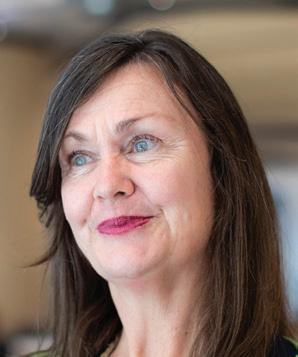
Although at any one time, one in 10 people will be undertaking caring roles, the work of unpaid family and friend carers has often been hidden, and at times stigmatised. While there is quite a lot of research on supporting student carers in the United Kingdom this research contribution touches on a sparsely researched field in Australia and represents a useful and relevant baseline to guide and evaluate the higher education sector responses to student carers. Student carers experience significant obstacles to entry and completion of higher
A key recommendation from this work is the integration of data collection on carers with the Higher Education Information Management System (HEIMS).
Universities need to exhibit increased awareness and understanding of carers as part of their outreach work. This approach includes extending outreach programs beyond schools to community groups and networks that serve carers, as well as shaping outreach media campaigns around carers.
Student carers highlighted a range of initiatives that could promote their success at university, including targeted scholarships or bursaries, and increased flexibility around study arrangements, special consideration, timetabling, and placements. These recommendations require attention from both universities and the Australian Government.
Further research is needed to identify, support, and monitor student carers. It remains crucial to listen to the voice of student carers to obtain a richer understanding of their needs and experiences at all stages of the student life cycle.
education studies and the report shines a robust and practical lens on how higher education institutions might support this marginalised student population. Although envisaged in a time before COVID-19, the research team were agile in adapting their approach to capture data on the overlapping and intersecting challenges of caring and studying during a pandemic. The good practices outlined in this report are well presented and set forth a clear path for the higher education sector to work towards in ensuring better outcomes for student carers.
This research sits inside a broader policy framework of recognition and support for family and friend carers. The policy ecosystem in this field is collaborative and active, which will mean that these research findings will be welcomed and amplified.
https://www.ncsehe.edu.au/publications/supporting-carers-australian-higher-education/
19 ACCESS THE FINAL REPORT ONLINE >
Understanding access to higher education amongst humanitarian migrants in Australia
Francisco Perales, Matthias Kubler, Ning Xiang & Wojtek Tomaszewski
Humanitarian migrants are a highly vulnerable social group and experience significant barriers to integration in the host country society. While access to higher education could improve the socioeconomic status of this subpopulation, engagement with the educational system by refugees has been limited, as has been its analysis. This study examined unique empirical evidence on enablers/barriers to higher education amongst humanitarian migrants in Australia, using data from sources such as the 2016 Australian Census and Migrants Integrated Dataset, to compare the higher education participation of recent humanitarian migrants in Australia to that of other migrants and the local-born population.
BACKGROUND
Between 2006 and 2016, Australia provided settlement opportunities to more than 145,000 humanitarian migrants. Despite the breadth of services offered by government and third-sector institutions, they remain among the most vulnerable population groups in Australian society.
An important channel for humanitarian migrants to successfully integrate into mainstream society is through participation in education, particularly higher education. Yet, individuals from humanitarian migrant backgrounds face multiple and unique barriers to education participation and success, over and above those faced by other migrant groups.
Few studies to date have empirically examined the ties between humanitarian migrant status and circumstances and higher education participation and attainment in Australia. This report was a first step in addressing this significant gap in knowledge.
OBJECTIVES AND METHODOLOGY
The key objective of this study was to quantify the level and determinants of higher education participation among
humanitarian migrants in Australia. This involved the analysis of three key data sets:
• 2016 Australian Census and Migrants Integrated Dataset (ACMID).
• 2016 Census of Population and Housing (the Census).
• Building a New Life in Australia (BNLA).
The first two sources provided data on the relative higher education participation patterns of humanitarian migrants, while the BNLA provided a data set for analysing the key determinants of participation by migrants.
KEY FINDINGS AND RECOMMENDATIONS
Key findings
The comparative analysis of the ACMID/Census data revealed that, despite their younger age profile overall, humanitarian migrants tended to enrol in higher education at later ages —typically after age 23—than people from other migrant groups or the Australian-born population. As a result, they were less likely to participate in higher education during normative ages (18–21 years).
20
Dr Lisa Hartley Senior Lecturer and Co-Director Centre for Human Rights Education, Curtin University
The findings of this report establish both how humanitarian migrants’ higher education participation and attainment compare to those of other groups in Australia, and identify socio-demographic characteristics associated with the chances of recently arrived humanitarian migrants participating in the Australian education/higher education system and attaining Australian education/higher education qualifications.
At a time when higher education institutions in Australia face significant funding challenges, this research highlights that particular equity student cohorts cannot be forgotten. Humanitarian migrants are not currently classified as a separate equity group, yet the findings highlight the importance of a commitment and investment into student-facing equity programs aimed at ameliorating the disadvantages they face in accessing higher education.
Humanitarian migrants were clearly disadvantaged in relation to higher education attainment: they were approximately half as likely as Australian-born individuals to have a university degree, a third as likely as family migrants and a fifth as likely as skilled migrants.
Humanitarian migrant women were more likely to participate in higher education than men, particularly in the younger age groups. However, this participation gap tended to narrow as humanitarian migrant men raised their participation levels as mature-aged students.
The analysis of the BNLA data revealed that, while only a small share of humanitarian migrants participated in postcompulsory education (including higher education) early into their settlement period, there was an upwards trend over the five-year observation window. By the end of the fifth year, 15.4 per cent of humanitarian migrants were enrolled in a course (other than an English language course) and 26.1 per cent had attained a qualification.
However, the engagement of humanitarian migrants with higher education was found to be modest. Of all humanitarian migrants enrolled in any course other than an English language course (i.e., a degree; a trade/technical course; or some other course/work experience), only 14.2 per cent pursued a higher education option. Similarly, of all completions, only 7.6 per cent involved a higher education course.
While multiple socio-demographic factors played a role in structuring humanitarian migrants’ engagement with the Australian education system, two factors consistently
The robust quantitative analyses underpinning the research give further strength to the need for the Australian Government to invest additional resources to gather data on the access and success of humanitarian migrants in higher education, including the need to obtain data from humanitarian migrants with temporary visas.

This research offers a unique contribution to the scholarship which has a particular focus on humanitarian migrants who had already entered the higher education system, rather than their experiences in the access phase. The findings of this research highlight that both English language proficiency and pre-arrival education level predict higher engagement within the Australian higher education system. This is significant as it reinforces previous calls for continued investment and commitment to English language programs.
predicted higher engagement. These were English language proficiency and pre-arrival education level, with developing English language proficiency and limited prior educational experiences emerging as core barriers to education/higher education participation and success in Australia.
The results revealed significant differences in the probability of university participation and engagement—studying a course; attainment; intentions for future study—by humanitarian migrants’ country of origin. The largest group of humanitarian migrants in Australia, people from Iraq, exhibited comparatively poorer outcomes than humanitarian migrants from other countries.
Summary of recommendations
These results bear important lessons to inform equity policy and practice. Taken together, they support the notion that humanitarian migrants experience unique barriers to participation and success in the Australian education system and should be the focus of policy attention.
An important policy intervention would be the creation of a new equity student group consisting of humanitarian migrant students, separate from that already existing for the non-English speaking background (NESB) students.
As part of this new focus, attention needs to be paid to humanitarian migrants with developing levels of English language proficiency, those entering Australia with low or no educational qualifications, and specific disadvantage relating to certain countries. Each one of these factors necessitates further research and program development.
https://www.ncsehe.edu.au/publications/access-higher-education-humanitarianmigrants-australia/
21
ACCESS THE FINAL REPORT ONLINE >
STEM Pathways: The impact of equity, motivation and prior achievement
Science, technology, engineering and mathematics (STEM) skills are promoted by the Australian Government as pivotal for Australia’s economic prosperity and future workforce. The participation of equity group students in STEM has implications for future labour market outcomes and contributions in an area that is viewed as vitally important for innovation and prosperity. This study used data which tracked a cohort of young people from ages 15 to 25 to explore core questions around equity student participation in STEM. The analysis provided new insights into STEM pathways for equity group students from secondary school, through post-school education, and into the workforce.
BACKGROUND
The growing importance of STEM skills in the workforce has focused attention on the extent to which participation in STEM subjects is open to all students, particularly those from disadvantaged backgrounds. This study investigated the STEM pathways of students from four equity groups: low socioeconomic status (SES), regional and remote, First-inFamily, and women in non-traditional areas (WINTA).
OBJECTIVES AND METHODOLOGY
The research was framed to answer three core questions:
• How do the STEM pathways of equity groups and nonequity groups differ?
• What factors facilitate equity group students to participate in university STEM courses?
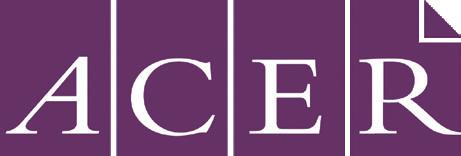
• Do the factors influencing young people’s university STEM participation differ between equity groups and non-equity groups?
The analyses examined how experiences of students in equity groups differed from those of non-equity students, using data from the Longitudinal Surveys of Australian Youth (LSAY) and the Programme for International Student Assessment (PISA), which has data linked to LSAY, to describe
the type of STEM education and occupational pathways undertaken by young people in Australia, tracking these pathways from early adolescence into the workforce.
In conjunction with this analysis, an investigation of factors established in the research literature to be important determinants associated with pursuing STEM in higher education was undertaken to examine the notion of a STEM "profile" or STEM "identity".
KEY FINDINGS AND RECOMMENDATIONS
Key findings
In the analysis of pathways into and through STEM for equity groups, the findings from this study show:
• A smaller proportion of equity group students went on to study STEM at university, in comparison with nonequity students.
• When equity groups did make the transition to university, the proportion who enrolled in a STEM field was similar to the average across all university entrants, with approximately one in four university commencers enrolling in a STEM field.
• The transition rate to STEM for women entering university (i.e., WINTA students) was about half the rate
22
Julie McMillan, Sheldon Rothman, Sarah Buckley & Daniel Edwards
of the national average. Less than one in eight women from this cohort who commenced university did so in a STEM field.
• Once enrolled in STEM at university, equity group students tended to have lower rates of completion by age 25. In general, STEM completion rates for equity groups were lower than the completion rates for other fields of education (except for WINTA). This was especially the case for students from low SES backgrounds, where one third of this group had not completed their STEM degree by age 25.
• For WINTA students, degree completion rates were very high compared with national averages and other equity groups and, unlike other groups, STEM completion rates for women were comparable to rates of completion in other fields.
• STEM degrees did not necessarily result in STEM occupations. Less than one in three STEM university commencers transitioned into a STEM occupation. For students from low SES backgrounds and WINTA students, the transition rate was even lower, at around one in four.
The analysis of factors contributing to the outcomes, specifically for entry into university, found:
• Mathematics achievement at age 15 is a very strong predictor of entry to university, but not necessarily for STEM pathways.
• Equity student participation in two higher level mathematics subjects in senior secondary school was notably lower than among non-equity students, creating
a "pipeline effect", as students without two or more subjects in mathematics and science had lower rates of STEM participation.
• "Instrumental motivation" and "Self-concept" in mathematics (both measured through PISA at age 15) were significant predictors of subsequent higher education study in a STEM field for the cohort as a whole, with the former important for all equity groups, and the latter only for low SES, First-in-Family, and women, and not apparent for regional and remote students.
Summary of recommendations
Opportunities to influence these three points in the life cycle so as to improve outcomes for students from underrepresented groups include:
• In the early and middle years of schooling, pedagogical approaches should be focused on demonstrating the practical importance of mathematics, with the aim of increasing instrumental motivation in mathematics and STEM subject uptake among equity students.

• In the senior years of schooling, policies and interventions to encourage university participation among equity groups should continue and be refined, alongside a demonstration of the benefits of mathematics competency across a broad spectrum of employmentrelated and practical problem-solving issues.
• In the later years of university, opportunities for work placements, internships, and/or Work Integrated Learning (WIL) in STEM fields is critical for developing pathways into the STEM workforce.
Julie McMillan, Sheldon Rothman, Sarah
and Daniel
have conducted an insightful and important piece of work shining a light on the STEM pipeline and employment outcomes for equity groups across Australia. Using data available through the LSAY and PISA, student cohorts including low SES, First-in-Family, regional and remote students and women in non-traditional areas have been followed over a 10-year period from the age of 15 and compared to non-equity groups with respect to STEM. The authors specifically sought to better understand what factors facilitated participation in STEM at university, and what differences are observed between different groups.
Perhaps not surprisingly, the importance of mathematics education during middle and senior secondary school emerges as a critical theme. In addition to reporting several contributors to a leaky pipeline, the authors’ most exciting and optimistic finding is the identification of
significant factors observable during middle school that are strong predictors of persistence in STEM. These include that students' instrumental motivation in mathematics (the extent to which a student sees the utility of mathematics in their lives) corresponds to significant retention in STEM studies through to university.
The authors examine the education life cycle and reinforce the importance of engaging with undergraduates on WIL opportunities, to ensure they see the relevance of STEM to their professional lives.
This report provides food for thought for leaders both in policy and our institutions if we are to take the best steps for lifting STEM workforce outcomes, not only for equity groups, but all potential STEM students across the country.
https://www.ncsehe.edu.au/publications/stem-pathways-equity-motivationprior-achievement/
23
ACCESS THE FINAL REPORT ONLINE >
Dr Christopher Thompson Associate Professor School of Chemistry, Monash University
Buckley
Edwards
Equity through complexity: Inside the “black box” of the Block Model
Jen Jackson, Kathy Tangalakis, Peter Hurley & Ian Solomonides
This study investigated an innovation in higher education that has achieved demonstrable results for equity students: the Block Model at Victoria University. It looked inside the “black box” of the Block Model, focusing on its positive impact on first year student outcomes in science, technology, engineering and mathematics subjects. The research included interviews with leaders, academics, and students at VU about why the Block Model has improved retention and learning. The findings show the Model’s impact comes not only from its design, but also from the complex context of its implementation. The study’s analysis can assist other universities in recognising and managing complexity in equity-focused innovations.
BACKGROUND
In the Block Model at Victoria University (VU), subjects are delivered in intensive four-week blocks—one after the other—instead of concurrently, as per the traditional semester model. VU introduced the Model for all first year subjects in 2018 and is now expanding it across all courses. Student retention and outcomes in first year have improved significantly since its introduction, with the greatest gains in pass rates and learning achieved by equity students — an important consideration as VU has one of the highest enrolments of equity students in Australia.
This study focused on the impact of the Block Model on retention and outcomes for equity students in first year science, technology, engineering and mathematics (STEM) subjects. STEM subjects present particular equity challenges, as reflected in equity students' underrepresentation, but also have high potential for student-centred, inquiry-based learning, which is a feature of the Block Model design.
OBJECTIVES AND METHODOLOGY
The study commenced with quantitative analysis of student outcomes from two pre-Block and two post-Block first year STEM cohorts. The analysis compared results for equity group students using student management system data (full student cohorts), and the Student Experience Survey (SES). Equity students comprised around three-quarters of each data set.
The qualitative phase of the study comprised three key components:
• Interviews with seven selected VU leaders involved in Block Model implementation.
• Focus groups with 11 VU academics teaching first year STEM subjects in Block Mode.
• Focus groups with 10 students who completed first year STEM subjects in Block Mode.
The qualitative data was analysed to explore hypotheses generated at the beginning of the study in relation to how the Block Model improved outcomes for equity students in first year STEM.
KEY FINDINGS AND RECOMMENDATIONS
Summary of key findings
The quantitative analysis demonstrated two facets of the Block Model’s success:
• The unit failure rate among all students declined by 9.2 percentage points between the most recent pre-Block (2017) and post-Block (2019) cohorts, with the equity students’ fail rate declining by 9.8 percentage points over this time.
24
Professor Andrew Norton Professor in the Practice of Higher Education Policy Centre for Social Research and Methods, Australian National University

NCSEHE Adjunct Fellow Dr Matt Brett once said that "equity is everyone’s business". This study, by Jen Jackson, Kathy Tangalakis, Peter Hurley and Ian Solomonides shows how that is true of Victoria University’s introduction of the Block Model, where students take subjects sequentially rather than simultaneously, and the classes are more personal and interactive than previously. Focusing on the Model’s implications for STEM subjects, the report demonstrates that students in general benefitted from it, but equity students benefitted the most compared to their previous outcomes.
Pedagogical changes cannot deal with all the issues equity students face, but teaching is the single most important way that universities can practically make a difference
• General student satisfaction with first year STEM units also improved, with survey items relating to teaching quality showing a steady improvement from 2016 to 2019, with the only survey item showing a decline for equity students relating to the perception of whether unit workload was manageable.
The qualitative analysis explored questions around the hypotheses about the Block Model’s impact:
• The Block Model is informed by a rigorous base of theory, evidence and reflection: The Block Model is based on similar models from North America and was adapted to VU’s context in consultation with staff, and drawing on equity-focused research.
• The Block Model is situated in a supportive organisational context: The establishment of a separate, interdisciplinary First Year College (FYC) at VU is widely seen as critical to the Block Model’s success, with the challenge now to extend this success.
• The Block Model prioritises strong relationships that enhance teaching and learning: Improved relationships between academics and students was a strong theme in interviews, facilitated by smaller classes and intensive engagement.
• The Block Model is being implemented by expert higher education practitioners: FYC academics were selected because of their passion for teaching first year students, and deliberately organised into a community of practice. This activated existing teaching expertise and established a space in which expertise is developed.
• The Block Model enables time to be used more effectively for learning: Students and academics emphasised the benefits of focusing on one subject at a time, with many students saying this had reduced their anxiety about study.
to equity student outcomes. Over the last decade, national completion rates among low SES students have deteriorated, making this a priority area. Some attrition is due to academic failure and student disengagement, which could be reduced with better program design.
Using interviews with students and staff, this report unpacks how the Block Model helped increase pass rates, retention, and student satisfaction. Focusing on one subject at a time helped students to manage their workload and commitments, but smaller, more intensive classes were also a vital part of the model’s success. This aspect will interest universities not planning on shifting to Block Mode, but which have the same need as VU to improve student outcomes.
The intensity of the Block also necessitates well-planned pre-class activities, scaffolded assessments, and a constant pace of learning. However, the rapid pace of teaching was demanding for many students and staff.
• The Block Model involves an engaging curriculum that builds skills for learning: The Block Model required all units to be redesigned. Most STEM subjects have been successfully transformed to offer more action learning and engagement, and all are undergoing continual revision and renewal.
• The Block Model enables learning progress to be more actively monitored: Students reported increased confidence after obtaining results for their first Block. Innovative, regular assessment and feedback— underpinned by better data use by staff—enables students to demonstrate knowledge in diverse ways, although some challenges remain in calibrating assessment.
Summary of recommendations
VU’s introduction of Block Model shows that innovation in teaching equity students is achievable but that it involves considerable complexity. VU’s experience of the Block offers insights into how other institutions can manage complexity in their own innovations.
For policymakers, the Block Model shows the importance of regulatory environments that actively support innovation, especially as financial necessity generates more institutional experimentation. It also reaffirms that a quality focus in teaching and active learning can improve student engagement and skill acquisition, especially for equity group students.
https://www.ncsehe.edu.au/publications/black-box-block-model/
25
ACCESS THE FINAL REPORT ONLINE >
Australian universities and educational equity for student veterans
Transition from the military to the civilian word is a time of upheaval for veterans. Most do well, while some struggle with social isolation, loss of identity, and the challenge to find new purpose. One way to address these challenges is to support the inclusion and education of veterans at universities. Existing research on veterans at Australian universities has highlighted some of the difficulties facing student veterans' participation. There is no information about how Australian universities recognise, support and govern student veterans. This study investigated how Australian universities, and key government departments, addressed the educational equity needs of student veterans. It used interviews, focus groups and document analyses to provide evidence-based recommendations for future policy.
BACKGROUND
Every year, approximately 6,000 veterans discharge from the military and transition back to civilian life. The Department of Veterans’ Affairs (DVA) reports that most of these discharges are voluntary, with the largest proportion of transitioning members having fewer than 12 years of service. Education participation is a significant point of transition, with Australian Defence Force (ADF) records showing that 11 per cent of veterans adopt tertiary education pathways within 12 months after separation. However, the Australian higher education system does not officially identify student veterans and there is a limited awareness of veterans' needs.
OBJECTIVES AND METHODOLOGY
This study sought to answer a key research question: How do Australian universities recognise, service, and govern the educational equity needs of student veterans?
This project adopted a mixed methods approach and consisted of three key elements:
1. Desktop review of programs that aim to support veteran students nationally and internationally on university campuses. This review included the peer support work
being undertaken by student veteran organisations such as the Australian Student Veterans Association (ASVA).
2. Focus groups with admission, transition, equity, or diversity unit staff in universities in South Australia, Victoria, Queensland, and New South Wales.
3. Examination of how government policy conceives of higher education as a transition pathway through brief review of policy documents and consultation with relevant departmental officers in DVA and ADF
KEY FINDINGS AND RECOMMENDATIONS
Key findings
A summary of key findings shows that:
• Australian student veterans were often acknowledged but not well understood by universities, and in varying ways and degrees.
• There was genuine goodwill and intent in the university sector, but military skills and experience were not adequately recognised or incorporated into university admission decisions.
• Tertiary admissions frameworks were variable and would benefit from a national coordinated approach, with only limited specific veteran entry programs in operation.
26
Ben Wadham, Melanie Takarangi, Andrew Harvey, Lisa Andrewartha, Brad West, Matthew Wyatt-Smith, Jodie Davis, Elaine Waddell & Ella Moeck
• Where universities did not have student veteran-specific programs and processes, they were using existing equity and transition process to support student veterans.
• Universities had support pathways such as "elite athlete programs" which can be emulated to identify, promote, and support the needs of veterans studying at university.
• There were few cases of veteran identifiers in university admissions. Universities did not collect demographic or academic data.
• There was no national framework for supporting veterans in higher education (e.g., a GI Bill) and financial support for student veterans was limited.
• Exposure and access to opportunity in higher education was unequal in the ADF across rank and corps, nor considered evenly across the ADF during the transition phase.
• There was no nationally consistent framework for mapping and applying credential for veterans seeking to engage in higher education, further limited by its conception as part of a rehabilitation framework.
• Articulation of policy across the ADF, DVA, and the Department of Education, Skills and Employment (DESE) was inconsistent or missing.
Summary of recommendations
A summary of key recommendations includes:
Government, ADF and DVA
• Establish a national policy for veteran access to higher education (e.g., a GI Bill).
• ADF to establish equal opportunity for members, for all ranks and corps, to include higher education as part of transition.
• Develop a national framework for credential mapping between the ADF and universities.
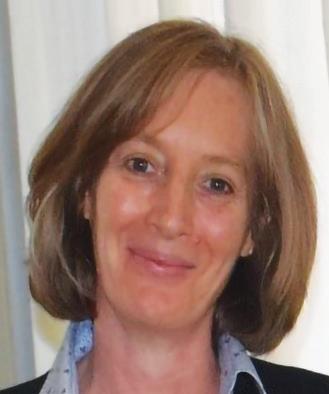
• The ADF, DVA, DESE and the higher education sector establish a national student veteran working group.
• DVA and the ADF to widen their support for higher education as a transition pathway.
• Engage DESE in the assessment and support of student veterans.
Universities and the higher education sector
• Universities and tertiary admissions centres (TACs) to develop a national tertiary admissions framework for veteran admission.
• Develop flexible timetabling and study plans for veterans to support university engagement, attendance, retention, and degree completion.
• Universities to establish veteran-specific entry programs.
• Develop a veteran identifier in university admissions processes.
• Provide student veteran access to transition skills and opportunities.
• Record demographic and academic data on student veterans.
• Reorient universities toward student veterans’ needs, including study plan flexibility; staff education on student veterans; and veteran-sensitive university processes.
• Emulate university support pathways such as "elite athlete programs" to identify, promote, and support the needs of veterans studying at university.
• Universities to provide scholarships and financial support opportunities for student veterans.
• Support the presence of ASVA chapters on campus.
• Build university leadership support for supporting student veterans.
• Establish and support campus support, including veteran support officers.
• Universities to create designated spaces on campus for student veterans.
This study documented and synthesised how student veterans are recognised, understood and supported across the Australian university sector. The subsequent report outlines best practice internationally and contrasts and compares best practice with the Australian context. It is focused on how the university sector seeks to attract student veterans, to record information about their university experience, and to support their equity needs. The report highlights the challenges many veterans face in the transition from military to civilian life and details the role that universities can play in alleviating the difficulties associated with this transition. Keeping in mind that university can be a difficult place for veterans to integrate, the authors interrogate the problem, focusing on access and equity in higher education and considering how access and equity can be increased via universities working with industry; that is, the ADF and associated partners such as the DVA. The report demonstrates that, whilst there are some Australian university-based programs designed to develop veteranfriendly campuses and respond to student veterans as a non-traditional population group, a great deal more work is required if Australia is to meet international standards.
This valuable research makes extensive recommendations that are summarised here, which will support the university sector to appropriately recognise the unique and diverse needs of veteran students, acknowledge their prior learning and national service, and understand the potential benefits to other students of creating veteranfriendly campuses.
https://www.ncsehe.edu.au/publications/australian-universities-student-veterans/
27
>
ACCESS THE FINAL REPORT ONLINE
Dr Donna Bridges Senior Lecturer School of Humanities and Social Sciences, Charles Sturt University
Housing matters: Understanding the housing experiences of undergraduate regional, rural and remote students living outside the family home
Although regional, rural and remote students are far more likely to live outside the family home than their urban counterparts, insight into the impact of housing on their participation in higher education remains largely anecdotal. This study analysed the impact of housing on these students’ participation in higher education. It addressed issues relating to spatial, relational, temporal, and financial factors in the participation decision, using survey and interview data from regional and remote students at one Australian university who were living outside the family home.
BACKGROUND
The lower rates of higher education access, participation and completion by regional, rural and remote (RRR) students compared to their metropolitan peers led to the launch of the National Regional, Rural and Remote Tertiary Education Strategy in 2019 which contained a suite of measures to address this gap. While the Strategy identified finding and financing appropriate accommodation as a challenge for RRR students, it did not include measures to fully address the issue, reflecting the relative dearth of scholarly literature about the accommodation experiences of RRR students who relocate. This study was designed to begin to address this dual gap in the policy and scholarly literature.
OBJECTIVES AND METHODOLOGY
The key objective of the study was to understand how RRR students’ experiences of housing impact upon their participation in higher education. It sought to identify both constraining and enabling factors for RRR tertiary students’ educational participation due to housing, as well as the specific housing challenges faced by students who experience multiple forms of disadvantage.
The study surveyed undergraduate students at the University of Newcastle (N = 502) who had relocated to Newcastle from a regional or remote location.
Follow-up interviews were then conducted with a subset of 27 participants to provide greater depth and contextualisation of student experiences.
KEY FINDINGS AND RECOMMENDATIONS
Key findings
Students living in on-campus accommodation generally reported higher levels of satisfaction with their residence than those living in the private rental sector. Those who lived alone or with relatives in private accommodation reported higher satisfaction with their residence than those living with housemates. They also reported significantly lower impacts due to both their residence and work commitments on their studies. Students in private settings cited factors such as the lack of a quiet space to study as a challenge.
On-campus accommodation was not appropriate or desirable for all participants. Many of those for whom on-campus accommodation was not appropriate fit into one or more equity groups (for instance, non-traditional students, students living with disability).
Financial support from families was a significant enabling factor for students, in large part due to the reduced pressure to work longer hours. Students working one to 10 hours a week reported little impact on studies and those working more than 11 hours reported a significant impact on studies.
28
Julia Cook, Matthew Bunn, Penny Jane Burke, Hernán Cuervo, Stephanie Hardacre & Jace Blunden
There was a strong intersection between low socioeconomic status (SES) students and RRR status, with low SES students more likely to be from outer regional and remote areas. Students from remote areas were found to be more likely to live in on-campus accommodation and receive income support from a scholarship payment.
Summary of recommendations
Funding and income support (recommendations for Services Australia)
• Expand the Fares Allowance to allow RRR students to secure appropriate accommodation ahead of commencement.
• Reduce the earnings requirements under the concessional workforce test for independent Youth Allowance and review the recent changes to the parental means test cut-offs (as per the Napthine Review).
• Tailor income-tested support payments such as Youth Allowance to allow RRR students to support themselves while working a maximum of 10 hours a week.
Navigational advocate (recommendations for higher education institutions)
• Institutions should foster specific positions intended to work with students to make sense of the formal, informal, and unexpected difficulties associated with the transition to university.
• Establish a widening participation framework to ensure students have access to opportunities to sustain their sense of connection and belonging as valued members of the university community.
Recommendations for student accommodation providers and higher education institutions
• Accommodation providers should reserve places and minimise application costs for RRR students, with priority given to those from remote and very remote areas.
• Providers should utilise lessons learned from the COVID-19 pandemic to develop policies and procedures to aid students who need to leave during semester time.
• Higher education institutions should acknowledge that inadequate internet access may be a challenge for RRR students when they visit home during weekends and semester breaks.
Recommendations for the Department of Education, Skills and Employment

• Expand demand driven funding for RRR students irrespective of where they choose to study.
• Specify the nature of assistance in the indicator for accommodation assistance (on-campus or off-campus) in the framework for assessing university support services for regional and remote students on transition to university.
• Adjust the classification of remoteness to account for accessibility, rather than just distance.
• Ensure that policies concerning RRR students reflect the diversity of this student population and redistribute resources on the basis of intersectional inequalities and cumulative disadvantage.
Recommendation for state and territory governments
• Consider updating residential tenancy regulations to ensure minimum standards of quality are met and maintained for rental properties.
In this report, Julia Cook and her team explore the importance of housing for RRR students.
With student retention becoming more and more important for universities and government, the research highlights how the availability and affordability of housing is an important part of the decision-making process of RRR students and how the costs of sustaining both on- and off-campus accommodation puts pressure on students to work. As students work more, the report finds, the greater the impact on their studies.
The research reports the results of a survey of 500 RRR students at the University of Newcastle, finding that such students are generally more satisfied with on-campus accommodation than off-campus, private rental housing where students are often vulnerable in a complex and volatile private rental system. Perhaps the most useful aspect of the report is the qualitative work exploring the experiences of 27 RRR students relating to their choice of accommodation and the impact of that accommodation on their life.
The report concludes with an excellent discussion of the key issues affecting RRR students and provides a number of useful recommendations for policymakers and universities that would help support RRR students. The research highlights the importance of student housing and its impact on student retention and performance, both of which are key concerns for the sector.
https://www.ncsehe.edu.au/publications/housing-regional-rural-remote-students/
29
ACCESS THE FINAL REPORT ONLINE >
Professor Steven Rowley School of Accounting, Economics and Finance Curtin University
Comfort with discomfort: Exploring Wadjella educators' engagement with Indigenous students
Jonathan Bullen, Lynne Roberts, Cheryl Davis, Braden Hill, Tamara Lipscombe & Djandunmarra Cox
Despite growing numbers of Indigenous students enrolling in tertiary study, retention figures continue to differ significantly between Indigenous and non-Indigenous students, highlighting the need to develop effective retention strategies. While the inclusion of curricula designed to develop and facilitate cultural competence and safety continues, equivalent growth in the development of “Wadjella” (non-Indigenous) academics’ capability to effectively deliver this curriculum has not occurred. This study explored educator and student perspectives at two Australian universities, providing critical insight into educator engagement and its impact upon Indigenous student retention.
BACKGROUND
Indigenous people are underrepresented in Australian higher education. Around 3.3 per cent of Australia’s population is Indigenous, yet only 1.3 per cent of higher education students were Indigenous in 2018. Indigenous student completion rates (~47%) were also substantially lower than those of non-Indigenous or “Wadjella” students (~74%). National imperatives to close this gap have led to a broad range of interventions within higher education. However, there has been a noted discomfort among Wadjella educators in both teaching Indigenous content and Indigenous students. This study examined this educator discomfort, moving towards a deeper exploration of the experiential, psychological, and contextual factors associated with Wadjella educators’ engagement with Indigenous students in both Indigenous-focused and "mainstream" learning environments.
OBJECTIVES AND METHODOLOGY
The study focused on Wadjella educators’ engagement and interaction with Indigenous students in both specifically Indigenous-focused learning environments and mainstream learning environments, with the aim of understanding the experiential, psychological, and contextual factors related to this engagement. The research was conducted at Curtin University and Edith Cowan University in Western Australia.
The objective of this research was to provide evidence on seven central questions:
1. How does Indigenous and Wadjella educators’ engagement with Indigenous students vary across Indigenousfocused and mainstream learning environments?
2. How do Wadjella educators conceptualise their engagement with Indigenous students?
3. What are the concerns and considerations held by Wadjella educators about their engagement with Indigenous students?
4. What are the barriers that Wadjella educators perceive in teaching and interacting with Indigenous students?
5. How do Indigenous students perceive their interactions with Wadjella educators?
6. How do institutional factors, such as a Reconciliation Action Plan, and other formalised policy initiatives, influence the ways Wadjella educators engage with Indigenous students?
7. How could higher education institutions better support Wadjella educators’ capacity to engage with Indigenous students?
The research was carried across three phases:
Phase 1: Preparation, including ethics clearance; a literature review and environmental scan, and an audit of courses taken by Indigenous students.
30
Phase 2: Interviews with Wadjella and Indigenous academics (nine interviews) and Indigenous students (20 interviews) across faculties and Indigenous centres. Phase 3: Data analysis and development of recommendations for skills development among academic staff.
KEY FINDINGS AND RECOMMENDATIONS
Key findings
The student context: Indigenous students’ contextualising and foregrounding of their lived experiences as Indigenous Australians played a significant role in how they saw, and positioned, themselves as students. While Indigenous and Wadjella academics with significant lived experience embraced this perspective, Wadjella academics in mainstream contexts, or with limited life or teaching experience with Indigenous people, were more inclined to prefer to treat all students the same.
Uncertainty: Wadjella academics in mainstream areas were hesitant to engage with the complexity of experiences in diverse contexts, with uncertainty around "doing the wrong thing", rather than engaging and learning from "mistakes".
Identity and Identification: For Indigenous students, acceptance and value for their identity and cultures is important in general, but also specific to the learning context. Academic responses to this issue reflected the above two themes, with educators with more experience in the Indigenous context more ready to adapt materials and teaching approaches to accommodate students.
Relationships: Indigenous and Wadjella educators teaching in Indigenous contexts placed importance on the student–teacher relationship as both significant in its own right, and as providing a conduit to teaching/learning. In this way, relationships presented as part of a way of knowing and doing, and as a fundamental teaching pedagogy, generally not observed in the mainstream teaching environments.
Lived experience: Exposure and immersion in Indigenous culture played an important role in shaping attitudes and approaches of Indigenous academic staff and Wadjella academic staff with lived experiences of Indigenous culture.
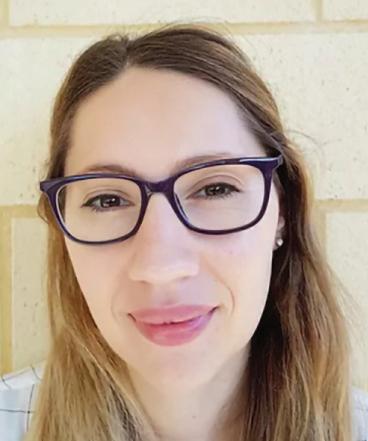
Summary of
recommendations
Universities need to work to:
• Support Indigenous cultural awareness among Wadjella academic staff to ensure an in-depth understanding of the Indigenous student context; a focus on educator engagement, teacher–student relationships, and support for Indigenous students; a growth mindset among educators and tolerance for uncertainty and ambiguity; and engagement with the philosophies of equity, particularly in the Australian Indigenous education context.
ACCESS THE FINAL REPORT ONLINE >
• Facilitate meaningful opportunities for staff and Indigenous communities to interact more generally.
• Undertake more research into key issues in Indigenous student engagement, including educator uncertainty and mindset in the Indigenous context; the influence of lived experience and cultural immersion on the quality of learner-centred relationships; and the development of metrics on educator capacity to engage effectively with Indigenous students.
• Ensure the student voice is imperative in all further research in this area.
Dr Bep Uink Research Fellow Kulbardi Aboriginal Centre Murdoch University
In this report, the authors identify the discomfort and barriers Wadjella academics face when teaching Indigenous university students. The authors pair these findings with a comparative analysis of the experiences of Indigenous academics and students taught by Wadjella academics. This comparison provides unique insight into the points of divergence in Indigenous and non-Indigenous academics’ approaches to teaching; both Indigenous academics and students are open to making mistakes within student–teacher relationships, where there is reluctance from Wadjella academics toward this mode of learning with a pressure to "do it right".
This research is contextualised within an increasing push for Indigenous content in university curricula, with a concern being that Wadjella academics may be underprepared to teach such content. Likewise, the authors point to the emerging enrolment–completion gap in higher education, where Indigenous student enrolments greatly outweigh completions. A key recommendation is that institutions develop ways to support Wadjella academics to develop understanding of the Indigenous student context as well as the philosophies which underlie equity initiatives.
A key finding is the ways in which a strong, supportive and authentic student–teacher relationship can support Indigenous higher education retention: as a conduit for making curriculum accessible, a mechanism for making staff approachable, and a facilitator of holistic student support. Wadjella academics should be supported to develop these pedagogical relationships.
The report fills an evidence gap around Indigenous student retention by broadening inquiry to non-Indigenous academics. Findings and recommendations are timely given the sector's broader commitment toward a whole-ofuniversity approach to support Indigenous student success.
https://www.ncsehe.edu.au/publications/wadjella-educators-engagementindigenous-students/
31
Exploring benefits and challenges of online Work Integrated Learning for equity students
Amani Bell, Kathryn Bartimote, Lucy Mercer-Mapstone, Gulwanyang Moran, James Tognolini & Nora Dempsey
Recent work has revealed alarming discrepancies in access to Work Integrated Learning (WIL) between equity and non-equity students, specifically in relation to students from remote areas, low and middle socioeconomic status (SES) students, and Indigenous students. This study explored the benefits and challenges of online WIL for equity students in Australia and the United States of America (USA), as reported by students and educators. It included a collaboration with the Virtual Student Federal Service (VSFS) in the USA, where over 5,000 students have participated in “virtual internships” with USA Government agencies in the past 10 years, working remotely as VSFS eInterns from their university, home, or other locations, and reporting by email, phone, or video chat to their workplace educators.
BACKGROUND
In 2019, a Universities Australia audit of WIL revealed alarming discrepancies in access to WIL for students from remote areas, students from low and middle SES backgrounds, and students from Indigenous backgrounds. These groups all had WIL participation rates more than five percentage points below the average rate, with equity students citing time pressures, financial responsibilities, caring commitments, and geographic location as barriers to their uptake of WIL.
This study investigated whether online WIL might be one way of overcoming these barriers. It explored the benefits and challenges of online WIL for students from equity groups in Australia and the USA, as reported by students and educators. This included a collaboration with the VSFS in the USA, where over 5,000 students have participated in “virtual internships” with USA Government agencies in the past 10 years, working remotely as VSFS "eInterns" from their university, home, or other locations, reporting by email, phone, or video chat to their workplace educators.
OBJECTIVES AND METHODOLOGY
The study addressed four research questions in relation to online WIL in Australia and the USA:
• What are the benefits and challenges of online WIL reported by students from equity groups?
• What are the benefits and challenges of online WIL reported by educators?
• What are the commonalities and differences between online WIL in the USA versus Australia?
• How might online WIL in Australia be enhanced and systematically supported to better meet the needs of equity students and educators?
Primary data collection included a questionnaire survey of 289 students, and interviews with 32 students and 15 educators, all of whom had participated in online WIL in the past decade. The first three questions formed the basis of findings with the last question acting as a framing device for recommendations from the research.
32
KEY FINDINGS AND RECOMMENDATIONS
Key findings
Benefits and challenges of online WIL reported by students from equity groups:
• Students’ reported benefits included employability skills; meaningful work; affordability; and flexibility when coping with physical and mental health issues.
• Challenges included missing out on workplace interactions; digital access; and finding a private space.
• Overall, equity students reported a greater number of gains from online WIL than non-equity students; however, differences were not detected between equity groups.
Benefits and challenges of online WIL reported by educators:
• Educators viewed students from diverse backgrounds as positive contributors to the workplace.
• Benefits for educators included better meeting the needs of diverse communities/clients; flexibility related to their own work schedules; and a view that it was a rewarding experience.

• Challenges for educators included giving feedback and a high workload and not being able to replicate some aspects of in-person work experiences.
Commonalities and differences between online WIL in the USA versus Australia:
• Students in Australia reported receiving structured, interpersonal support while on placement more often than those in the USA.
• There were no between-country differences in the gains reported by students. Rather, it was the type of support received that was consistently related to students’ perception of what they gained from placements.
• In the USA, educators were more likely to be aware of diversity issues and to view online WIL as one way of achieving workplace diversity.
Summary of recommendations
How might online WIL in Australia be enhanced and systematically supported to better meet the needs of equity students and educators?
The research generated the following recommendations:
• Australian universities should continue to explore largescale, coordinated online WIL opportunities.
• Universities and workplaces should recognise and support educators and other staff involved in providing online WIL.
• Professional development for educators provided by universities and workplaces should be updated to include online WIL. This should include taking a strengths-
based view of equity and diversity issues and providing guidance on allowances and adjustments for disability in the online context.
• Educators, students and other stakeholders should codesign inclusive online WIL. Inclusion to be systemic, rather than tokenistic, and occur at degree and unit of study levels.
• Universities Australia should update their policy/white paper on WIL to assess the potential for increases in online WIL in view of the COVID-19 pandemic, the recent Innovative Research Universities’ (IRU) trial, and the findings of this study.
• Universities should include online WIL explicitly as a potential form of WIL in teaching and learning policies.
• Educators should engage with best practice design for online WIL, including the preparation of guides for the rollout of successful online WIL experiences.
Associate Professor
Bringing together scholars from Australia and the USA, this research explores the challenges and benefits of online WIL opportunities. Through a comparative study, it seeks to identify the commonalities and differences between online WIL in the USA, where such practices are well entrenched, and Australia where they are emerging.
In addition to identifying the achievement of potential gains associated with participation in online WIL, the project seeks to identify the supports associated with realising these gains. Recommendations for expanding online WIL offerings in a considered and systematic way are developed by exploring the perspectives of multiple stakeholders, including students from equity groups and the educators who support and supervise their participation.
This research is topical and timely given the disruptions to higher education caused by the global COVID-19 pandemic and the need to move beyond ad hoc emergency responses toward a more equitable and inclusive version of WIL. The authors argue this requires adopting a strengths-based approach to diversity and instituting support systems to overcome technical challenges which may limit participation and ensure online WIL practices are sufficiently attentive to the need to nurture new ways of building teams, relationships, and support networks online. They also stress that it requires recognition of the workload for educators associated with planning, delivering, and supervising high-quality online WIL opportunities which meet the needs of students, workplaces, and the higher education sector.
https://www.ncsehe.edu.au/publications/online-work-integrated-learning-
33
ACCESS THE FINAL REPORT ONLINE >
Deanna Grant-Smith School of Management Queensland University of Technology
equity-students/
Investigating transitions to university from regional South Australian high schools
Sharron King, Cathy Stone & Chris Ronan
This study examined why high-achieving students from regional South Australia were transitioning from school to university at lower rates than students in metropolitan areas. This comparative research explored the extent to which the factors identified in a previous New South Wales (NSW) report transcended Australian state borders, as part of the development of a national response to lower numbers of regional student transitions to university across Australia.
BACKGROUND
Across Australia, university participation is lower in the regions than metropolitan areas, with 20.5 per cent of people in Inner Regional areas obtaining a bachelor degree compared with 39.7 per cent in metropolitan communities. Attributable factors include the historic concentration of people and higher education infrastructure in metropolitan areas and the relative size and remoteness of Australia’s regional communities. This is a pronounced problem in South Australia (SA) where over 77 per cent of the population reside in Greater Adelaide — the location of the state's three major universities.
OBJECTIVES AND METHODOLOGY
Given SA’s unique demographic and geographical context, the key research question in this study was: Why are significant numbers of high-achieving school students in identified areas of regional SA choosing not to transition to university directly from school?
Subsidiary questions examined the impact of major influencers and barriers to participation, student housing and accommodation arrangements, other post-school options, and the availability of effective online learning platforms in shaping this outcome.
The research questions were explored through surveys and focus group discussions among Year 11 and 12 students, teachers, career advisors, and other school educators across 14 schools.
The study was framed in comparison to a 2017 NSW study conducted by Robyn Quin, Cathy Stone and Sue Trinidad.
KEY FINDINGS AND RECOMMENDATIONS
Key findings
The study found there were similarities and differences between SA and NSW in terms of the ability of their regional students to access and succeed in higher education settings:
Similarities
• Cost played a significant role in decisions about university participation, particularly relocation and accommodation/living costs.
• Students generally lacked knowledge on financial supports such as scholarships and government benefits.
• Regional students had concerns about relocating for university, including loneliness; transition costs; and uncertainty around relocation and accommodation.
• The popularity of a gap year was high in both states.
• Access to adequate career advice and information was lacking, from both schools and universities.
• The regional students in an ATAR stream largely had aspirations towards university.
• Parental aspirations were high — most students reported that their parents were supportive of their aspirations.
Differences
• There was a widely-held perception amongst both students and school educators in SA that "local" is not as good as "city" when it comes to the quality of the university experience and ultimate qualification. This is consistent with the differences in the regional infrastructure between the two states.
34
• University outreach visits were not seen as helpful by either students or school educators in SA.
• Students and staff found visits to cities and university campuses much more helpful.
• In SA, boys appeared to be under more pressure than girls to "stay local" through undertaking a trade, finding local employment, or working on a family farm, rather than go to university. Additionally, the lack of course/subject availability at local campuses was perceived as an obstacle to pursuing a course of study locally.
• Fewer than 10 per cent of the fathers of students in the SA study had been to university, compared with 25 per cent of mothers, which may have impacted on parents’ and boys’ university aspirations.
• The greater geographical isolation of SA regional students resulted in fewer opportunities for transition to university for these students.
Summary of recommendations
Recommendations for universities
• Work with regional schools and their local communities, seeking input from all community stakeholders, to determine how university visits to schools can be improved and made more relevant to their needs.
• Ensure students, parents, and schools are proactively directed to accurate and easy-to-access information about costs, financial support, scholarships, and other practicalities of going to university.
• Expand peer mentoring programs to encompass transition support for both prospective regional students and first year undergraduates.
• Seek to collaborate with schools, local communities, and industries to develop innovative ways to increase the range and diversity of courses available to those living in regional areas.
• Work closely with Regional University Centres (RUCs) and regional campuses, with a view to encouraging and supporting online university options for regional high school students using their face-to-face support/ contact/technology infrastructure.
• Work with schools, students, and parents to develop a system by which contact can be maintained with students who have deferred a university place, providing students with an avenue to discuss and consider university options during their gap year.
Recommendations for governments
• Seek to improve incentives for universities to collaborate with each other and the RUCs to provide a greater diversity of course offerings in regional areas.
• Work with schools to ensure school career advisors are sufficiently resourced and supported through professional development and adequate time allocation,
and kept up-to-date on career information and advice options, including online study options.
• Fund and support regional school excursions to universities, to expose students to knowledge about and experience of, university campuses, study options and support systems.
• Review support for regional students to ensure that university is affordable for all students.
• Focus on the individual circumstances of Australian states and territories in deciding on higher education investment.
Dr Janine Delahunty Lecturer, Academic Development University of Wollongong

In this report, Sharron King, Cathy Stone and Chris Ronan explore the complexities around the transition to university of high-achieving students from schools in RRR areas in South Australia. When compared to their metropolitan counterparts, these students experience lower rates of transition to university.
Using comparative data from a similar study in NSW, this report carefully unpacks significant differences between the two states. This sets the stage for exploring some of the SA-specific regional, geographical, institutional, socio-emotional, and demographic factors.
The report moves towards a greater understanding around decisions to go to university (or not) through the perspectives of these high achieving students; in particular, exploring the barriers presented by geographical factors, as well as the influence of communities/families and school educators on students’ intentions and actions taken.
Among other key findings, the report finds that the capacity for students and families to make fully informed decisions, and act on them, was potentially hindered by insufficient knowledge, outdated, impractical or inauthentic information, and a general unease with university marketing strategies. The findings identify the importance of involving local communities and other "authentic" voices (such as previous students, or those with an understanding of RRR complexities) in addressing some of these barriers.
This report makes a valuable contribution towards constructing a national, nuanced, response to factors which enable or constrain school leavers from RRR areas, and also draws attention the need to account for variations between states.
https://www.ncsehe.edu.au/publications/transitions-university-regional-southaustralian-high-schools/
35 ACCESS THE FINAL REPORT ONLINE >
A novel approach to mapping changes in student attitudes towards science and mathematics in reaction to changes to their learning environment
N. Leonard
Outreach programs to increase science, technology, engineering and mathematics (STEM) participation in higher education are designed to affect both participants’ skill development and attitudes towards further STEM study. However, assessments of program impacts on attitudinal factors have been limited to large-scale projects. This study sought to address this gap by testing a novel research method—“light touch” data collection—to map changes in various aspects of student attitudes to STEM in three case studies.
BACKGROUND
Despite the ongoing investment in programs seeking to improve the aptitude for, and attitudes and access to, STEM higher education courses, there has been a limited focus on the concept and measurement of “attitudes to STEM” among secondary students. This study utilised new tools from the learning sciences to provide near-real-time data on STEM attitudes and other self-reported student data, via a micro survey or “light touch” data collection approach.
OBJECTIVES AND METHODOLOGY
The study’s central research question was: Can novel research methods provide access to useful and usable evaluative data on student attitudes towards their school subjects particularly in response to changes in their learning program?

This was addressed using an established collection instrument, the School Attitude Survey (SAS), to gauge student perceptions across nine attitudinal factors: Subject Anxiety, Creativity, Perceived Difficulty, Enjoyability, Intentions, Subject Relevance, Self-Efficacy, Career Usefulness, and Personal Usefulness.
The SAS was used in three case studies at two schools. The first, referred to as Corroboree Frog College, was a large, diverse school with five campuses in South Australia, with a student population drawn from middle socioeconomic status (SES) areas. The second, referred to as Green Tree Frog School, was a single campus boarding school in Victoria, with a school population drawn from middle and high SES areas.
The first case study, conducted at Corroboree Frog College, collected data on students’ attitudes on STEM subjects. This established a baseline data collection for future interventions seeking to affect student attitude and identity formation among students in different age groups at the institution.
The second case study took place at both schools and was formulated in response to COVID-19. It considered the impact of the unexpected move to online-mediated distance learning and compared students’ attitudes to science and mathematics at schools with different organisational and student demographic profiles and responses to COVID-19.
The final case study centred on a school program that sponsored excursions by Year 7 students from two campuses at Corroboree Frog College to a new dedicated facility known
36
John Paul Kennedy, Kate Thompson, Samuel Fowler & Simon
as The Creativity and Innovation School (TICS). The study focused on the development of data collection and evaluation methods to evaluate the impact on students of a week-long STEM-related learning experience at TICS.
KEY FINDINGS AND RECOMMENDATIONS
Key findings
Across the three case studies, students held generally positive attitudes about school even in the face of the uncertainty surrounding COVID-19 and the differing circumstances and responses across states, schools, and campuses.
Data from the first and second case studies showed a divergence in student views towards science and mathematics. Year 11 and 12 students reported being more anxious about science, found the subject more difficult, and had lower self-efficacy towards it than their other subjects. They reported generally more negative attitudes towards mathematics than science across multiple attitudinal factors.
Students’ attitudes across the different attitude constructs measured within specific school subjects were interdependent. For instance, student ratings of Enjoyability, Subject Relevance and Self-efficacy were strongly correlated with each other across different domains and that the teachable attitude of Creativity correlated well with these.
In relation to future study, a “decision point” regarding students’ attitudes towards the utility of studying science emerged towards the end of Year 8 or early Year 9, but with no similar “decision point” observed for mathematics. Again, this reflects differences in student ideation and attitude formation around these two subjects.
In the third case study, looking at the TICS intervention, it was found that the variation in curriculum across campuses at Corroboree Frog College appeared to have a greater impact on Year 7 student attitudes towards mathematics than the week-long excursion at TICS.
Summary of recommendations
The study had seven recommendations around STEM:
1. Programs fostering awareness of specific career pathways should be designed to appeal to students in early secondary school, and possibly earlier.
2. Programs that aim to develop positive attitudes towards school subjects should attempt to demonstrate the usefulness of subject content knowledge across a wide range of potential careers and non-vocational contexts.
3. Programs that seek to impact students’ attitudes towards school subjects should be domain (discipline/ subject) specific.
4. Outreach activities in science may be more successful if they are targeted at students aged 13 to 15 years old
and incorporate notions of Usefulness and Enjoyability in their design.
5. Programs that target older students’ participation in mathematics should focus on communicating the Subject Relevance applications.
6. Programs that aim to impact students’ attitudes of Enjoyability, Subject Relevance and Self-efficacy should consider using Creativity as a driving principle in their design and rollout.
7. Shorter duration programs need to be highly focused if they are to have a measurable effect on student attitudes.
Dr Lynette Vernon Senior Research Fellow School of Education Edith Cowan University

Between February 2015 and February 2020, STEM employment grew by 17.7 per cent — around 1.5 times faster than the growth in non-STEM jobs. STEM employment has demonstrated to be resilient during the COVID-19 pandemic and is projected by the National Skills Commission to increase in the coming years. Given this, schools must take up the challenge to ensure students have the skills and passion for engaging in STEM study. How can this be achieved?
This project outlines some answers to this question. It introduced a “light touch” data collection tool to continually evaluate students’ attitudes to STEM programs in schools without disrupting learning. When learning programs changed during COVID-19, the tool effectively measured students’ attitudes to these changes. In the future, it will allow program design to be reflexive and promote engagement in STEM learning, enabling teachers and curriculum planners to assess programs’ impacts in terms of student attitudes.
The project also used the tool to gather baseline measures of student attitudes to STEM. It pivoted to then measure these attitudes as their STEM learning programs moved to online-mediated distance learning. As well, the COVID-19 disruption resulted in changes to the university outreach mode of delivery to an incursion with The Creativity and Innovation School (TICS), which demonstrated a way forward for positive STEM attitude development. This project explored this school within a school to examine the critical link between applying STEM knowledge and skills to STEM-related career pathways and the transferability of STEM applications to other contexts.
Better collection and management of student attitude data through routine data collection can be transformative in STEM-related teaching in schools.
https://www.ncsehe.edu.au/publications/mapping-student-attitudes-sciencemathematics-learning-environment/
37
ACCESS THE FINAL REPORT ONLINE >
Calculating the costs of supporting people with disability in Australian higher education
Tim Pitman, Katie Ellis, Matt Brett, Elizabeth Knight & Darlene McLennan
The level of expenditure on support for students with disability in Australian higher education is difficult to ascertain. While the investment provided by the Australian Government is visible, the bulk of investment—that provided by the higher education providers—remains obscured. This report investigated the sources, patterns, and reporting of institutional expenditure on disability. This involved combining information from official funding documents and university annual reports to characterise the extent to which universities can, and do, quantify their efforts, and the scope for future improvement.
BACKGROUND
Australian higher education has a multifaceted approach to supporting students with disability. This is underpinned by legislative oversight, including the Disability Discrimination Act (1992) which makes it unlawful for institutions to discriminate in relation to disability, and the Disability Standards for Education (2005) which clarifies institutional obligations under the Act.
Funding sources for support of disability in higher education include institutional base funding, specific programs such as the Disability Performance Funding (DPF), and support for the Australian Disability Clearinghouse on Education and Training (ADCET).
This represents a complex approach to funding support for disability. This study calculated the cost of disability support in Australian higher education and recommended changes to improve the efficacy of this expenditure.
OBJECTIVES AND METHODOLOGY
This study analysed trends and sources for three types of expenditure:
• Recurrent expenditure: expenditure on personnel with specific responsibilities for the participation of students with a disability that is described in their position
description or performance goals.
• Non-recurrent expenditure: this may include provision of reasonable adjustments on a case-by-case basis. These adjustments may take the form of technology equipment and software, or services such as alternative examinations.
• Indirect expenditure: this may include the ways in which the participation of students with disability is facilitated by activities embedded within more general work roles, projects and activities. This may include recurrent or non-recurrent expenditure not otherwise captured in recurrent and non-recurrent expenditure categories.
The key objectives of this research were to provide:
• critical information regarding the ways in which institutions support people with disability
• a better understanding of how policy incentives might best be focused to support the successful participation of people with disability in Australian higher education
• a rationale to develop a rigorous assessment tool for calculating the full cost of supporting people with disability in higher education.
The study employed a mixed methods approach to examine both quantitative and qualitative data. The report included a survey of the national and international research on disability support; an analysis of quantitative measures of disability support in view of student metrics on access, retention and success; and an analysis of both qualitative
38
and quantitative data on other sources of financial support from university annual reports.
KEY FINDINGS AND RECOMMENDATIONS
Key findings
1. The Australian Government provided financial support for higher education students with disability through several streams, including:
a. base funding to support the participation of all domestic students, including over 70,000 students with disabilities in 2019
b. Additional Support for Students with Disabilities (ASSD) payments made to institutions to help defray the costs of educational support and/or equipment provided to students with disability
c. A component through the DPF which allocates shares of a fixed amount of funding to institutions, using a calculation based on access, participation, and success indicators for students with disabilities
d. funding to support ADCET.
2. Excluding the funding for ADCET, in 2019 the combined ASSD and DPF components averaged A$104 per student with disability or A$157 per EFTSL (Equivalent Full-time Student Load). Institutional funding ranged from as low as A$23 per student/A$32 per EFTSL, to as high as A$347 per student/A$466 per EFTSL.
3. Australian Government funding for disability support did not appear to be correlated with increased participation, study mode, or improved retention for students with disability. However, further analysis is required given current data limitations.
4. The degree of space dedicated to disability and disability funding in Australian university annual reports was highly variable and inconsistent. Critically, the annual reports were missing a fully inclusive approach to proactively welcome people with disability.
5. Staff specifically tasked with supporting students with disability were generally able to clearly identify and quantify the value of goods and services that their institution dedicated to the support of students with disability, relating to both recurrent and non-recurrent expenditure. They were less confident in identifying and quantifying indirect sources of expenditure. Their estimates varied considerably and did not appear to correlate with the number of students with disability at their institution.
Summary of recommendations
The report contains three key recommendations:
Recommendation 1: The Australian Government should conduct a holistic review of the participation of students with disability to ensure higher education is free from discrimination, aligned with requirements of the Disability Discrimination Act (1992) and Disability Standards
for Education (2005), and consistent with Australia’s commitment to the Convention on the Rights of Persons with Disabilities. This review should include reference to the adequacy of financing to support these policy objectives.
Recommendation 2: The Department of Education, Skills and Employment should investigate ways in which higher education providers can quantify, and make publicly available, the financial investment being made in supporting students with disability beyond the additional funding provided to the sector by the Commonwealth. This assessment should encompass the full extent of investment including recurrent; non-recurrent; and indirect expenditure.
Recommendation 3: State and territory governments should require higher education providers to adopt consistent reporting frameworks for describing equity goals and performance, inclusive of activities enabling the participation of students with disability, and quantifying financial investment in equity and disability. It is further recommended that the Australian Government work with the sector to redesign and standardise the disability enrolment declaration to capture more valid information about disability services.
Dr Daniel Edwards Director, Tertiary Education Research Australian Council for Educational Research (ACER)

This research has been conducted at a time when it has never been more important to ask the right questions about how people with disability are supported in Australian higher education.
This report highlights the lack of clarity in relation to both the level of funding support for students with disability and the types of support being provided. At the macro level, the authors demonstrate the relatively low level of government funding allocated specifically to disability support, and the fact that the recent growth in student numbers has led to a per capita decline in recent years. At the micro level, the study demonstrates the difficulty of traversing the funding landscape and argues for greater transparency in the provision of funding and reporting of how students with disability are being supported in universities. The report is timely, with funding allocations for disability support changing from the beginning of 2020 and with universities in somewhat of a "reset" as the impact of the COVID-19 pandemic is assessed and domestic students return to campuses. It offers a wake-up call on this important issue and concludes with solid recommendations, pointing to the urgent need for a thorough review of higher education participation by people with disability, an audit of services, and reporting on service provision by individual universities which is detailed and transparent.
https://www.ncsehe.edu.au/publications/costs-supporting-disability-australian-
39
ACCESS THE FINAL REPORT ONLINE >
higher-education/
"Ghost student" failure among equity cohorts: Towards understanding non-participating enrolments
Bret Stephenson, Beni Cakitaki & Michael Luckman
Every year, a significant minority of university students will remain enrolled in a unit, and incur a financial liability, but exhibit no evidence of having participated in the unit. Early evidence suggests this behaviour is a leading indicator of degree non-completion and is significantly more likely among equity student groups. Utilising longitudinal enrolment data from a metropolitan university with regional campuses, this project quantified patterns of what are referred to as "non-participating enrolments" among equity student cohorts. The report provides recommendations relating to policy implications and outlines strategies for student support.
BACKGROUND
A significant percentage of Australian university students enrol in one or more units, yet exhibit no evidence of having engaged in learning or assessment activities. This is referred to as the “ghosting” phenomenon or, more formally, as nonparticipating enrolments (NPE).
While ghosting goes unreported due to the focus on the binary success rate, it has ramifications for students and institutions. This is especially true after recent changes to the allocation of Commonwealth Supported Place (CSP) funding, including the introduction of the “50 per cent pass rule” in 2022, when CSP funding will be conditional on students’ academic success.
OBJECTIVES AND METHODOLOGY
This study examined “ghost student” failure among domestic students at a large Australian metropolitan university with smaller regional campuses. It focused on four equity cohorts: regional and remote, low socioeconomic status (SES), Indigenous, and non-English speaking background (NESB) students.
The key objective was to examine trends and causal factors in ghost student (NPE) behaviour at the unit level, with NPE failure defined as a completed unit attempt that resulted in a failing grade and a numeric mark of “0” on a 0–100 scale. NPE results were then contrasted with “non-zero failures”, or failures where a student achieved any non-zero level of assessed credit for a unit. Instances where students exhibited NPE behaviours across all attempted units were termed “total NPE” results, in contrast to “partial NPE” results where there was evidence of participation in some units.
The study involved the utilisation of a large multi-year dataset of commencing domestic bachelor students to:
• quantify patterns of NPE results and contrast these with conventional unit failures
• examine the extent to which student equity categories are linked to a higher risk of NPE behaviour
• describe the relationship between NPE results and rates of student retention and completion, particularly for students from equity groups
• analyse, using logistic regression, the extent to which factors such as ATAR, part-time study, and age influence the NPE rates of equity cohorts.
40
KEY FINDINGS AND RECOMMENDATIONS
Key findings
• NPE results (“0”) were the most common fail mark: while 13.7 per cent of all (first year) units undertaken in the sample resulted in a fail grade, around 27 per cent of these—or 3.7 per cent of all unit outcomes—were classified as NPEs.

• One in three students in the sample failed at least one unit while one in 10 students recorded at least one NPE result.
• Around 8.9 per cent of all students were classified as partial NPEs, reporting at least one NPE outcome while recording marks for other units, with a further 1.8 per cent of all students classified as Total NPEs — recording an NPE result in every unit undertaken.
• Only one in 10 students with an NPE result managed to achieve an overall average pass mark (average mark of least 50) in their first year.
• NPE results were found to be a leading indicator of attrition or non-completion, even after controlling for academic achievement and part-time status. Equity status had a marginal observed impact. Part-time status had a large and statistically significant impact on retention and completion outcomes.
• Among equity groups, only Indigenous students were shown to be at a high risk of receiving an NPE result after controlling for ATAR and study attendance mode (part-time status).
• Importantly, however, it was observed that equity students were overrepresented among characteristics associated with the risk of an NPE result, including lower ATAR scores (ATAR below 60) and increased levels of part-time study.
Summary of recommendations
• Australian university planning and performance units should carefully track, report, and utilise NPE statistics and adjust reporting mechanisms accordingly.
• Universities should work to particularly understand and address NPE amongst Indigenous students, who appear to have a substantially higher risk of receiving NPE results compared to non-Indigenous students.
• Australian universities should create policies dedicated to NPE failures and make the tracking and remediation of NPE failures a central feature of their student success and retention, and student equity strategies.
• The Australian Government Department of Education, Skills and Employment should adopt an NPE definition
and make the reporting of NPE results a regular feature of HEIMS data collection.
• Researchers of higher education should account for and include NPE failures in relevant research studies, but particularly those relating to the evaluation of student success and retention intervention efforts. The findings of this report should be extended through qualitative research studies aimed at better understanding student motivations for, and responses to, NPE behaviours.
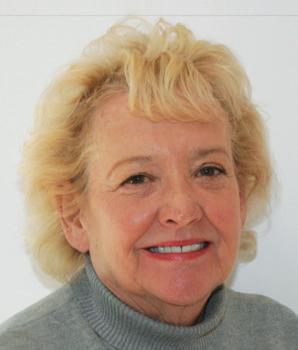
Bret Stephenson, Beni Cakitaki and Michael Luckman have at last pointed to the elephant in the room — the "ghost student" who has enrolled in a unit, maintained his or her enrolment, and finished the semester with a mark of zero. Anyone who has ever sat on a Board of Examiners will be familiar with this student.
Thanks to the work of Stephenson, Cakitaki and Luckman, we now have a better idea of the pervasiveness of the problem among first year students, its correlation with retention, and the likelihood of an Indigenous student ending up as what they describe as an NPE (a nonparticipating enrolment). Many studies have looked at factors affecting student success, but this study has focused closely on failure at the unit level and explored the problem in relation to selected equity groups. The research reminds us that there are different forms of failure and therefore presumably require different strategies to address each type.
The study is timely. As it notes, student failure at the unit level in Australia will now affect both students and universities, as the introduction of the “50 per cent pass rule” results in non-complying students losing their Commonwealth Supported Place (CSP) status. Thus, the study is vital for student equity: it identifies the NPE problem and urges us to find out why Indigenous students are more likely to end up with NPE results.
This study is lively, informative and presented in a straightforward fashion and should be read by academics, policymakers and student admission staff as a priority.
https://www.ncsehe.edu.au/publications/ghost-student-failure-equity-cohorts-nonparticipating-enrolments/
41 ACCESS THE FINAL REPORT ONLINE >
Adjunct Professor Robyn Quin Curtin University
Higher education aspirations, participation, and achievement of Australian Indigenous males
Aboriginal and Torres Strait Islander Australians face multiple challenges when striving to participate and achieve in higher education. Men are also underrepresented in higher education across all equity groups, including that of Indigenous students. This means Indigenous men face cumulative impacts when attempting to pursue higher education. This study examined the intersection between Indigeneity and gender among Indigenous males (a) aspiring to pursue higher education (aged 14–18); and (b) participating in, or recently completed, higher education (any age). It has identified policy and practice levers to improve Indigenous men’s participation in higher education in Australia.
BACKGROUND
Aboriginal and Torres Strait Islander (respectfully Indigenous hereon) people are underrepresented in Australian higher education, accounting for two per cent of the student population compared with 3.3 per cent of Australia’s total population in 2019. This follows a decade of higher education expansion which saw Indigenous enrolments almost double since 2010, yet clearly more work needs to be undertaken to ensure universities are welcoming and culturally safe spaces, supported by initiatives such as embedding Indigenousfocused curricula within courses to ensure a supportive and decolonising educational environment.
OBJECTIVES AND METHODOLOGY
The objectives of this study were:
• to build an evidence base about the further education aspirations of Indigenous men to better inform the development and implementation of outreach and enabling programs involving Indigenous males
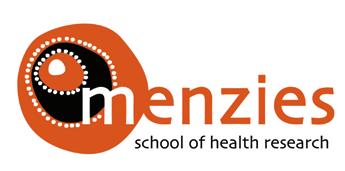
• to identify and celebrate the critical success factors and influences among current Indigenous male higher education students and alumni to better inform the development and implementation of strategies to attract and retain young Indigenous males in higher education
• to identify strategies that can be used by academic and support staff in higher education settings across Australia to increase the higher education participation and completion rates of Indigenous males.
The study included qualitative, in-depth, semi-structured interviews with Indigenous male students and alumni (n=19) across five state and territory jurisdictions (Northern Territory, Western Australia, Victoria, Australian Capital Territory, and Queensland) to gain insights into participants’ aspirations for, and engagement and participation in, higher education.
KEY FINDINGS AND RECOMMENDATIONS
Key findings
The study highlighted the aspirations of Indigenous men and their families to engage in higher education. Indigenous men were motivated by a desire to acquire knowledge and skills to gain employment, invest in community development, and mentor peers and family members. Participants were motivated to pursue topics they were passionate about and sought to embed Indigenous knowledge and perspectives into theories and practice.
Indigenous men benefited from structural supports within universities that sustained their studies, including flexible course arrangements; timelines and deadlines; provision of
42
James A. Smith, Himanshu Gupta, Sam Moore, Jesse Fleay, Garth Stahl, Bep Uink, Andrew Harvey, Peter Radoll, Braden Hill, Rebecca Bennett, Jahdai Vigona & Anthony Merlino
scholarships to cover living and study expenses; and access to Indigenous student support services. Such supports were most effective when used in conjunction with evidence-based study habits.
The study also highlighted barriers to Indigenous men engaging in higher education, including financial constraints; a lack of academic preparation in high school; and perceived mystification of university, shaped by a lack of general awareness and course promotion. Specific barriers to sustaining engagement in higher education also emerged, including those associated with COVID-19 disruptions to study schedules and routines.
Dr Jacob Prehn Senior Lecturer University of Tasmania

This report provides a timely and much needed investigation. Aboriginal and/or Torres Strait Islander men have some of the lowest rates of tertiary educational engagement and success in Australia. While there are similarities experienced by Aboriginal and/or Torres Strait Islander men, women, and other gendered identities, there are also differences as detailed in this report.
The report finds that taking an intersectional approach to understanding the success and barriers experienced by Aboriginal and/or Torres Strait Islander men across Australia is important to increase their engagement and success in higher education.

The findings and recommendations from this report can inform strategies developed by Universities Australia and individual universities, provide support for the Federal Government’s Indigenous Student Success Program (ISSP), and encourage data-driven initiatives and programs by institutions and university Indigenous student success centres.
Summary of recommendations
Recommendations for higher education institutions
• Acknowledge the underrepresentation of Indigenous males in higher education and prioritise targeted education and social supports.
• Work towards building an evidence base about strategies that better support Indigenous males to navigate the intersections between, and cumulative impacts of, gender, age, and culture.
• Expand targeted scholarship and program supports for Indigenous male students to support their transition into, and sustained participation within, university. These should include supports for study materials, travel (particularly for students living away from home), and social supports that improve their health and wellbeing.
• Provide free classes, equipment, and resources to remote community centres and libraries to simultaneously build community relationships and improve higher education awareness and engagement.
• Promote the stories of current Indigenous students, community members, and alumni in campaigns aimed at attracting and retaining Indigenous males in higher education.
• Expand the number of Indigenous study mentors (particularly male mentors) and programs on campus to provide academic support and to reduce feelings of alienation that Indigenous male students may face.
Recommendations for government and funding bodies
• Identify Indigenous males as a priority (sub)population in higher education policy and program settings at a national level.
• Fund higher education instutitions to develop and implement targeted programs and services for Indigenous males, including those (a) aspiring to pursue higher education and (b) currently participating in higher education.
• Invest more heavily in travel scholarships to support students to return home during semester breaks.
https://www.ncsehe.edu.au/publications/higher-education-aspirations-participationachievement-australian-indigenous-males/
43 ACCESS THE FINAL REPORT ONLINE >
“On the radar”: Supporting the mental wellbeing of mature-aged students in regional and remote Australia
Nicole Crawford
This research investigated university students’ perspectives on mental wellbeing and their insights into proactive approaches that they found supportive during their university studies. In particular, it focused on mature-aged students in, and from, regional and remote areas in Australia. The everyday interactions that students had with teaching and support staff, their peers, the curriculum, and the physical or online learning environments were found to impact their mental wellbeing. University students’ mental wellbeing is part of a complex web of interacting layers; it is vital that it be supported at all levels in the university ecosystem.
BACKGROUND
University students’ mental wellbeing is increasingly “on the radar” of universities in Australia and internationally. In this climate, this one-year 2019/20 NCSEHE Equity Fellowship research investigated university students’ perspectives on mental wellbeing and their insights into proactive approaches that they found supportive during their university studies. In particular, the research focused on mature-aged students who live in, or come from, regional and remote areas in Australia.
Regional and remote students are in the national spotlight, as attested by recent national reports. However, the focus of improving access and participation in higher education has been on school leavers. Mature-aged students are largely missing from the discussion, yet they make up a sizeable proportion of the regional and remote cohort. In focusing on the mature-aged sub-group within the regional and remote cohort, this project responded to calls for deeper understanding of the diversity and complexity of equity group cohorts, as well as the need to understand more about how universities can proactively support students’ mental wellbeing.
OBJECTIVES AND METHODOLOGY
This Fellowship research investigated two overarching research questions: (1) What factors impact on the mental wellbeing of mature-aged undergraduate university students in, and from, regional and remote Australia? and (2) What are proactive approaches that support the mental wellbeing of mature-aged undergraduate university students in, and from, regional and remote Australia? The sub-research question, Who are mature-aged university students in, and from, regional and remote Australia? was a necessary starting point for approaching the two overarching questions. This research followed a concurrent transformative mixed methods design. It was informed by multiple conceptualisations of mental wellbeing. In brief, adapting the World Health Organisation’s (2014) definition, mental wellbeing was understood as managing the “normal” stresses of university and life in order to thrive and reach one’s academic goals and potential. The research also drew on Bronfenbrenner’s ecological systems theory to demonstrate that students are located within multiple interacting microsystems (for example, university, family, work, and local community) that impact positively and negatively on their mental wellbeing, and which are also influenced by other layers of the ecological system.
44
EQUITY FELLOWSHIP REPORT
Three methods of data collection were employed: (1) national higher education student data, (2) a student survey, and (3) student interviews. The approximately 1,800 survey participants and 51 interviewees were from regional and remote areas all across Australia, in all states and territories; they studied in a range of fields and were spread across the year levels. The majority of participants were from 15 universities.
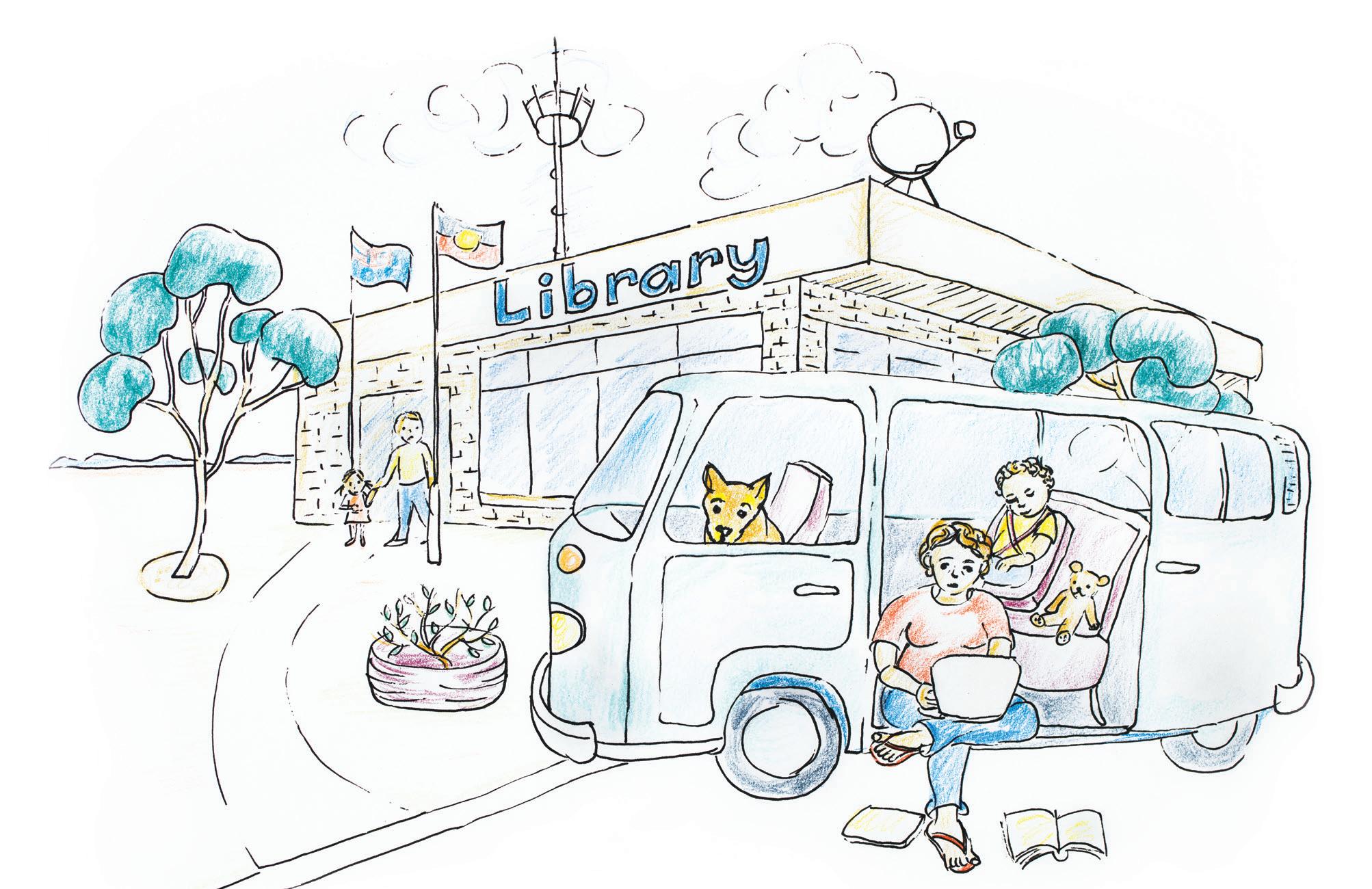
Who are mature-aged students in, and from, regional and remote Australia?
Notable patterns in the regional and remote student cohort were found from an analysis of the national higher education student data. The more remote the geographical location, the higher the proportion of students who were female, studying online, and studying part-time. The proportion of Aboriginal and Torres Strait Islander students increased with remoteness. The proportion of students from low socioeconomic status (SES) areas was far higher for the regional and remote locations compared to the metropolitan areas. All of these patterns were even more pronounced for older students (aged 21 or older at the commencement of their degree).
The majority of survey respondents (82.0%) remained in their regional/remote location for their university studies; 41.1 per cent of the respondents had children under 18 years of age living at home and 81.3 per cent of respondents were in paid employment. Further statistical analysis of the survey data revealed that the students who studied online were more likely to study part-time, work full-time, and live in outer regional, remote, or very remote areas. In addition, the students who were the first in their families to attend university were more likely to study online.
Mature-aged students in, and from, regional and remote Australia were found to be a diverse cohort with varying
circumstances. Large numbers of the survey and interview respondents undertook their studies fully online in their regional or remote locations. Smaller numbers relocated from regional or remote areas to major cities, but with the intention of returning home upon completion of their studies. Many students had busy lives balancing their studies with parenting, work, and community responsibilities. These students, typically women, carved out the space and time for study in snippets between their other commitments. Other students were less time-poor and studying was “their time”. Some of these students found that study helped them in their recovery from or management of major life events or situations, such as divorce, retirement and, in some cases, homelessness, or physical or mental ill-health (including anxiety, depression, and post-traumatic stress disorder).
What impacts on the mental wellbeing of mature-aged students in, and from, regional and remote Australia?
A variety of factors impacted on students’ mental wellbeing, both within the context of their daily learning and interactions with their university course, curriculum, peers, and staff, and outside of the university environment, such as practical issues (for example, unreliable internet) and financial challenges. Several aspects of the students’ learning experiences were revealed in the qualitative analyses and highlight the importance of teaching and learning for student mental wellbeing. Mature-aged students in certain sub-groups within the regional and remote cohort (such as students who studied online and part-time, and students with children) experienced compounding challenges and impacts
Almost half of the survey respondents (47.7%) considered deferring/withdrawing from their university course. The top two reasons why students considered deferring/withdrawing were: (1) stress (65.6%) and (2) feeling overwhelmed by their university study-load (55.4%).
45
Kombi and free Wi-Fi by Morag Porteous
The survey responses to a series of statements that focused on the different periods within the cycle of a semester highlighted the temporal nature of stress, with some periods of time within a semester being more stressful than others. Unsurprisingly, the most stressful periods were the time just before assignments were due and the final weeks of semester. School holiday periods were a stressful time for a large minority of students, as were the pre-semester/ orientation periods and the first week of semester.
How do students support their mental wellbeing?
While more than half of the respondents (54.7%) agreed or strongly agreed that they had at least one person (staff member or student) they could turn to at university for support, of concern is that nearly one third (31.1%) of the respondents did not. Also of concern is that 46.7 per cent of respondents reported not having a supportive peer group (whether it be face-to-face or online) at university.
Louise Pollard Director (Admissions and Student Services)

The University of Notre Dame Australia
Nicole Crawford’s Fellowship report gives voice to an often invisible group of students — mature-aged students from regional and remote Australia, many of whom identify with multiple equity groups. This Fellowship reinforced my understanding of the challenges faced by this often forgotten group of students and the stories and experiences shared by the many students who engaged with Nicole’s research are very compelling. The fact that over 1,700 mature-aged, regional and remote students responded to Nicole’s call to engage in her Fellowship is testament to the value of the research from the students themselves.
The student voice is well utilised in this research, with students sharing their experience in juggling life and study in communities across Australia. The complexities of life and the impact this can have on mental wellbeing is significant. It is telling that many regional and remote, mature-aged students are currently feeling undervalued in our universities.
The recommendations identified in this research for academic and professional staff are practical and proactive. We need to recognise and celebrate diversity within our student body and ensure that inclusive practices are embedded across the university — in teaching and learning and university support programs and services. As Nicole reminds us all — "it is everyone’s business!" By supporting this diverse group of students who are studying in a wide variety of circumstances to reach their full potential, the whole student community benefits.
The finer-grained analysis found specific sub-groups of students (that is, students who studied online or part-time or were aged 31–40) not only had no one to turn to for support at university, but they were also likely not to have support with their university studies from people close to them outside of university; for example, they were more likely to report that their family and friends had a negative or extremely negative impact on their mental wellbeing.
There is a discrepancy between universities’ provision of student support services and students’ awareness of them. The quantitative analysis of the survey results revealed a lack of awareness of wellbeing/health events and online resources on university websites about mental health and wellbeing. On a more positive note, 72.4 per cent of survey respondents were aware that they could access counselling services at university. Comments from some interviewees highlighted that they were unaware of their university’s student support services until they needed them and were introduced to them by a staff member, such as a lecturer, tutor, or librarian. It illustrates the importance of small actions by staff, which ultimately assisted these students in seeking support from their university’s student support services.
The majority of students in this study indicated that they knew how to look after their mental wellbeing. However, students reported that it was not always possible to implement self-care and other “healthy” strategies whilst juggling multiple commitments. For many students in this study, there was a mismatch between the academic demands and the time that students had available to meet them, along with other commitments vital to maintaining their general health, their families and their finances.
Recommendations for universities and government
The following set of recommendations offers guidance for universities to better support the mental wellbeing of mature-aged students in, and from, regional and remote areas. Furthermore, if adopted, they will benefit all students.
1. Know who your students are and respond to student diversity.
2. Value and acknowledge students’ strengths and experiences.
3. Support and resource academic and professional staff to implement inclusive pedagogies and practices.
4. Apply an equity lens to rules and regulations.
5. Consider students’ access to technology and the internet.
6. Expand access to physical study facilities.
7. Provide financial support.
While these recommendations are targeted towards universities, recommendations 3, 5, 6 and 7, in particular, are also relevant to the Government’s higher education policy.
46
Guidelines for proactively supporting student mental wellbeing
The recommendations listed above apply to the broader university culture, expectations, and its systems. The following guidelines are a response to a major theme in this research — the importance of the teaching and learning experience; that is, students’ everyday interactions with the curriculum, staff and peers, and the learning environment. The guidelines are particularly relevant for academic and professional staff.
1. Know your students: understand their diverse challenges, commitments and strengths.
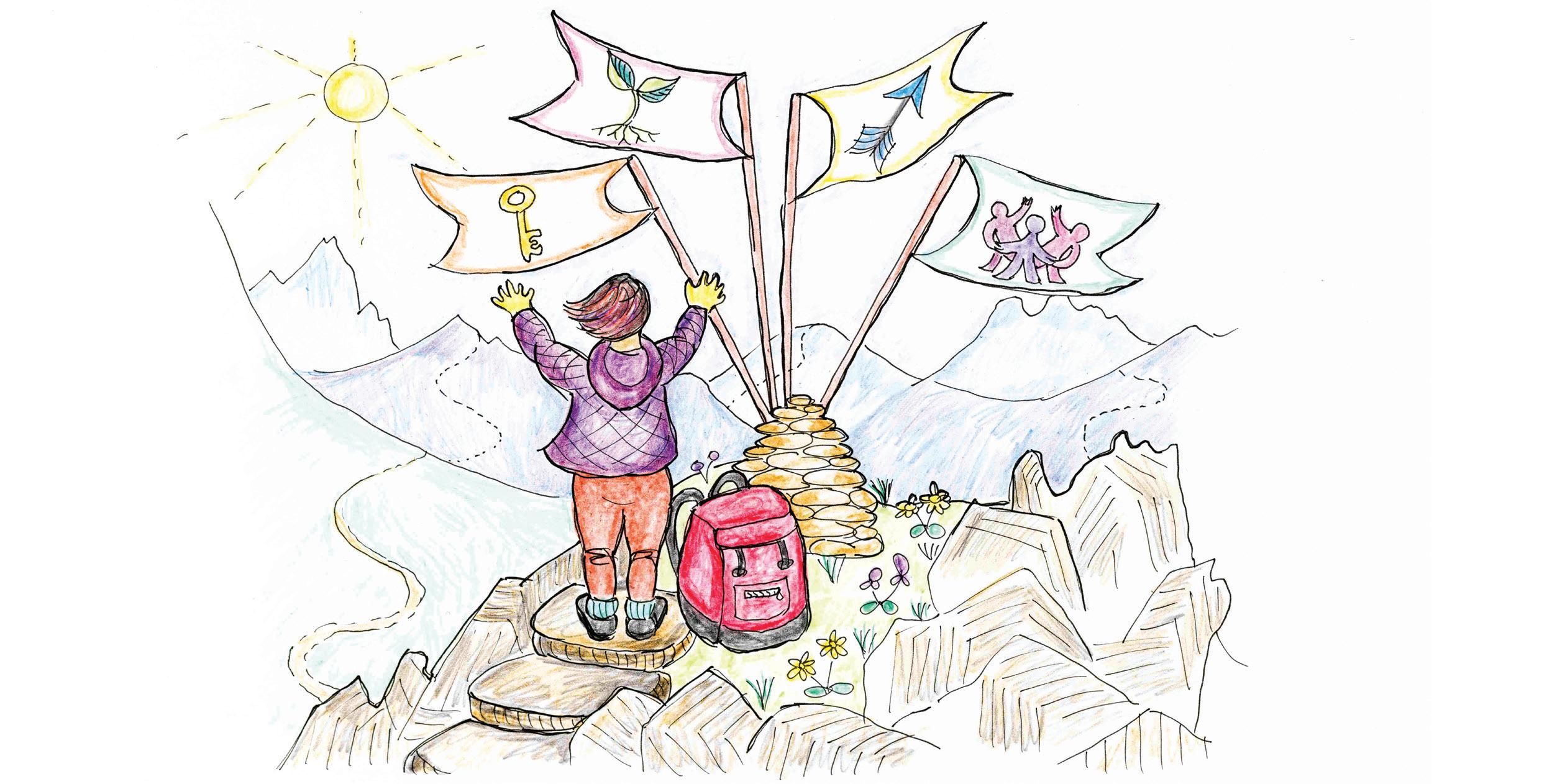
2. Check in with students: be approachable, supportive and caring.
3. Implement principles of inclusive education and/or universal design in the curriculum.
4. Consider students' online environment in course and curriculum design and delivery.
5. Facilitate student interactions and connections.
6. Provide pre-university transition or preparation courses and specific orientation events.
7. Consider students’ practical challenges: assessment deadlines, timetabling, placements, internet access, and natural disasters.
8. Raise awareness of the full range of university services that support students.
9. Ensure student support services are responsive to student diversity and inclusive of all students.
Conclusion
Taking an ecological systems perspective, this research highlights the myriad and complex ways that students’ mental wellbeing is impacted by the many interactions between their multiple roles—at home, at work, in their community, and at university—and in larger contexts in which factors, such as the culture of an institution, may impinge on, or support and enhance, students’ mental wellbeing. The research findings suggest that entrenched attitudes and expectations favouring and privileging some students (for example, younger students with time and who study on campus) over others (for example, older students who juggle numerous commitments, and study online and part-time) continue to prevail.
Challenges with course content or delivery, and with university rules and regulations, which were found to be unconsciously designed for so-called “ideal”, “implied” and “traditional” students, exacerbated the already challenging situations experienced by students who did not fit this profile, such as mature-aged students in, and from, regional and remote areas. Inclusive practices in teaching, learning, and support offer ways of catering for the needs and strengths of mature-aged students in, and from, regional and remote Australia and of proactively supporting and enhancing their mental wellbeing. Increased attention to these aspects could improve students’ experiences and, as a consequence, their learning and academic achievement, and improve retention and success rates for universities.
Make it small by Morag Porteous
https://www.ncsehe.edu.au/publications/nicole-crawford-equity-fellowship-mentalwellbeing-mature-students-regional-remote-australia/
47 ACCESS THE FINAL REPORT ONLINE >
‘You going to uni?’: Exploring how people from regional, rural and remote areas navigate into and through higher education
Movement into and through higher education has been consistently more difficult for people from regional, rural, and remote (RRR) areas. This study sought to understand the barriers and enablers to completing a degree by asking RRR people themselves. Privileging their voices enabled more nuanced understandings of the complexities involved, which included decisions to study and persist rarely being straightforward, especially when combined with multiple inequities, geographical distance, relational and emotional ties to family and community, and additional responsibilities. However, these participants possessed strong qualities such as resilience, determination, future-focus, and communitymindedness which can assist in achieving degree completion and personal goals.
BACKGROUND
The overarching objective of this Equity Fellowship project was to explore how students from RRR areas of Australia navigated into and through university, to better understand the risk factors to completion. Over the past decade, the rates of university completion for students from these areas have been consistently low, with the proportion of degree qualification for RRR 25–34-year-olds being less than half that of people in major cities. This trend begins in schooling; disparities between metropolitan and RRR schools shown through lower NAPLAN results and Year 12 completion have been attributed to factors including challenges of providing equitable educational experiences and resources as geographical remoteness increases. However, lower achievement or engagement at school does not necessarily equate to lower aspiration for higher education. A more appropriate approach to explore this trend is to consider these students’ capacity to aspire through the realities of (often multiple) equity factors and what may not be available to them. This may be lack of resources, funding, and information as well as implicit understandings of “rules” and “expectations” that are essential for successfully navigating university, but are often unequally distributed. Thus, the Fellowship aimed to explore what gets in the way
of completing a university qualification for students from RRR areas. It was also important to capture what enables students to continue.
Objectives and methodology
The main research objective was to understand what factors contribute to the persistent disparity in university completion rates for people from RRR locations. A critical aspect of the research design was to explore how people from RRR areas themselves perceived and experienced higher education. In privileging their voices, nuanced insights were gained of both barriers and enablers to completion from a RRR perspective. Exploring the perspectives of the participants using a qualitative approach also captured some of the very personal repercussions of movement into and through university. To achieve this objective there were three key questions driving the study:
1. How is movement into and through university articulated by people who are from RRR areas?
2. What goals and hoped-for futures are students moving towards?
3. What barriers and enablers to higher education participation are perceived and experienced?
48
E QUITY FELLOWSHIP REPORT
Janine Delahunty
To explore answers to these key questions, a qualitative approach was taken to collect rich data from participants through surveys and interviews. The main participant dataset came from university students from RRR areas enrolled across 21 Australian universities (regional and metropolitan) or regional campuses, complemented by data from staff in various roles from 12 institutions. While the COVID-19 situation impacted data collection at universities, and particularly at schools, a number of senior secondary school students who were enrolled in a university outreach program were able to participate, as well as a small number of school staff.
Demographic information collected included locational information such as the postcode, region, or town name in which students were living, or from which they had lived immediately prior to attending university. Participants were located across Australia. The locational information used to determine remoteness categories showed the distribution of participants as 30 per cent from Inner Regional, 55 per cent from Outer Regional, and 15 per cent from Remote/ Very Remote Australia. Over two-thirds (69%) were studying full-time in a range of different modes, and the majority were female (85%). The ages ranged from 18 to over 51, with almost three-quarters being 21 years or older (74%). Most of the senior school students were located in Inner Regional areas, five were Outer Regional, and the majority were female.
A dual measurement approach was taken to understand the diversity and the complexities of equity. Participants selected from a list of equity groupings as determined by the Department of Education, Skills and Employment (DESE) (i.e., objective measurement), and equity factors (subjective).
Offering a subjective choice is important for diverse populations as these are based on their individual, contextspecific experiences and reference groups (such as First-inFamily; from working class background etc.).
With the exception of eight participants, all identified two or more equity groupings and/or factors. Similarly, from a list of additional responsibilities, it was identified that the majority of these participants were engaged in work, family and other commitments, or a combination of these. Fewer senior school students identified with multiple equity factors; only half indicated equity factors in addition to "regional" and only a few had additional responsibilities.
Key findings and recommendations
Six key findings were identified and relate to each of the three research questions.
Key findings for Research Question 1
People from RRR areas
a) Movement into and through university entailed more than geographical (re)location alone. “Movement into” university was articulated as a complex process of decision making and careful considerations. These included personal impacts as well as weighing up potential relational and emotional aspects around family, community, social networks, and familiarities of “home”. Considerations were multiple and included whether to relocate (or not), to commute (or not), mode of study options and/or course availability, and ease of access to a regional campus or Regional University Centre.
Janine Delahunty’s report highlights the experience of RRR university students in Australia. In bringing these student voices to the fore, the report is both personal and relatable. Key issues are made visible and important recommendations for universities, government and schools are made, drawn directly from the perspectives and experiences of students and staff at universities, regional high schools and Regional University Centres.
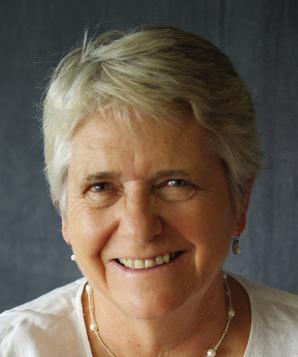
Particularly fascinating are the complexities revealed in how RRR students make decisions about whether to remain in their communities or leave to go to university: not only whether they will go, but also how. Will they leave their home and local community, with all the associated costs and disruptions? Will they stay and not go to
university? Or will they stay and go to university at a local campus or by studying online? And how will these choices impact not only themselves as individuals, but also those around them — family, friends, workplaces, and their broader community? The strong connections to communities and families and the complexity of this decision making are captured in the key findings.
This report also highlights the role of regional university campuses and the growing presence of Regional University Centres. The presence of local infrastructure and face-to-face support provides a viable option for people to stay within their RRR community and still participate in higher education. In these pandemic times, this is a very timely report that is informative, thorough and very enjoyable to read.
49
Conjoint Associate Professor Cathy Stone University of Newcastle Adjunct Fellow, NCSEHE
b) Movement into and through university for RRR students reflected strong connections to communities and families, playing an important role in students’ social and emotional development. These connections and a sense of reciprocity, often “secured” movement back to these places to “give back”, utilising new-found skills and knowledges gained during university study. To a lesser extent, university could provide a means to forge a different life away from smaller locales, and this movement was perceived as opening up opportunities such as career and new social connections, that otherwise may not have been available. The experience of university study was complex, especially for those with families; this was articulated through negative impacts on family life and time. The higher education experience embodied a range of emotions, pointing to the complex and demanding negotiations that students from RRR areas undergo.
Key findings for Research Question 2
Regional, rural and remote students articulated the futures they would like to be, or like to avoid, variously through specific, general, broad, or big-picture goals. Actions and behaviours indicated students were mobilising strategies in “everyday” ways (such as identifying what they desired, what they wanted to avoid being/becoming, setting goals, planning study, imagining their life and career postuniversity etc.) to realise these futures. Goals pursued by students indicated a high level of altruism through desire to help others, give back to communities, and make a difference, not only at a societal level but for their families, through the legacy of providing a better or more secure life than they currently had, or what they had experienced or observed in others. Personal goals often related to quality of life such as living a satisfying life, having the ability to choose a career or work trajectory, being engaged in meaningful work, being a “decent” person, and having financial freedom.
Key findings for Research Question 3
Barriers to completion included:
a) Financial barriers, institutional barriers around inflexible processes, practices and (lack of) university staff understandings of the realities for these students.
b) The complexities arising from multiple equity factors that were the realities of most of the RRR participants. RRR students were likely to meet the criteria for more than one equity category and were likely to have other non-negotiable responsibilities in addition to study. A lack of consideration for the impact of these complexities—demonstrated through inflexibility in procedures, processes and practices, including staff attitudes towards issues/difficulties over which students have little control—can become institutional barriers to completion.
Enablers to completion included:
c) These included students’ individual strengths and qualities, strong networks of support from family, communities, a sense of belonging or connectedness to others, or place. Enablers that were intrinsic to the student were qualities of resilience, determination and perseverance, among other strengths and skills that are transferrable across life situations including university study. Students often accredited these strengths and qualities to having been developed and nurtured within their experiences of family and communities, often by example or through necessity, hardship or not having access to some material possessions. Families and other support networks also played important roles as enablers for students from RRR areas in persisting towards their hoped-for futures and completing their studies.
Based on the findings, the report made six recommendations:
1. Pro Vice-Chancellor Students (or equivalent), university recruitment, student outreach/support services, and regional campuses should work together to:
• engage students from RRR areas directly in developing bespoke and practical ways in which sense of community can be embedded across all interactions/encounters with students and families/ communities, from pre-recruitment and through (a non-linear pathway) to completion
• engage RRR students in developing options which enhance flexibility in course delivery and placement
• ensure socio-emotional support is embedded within all learning experiences and environments, online or on campus (e.g., through opportunities for interaction, Q&A, authentic stories from RRR student perspectives, family/community)
• provide exemplars of practice, drawing on regional campuses’ understandings of how sense of community is enacted and fostered.
2. The DESE should continue their commitment to fund existing Regional University Centres, as well as expand to other regions. These Centres have been shown to provide support which is essential and meaningful to RRR students.
3. University and school student support staff (e.g., career advisors, counsellors, and student advisers) should:
• embed opportunities for students to articulate personally meaningful hopes and dreams for the future, during formal and informal encounters
• allow students to identify what might “get in the way” of realising their vision so they have some agency in mobilising relevant strategies
• normalise fluidity of future aspirations which may change — many students can, and do, make changes within and across courses and support staff should guide them through possible options.
50
4. Institutional Management and Pro Vice-Chancellor Students (or equivalent) must work together to continue to develop policies, processes, and practices that address the diverse needs and circumstances of students from RRR areas which support them to completion. Institutions must take into account the (in)equitable amount of emotional work undertaken by these students as they negotiate complex lives together with academic study. RRR students should be meaningfully involved in this, to move beyond homogenous “solutions”.
5. Deputy Vice-Chancellor (Academic) or equivalent must maintain a resolute stance of “pedagogy before technology” as pressure is increasingly applied for the “latest and greatest” in technologies at the expense of inclusive design. Teams including academic developers,
learning/educational or technology-enhanced learning (TEL) designers/IT experts should also include students from RRR areas. Their collective expertise and skills may ensure appropriate online pedagogies and technologies are at the fore of design decisions. This will help ensure that RRR students who enrol have an equitable and inclusive learning experience.
6. Student support services/student outreach (universities and schools) should draw upon the qualities and skills that students from RRR areas possess through “students-as-partners” approaches, engaging them in design or development of innovative and bespoke support, resources, events, etc. that may also be targeted towards family and others who provide significant support to students.
https://www.ncsehe.edu.au/publications/regional-rural-remote-navigate-higher-education/

51 ACCESS THE FINAL REPORT ONLINE >
Supporting persons with disabilities to succeed in higher education
Tim Pitman
This study explored how students with disabilities were supported in their higher education studies by trained, professional disability support officers and the wider institutional community. A key aim of the study was to investigate whether there were any significant differences between the experiences of students with disabilities in regional and metropolitan Australia. This project drew upon the voices and experiences of more than 1,700 higher education students with disabilities. It represents a high level of engagement and offers detailed information that is relevant to higher education stakeholders in government, universities and advocacy groups.
BACKGROUND
Despite numbering in the 10s of thousands, Australian higher education students with disabilities have received relatively little attention in higher education equity studies compared to other groups. The rights of students with disabilities are enshrined in the Disability Discrimination Act (1992) and the Disability Standards for Education (2005). However, while all higher education institutions are bound by these, the quality of the support provided varies greatly between institutions. Department of Education, Skills and Employment (DESE) data show students with disabilities have experienced below-average rates of retention, success, and completion in higher education studies and generally these rates are worse still for regional students with disabilities. Students with disabilities are less likely to be satisfied at university than students without disabilities, especially regarding student support. Many students with disabilities believe that barriers to education are partly due to their voices going unheard by institutions.
Although there has been research into higher education students with disabilities and regional higher education, in the Australian context, there is a deficit regarding:
• large-scale, quantitative research that prioritises the student voice
• research that focuses on the social barriers to persons with disabilities engaging with higher education
• research that specifically considers the intersection of regionality and disability.
This Fellowship addressed these deficiencies by undertaking a large-scale study involving students with disabilities.
Students with disabilities were engaged collaboratively and respectively to examine their experiences of social, and other, barriers to success in higher education.
OBJECTIVES AND METHODOLOGY
The research was guided by the following questions:
1. Is there any evidence that persons with disabilities face barriers to participating and succeeding in higher education?
2. What barriers to success do persons with disabilities experience within higher education institutions?
3. What barriers to success do persons with disabilities experience externally to their higher education institutions that institutions can nonetheless ameliorate?
4. Are there any significant differences between regional and metropolitan students with disabilities regarding the first three research questions?
This study adopted a mixed methods approach to data collection and analysis, including:
• statistical data provided by the DESE
• a national survey of higher education students with disabilities and higher education staff
• interviews via emails.
52
EQUITY FELLOWSHIP REPORT
The national survey of students with disabilities was completed by more than 1,700 students, including more than 550 regional students. This response rate provided a strong foundation from which to draw findings and recommendations.
Two key theoretical framings underpinned this study: a social model of disability, and student voice in the context of participatory research into disability. The social model of disability located the “problem” of disability within inaccessible socially-created environments rather than within the individual. Equally, the student voice played a critical role in this study’s approach. There is often a gap between the rights afforded to students with disabilities and the level of support they receive. One way of bridging this gap is to listen to persons with disabilities and actively engage them in the research process. This study contributes to bridging the gap by explicating the importance of the student voice and including students with disabilities in the research process.
KEY FINDINGS AND RECOMMENDATIONS
Is there any evidence that persons with disabilities face barriers to participating and succeeding in higher education?
Both the quantitative and qualitative data revealed clear evidence of barriers for students with disabilities to participate and succeed in higher education. The statistical analysis revealed a significant increase in the participation of students with disabilities in recent years. While this is encouraging, the participation rate was still below parity. What is clearer is that any gains in participation do not yet appear to have translated into similar improvements in student retention, success, and completion. For all three indicators, the outcomes for students with disabilities remained significantly below the wider student population. Further, there appeared to be a stronger correlation between disability status and poorer educational outcomes than between regionality and poorer educational outcomes. Put another way, while disability and regionality both played a part in constructing social barriers to higher education success, having a disability appeared to endanger greater barriers than coming from regional Australia.
Further findings from this project revealed that persons with disabilities were underrepresented in the following categories:
• male representation — most significantly in regional student enrolments where enrolments of women were more than double the enrolments of men
• students under the age of 30 — particularly with regional students
• enrolment in courses other than society and culture
• full-time enrolments
• postgraduate enrolments
• online study.
These are all areas that are worthy of further, in-depth investigation.
This study also found evidence of a significant proportion of students who were experiencing substandard levels of disability support, which by definition may be discriminatory. The survey revealed that, pre-COVID-19, 11.7 per cent of students rated overall disability support as either “very poor” or “poor”. Post-COVID-19, this rose to 22.2 per cent. For the survey, this latter percentage refers to almost 350 students. Nationally, this could equate to more than 15,000 students. Whilst acknowledging that the terms “very poor” and “poor” are subjective and do not definitively point to discriminatory practices, the findings nonetheless should be cause for great concern.

What barriers to success do persons with disabilities experience within higher education institutions?
The Fellowship revealed that, despite a general affirmation of mature disability support structures within the Australian higher education sector, there are several areas that require improvement. Within and across the various dimensions of disability support examined in this study, there was clear evidence that social barriers remained for many students with disabilities. First, many students elected not to disclose their disabilities, meaning the positive attitudes they experienced were as much a function of the students’ agency as of staff within the institution. Some students in this study experienced deficient and potentially discriminatory support. Extrapolating to the general population, this would represent a significant minority of people.
53
Dr Matt Brett Director
Academic Governance and Standards Deakin University
Tim Pitman makes a substantial and significant contribution to understanding the participation of students with disability in Australian higher education. This mixed methods research includes a distinctively large number of survey responses and interviews. This generates unparalleled insight into the experiences of students with disabilities across Australian higher education.

The survey data complements observations made in relation to equity performance indicators which quantify that growth in participation coincides with lower retention, success and completion rates for students with disabilities. The survey and interview data highlight that whilst students with disabilities are generally satisfied with disability support services, they confront social barriers that adversely affect their participation. These barriers include attitudes towards disability, physical infrastructure, digital accessibility and inclusion in curricular and extracurricular environments. Several barriers were more pronounced for regional students, including access to support services.
The report provides insightful and practical recommendations for institutions, which include adoption of Universal Design for Learning and web accessibility standards. Mandatory training for all higher education staff is also recommended. Policy-focused recommendations include changes to the Disability Standards for Education and exploration of mechanisms by which compliance with the Disability Discrimination Act can be enhanced. The recommendations have a high degree of validity given research design and level of student engagement.
Next, in some institutions, the positive behaviours being displayed in some units were not translating to wider, organisational cultural change. Disability Support Offices (DSOs) are only one (albeit critical) part of the disability support framework. Non-DSO staff were more likely to display negative attitudes towards students with disabilities and/or erect social barriers to their success.
This study also revealed that the relative lack of a systemic approach to principles of universal design for learning (UDL) remains a significant impediment to many students with disabilities. As established in this study, a significant proportion of students with disabilities reported very low levels of satisfaction with the support they received. In many instances, this dissatisfaction related to their institution’s failure to implement UDL principles.
A concerning finding of this study was how poorly students with disabilities rated communication support in their institutions. There was a clear educational disadvantage for many students with disabilities when teaching and learning were delivered in a neurotypical fashion.
Finally, this study found evidence that higher education institutions may not be uniformly reporting key data regarding students with disabilities. There is evidence that institutions did not collect disability data uniformly or accurately. This is concerning for two reasons. First, given that disability support is delivered at the institutional level, incorrect data should be concerning institutional policymakers and advocates. Second, if these data are being misreported but the errors are not being identified—even when they are quite significant as per the above examples—this suggests that the data are not being meaningfully reviewed, and students with disabilities are being asked to disclose confidential information for no reason. This is potentially egregious, given the sensitive nature of this information.
What barriers to success do persons with disabilities experience externally to their higher education institutions that institutions can nonetheless ameliorate?
A key finding of this study is that, on average, persons with disabilities achieved lower academic entry scores. The correlation between prior academic achievement and subsequent higher education success is clear evidence of the effect of social barriers to disability. A student’s entry score is not only an indicator of their academic ability but also their academic privilege. Therefore, lower aggregate academic results for persons with disabilities reflect the socioeconomic barriers they face to gaining a quality education than their academic abilities.
This Fellowship also revealed that a greater proportion of students with disabilities entered higher education via non-school pathways than other students. Many students with disabilities were mature-aged, using non-formal or even informal academic pathways to prepare for university entry. When students with disabilities are viewed as a homogenous “other” it is less likely that their support needs will be met and more likely that they will face discrimination. Problems arise when policy categorisations of disability—which should be about classifying functional issues requiring educational support—are used to label people.
Are there any significant differences between regional and metropolitan students with disabilities regarding the first three research questions?
This study has shown negligible differences between regional and metropolitan students’ broader higher education experiences (e.g., curriculum, accommodations, and attitudes). Both groups reported similar levels of satisfaction with the support and described similar concerns and praise towards this support.
54
However, regional students face specific challenges. The first is access to specialist services. For many persons with disabilities, these services were only available via telehealth or by travelling long distances.
The second challenge is the digital divide. Many regional students encountered poor connectivity issues, inferior data speeds, and below-average IT support.
Third, this study highlights and reinforces the critical role regional universities play in supporting persons with disabilities to participate and succeed in higher education while remaining connected to their local community. Regional students with disabilities were more likely to study on campus than regional students without disabilities. Beyond the support provided by the institution, persons with disabilities relied heavily on informal support mechanisms, local communities, families, and other relationships. Regional campuses were critical for many students with disabilities because of the nature of the support they needed.
Recommendations
1. Higher education institutions should make greater efforts to adopt principles of UDL.
UDL ensures that buildings, technology, products, and services can be used by virtually everyone, regardless of ability. The greater the level of accessibility, the greater the number of students who will not need reasonable adjustments made to their educational experience. This should be a focus for the increasing use of online and remote learning technologies.
2. Higher education institutions should move to adopt sector-wide, uniform standards for accessible web design.
Given the ubiquity of web-based teaching and learning, uniform accessibility standards must be adopted. Accessibility includes using graphics with alternative text (alt text); audio; the need for a mouse or scroll bar; problems with large files hampering download speeds, refresh rates, and other computer functions; and disorganised text causing problems for users from a non-English speaking background or with learning disabilities. Adopting minimum standards will benefit all students, particularly those studying online, where regional students with disabilities are overrepresented.
3. Higher education institutions should make disability awareness training mandatory for all higher education staff.
Most students with disabilities reported receiving relatively high levels of support and understanding from DSOs. However, stress and anxiety were generated through interactions with the wider higher education community
(e.g., lecturers and administrative staff) due to their insufficient understanding of the needs of students with disabilities. If the teaching staff’s awareness and understanding are insufficient—which is too often the case—then the support might be delivered insufficiently. As this report describes, support needs to be understood not generically, but in various contexts, namely:
• attitudes
• procedures
• the physical or built environment
• communication
• technology
• social inclusion.
As understanding and awareness of disabilities are still developing, training should be refreshed regularly to ensure best practice is maintained. Retraining should occur at least once every three years. While the responsibility for training lies with the higher education provider, there is scope for the Federal Government to contribute; for example, by funding a national training strategy.
4. The above recommendations should be formalised in the Disability Standards for Education (2005) (DSE).
Ideally, these recommendations should be enshrined in the DSE. This document is a critical interface between the overarching legal requirements set out in the Disability Discrimination Act 1992 (Cth) (DDA), Australia’s ratification of the United Nations Convention on the Rights of Persons with Disabilities (UNCRPD), and specific policies and procedures enacted at the institutional level. The DSE sets the minimum, uniform requirements for the rights of persons with disabilities in higher education. The DSE should explicitly recommend that institutions move towards principles of UDL and that their progression towards the same be assessed as a criterion for ensuring compliance with the DSE. This should also apply to disability awareness training.
5. The DESE Equity in Higher Education Panel (EHEP) should investigate ways in which higher education institutions can demonstrate, transparently, their practical commitment and compliance with the Disability Discrimination Act 1992 (Cth) and Disability Standards for Education (2005).
Public accountability would help ensure that higher education institutions are:
• meeting the minimum requirements of the DDA and DSE
• being proactive about addressing issues without an individual needing to take formal action or raise a complaint
• promulgating best practices throughout the institution and sector more widely.
https://www.ncsehe.edu.au/publications/persons-disabilities-higher-education/
55 ACCESS THE FINAL REPORT ONLINE >
Indigenous students' journeys to and through allied healthcare programs
Andrea Simpson
This project examined Indigenous students’ participation in, and experiences of, degree and vocational education and training (VET) allied healthcare programs. Quantitative analysis found Indigenous participation in allied healthcare varied widely by profession with the larger professions of social work and psychology showing strong growth in Indigenous representation and remaining professions showing minimal growth over the past decade. Indigenous students were more likely to use previous VET qualifications as a means of admission into allied health study when compared with their non-Indigenous peers, where these pathways were available. Both quantitative and qualitative results supported the establishment of clearly defined articulated pathways between VET health study and higher education qualifications in allied healthcare.
BACKGROUND
Indigenous students comprise 1.7 per cent of the Australian domestic higher education student population, whilst comprising 3.1 per cent of the Australian working-age population. Depending on the field of study, significant gaps in Indigenous representation remain, with some of the largest discrepancies between Indigenous and nonIndigenous Australians including the fields of medicine, nursing, and the allied healthcare professions.
Although policy effort has gone into encouraging Indigenous pathways into the primary healthcare professions, the allied healthcare professions have received far less attention. Many higher education providers are also choosing to offer specialisation into allied healthcare only at postgraduate level, which further restricts equitable access to these occupations. The examination of Indigenous student participation for specific allied healthcare professions was therefore an important goal of this Fellowship.
In contrast to higher education, Indigenous Australians have been reported to participate at a higher rate than their non-Indigenous peers in the VET sector. The difference between VET and higher education participation for Indigenous students has led some scholars to recommend articulated pathways between VET sector and higher degree
qualifications as a potential means of increasing Indigenous representation in higher education. Given the higher numbers of Indigenous learners in the VET sector, of additional interest to the current Fellowship was whether VET qualifications in the healthcare fields held potential for increasing Indigenous representation in higher degree allied healthcare study.
OBJECTIVES AND METHODOLOGY
The Fellowship:
• carried out a critical policy analysis of Indigenous inclusivity for admission into the allied healthcare professions
• determined the national socio-demographic profile of Indigenous students enrolled in the allied healthcare professions
• determined which healthcare-related VET courses at Certificate IV and above had the potential to act as pathways into higher education allied healthcare programs
• investigated the institutional factors linked with success in attracting and retaining Indigenous students into the allied healthcare professions
• investigated the lived experiences of Indigenous allied healthcare students and graduates.
56
E QUITY FELLOWSHIP REPORT
The Fellowship adhered to the ethical guidelines provided by La Trobe University and the Australian Institute of Aboriginal and Torres Strait Islander Studies to ensure that the researchers followed and adhered to Indigenous cultural protocols, data sovereignty, and ways of managing knowledge and interacting socially. The Fellowship was supported by Indigenous Allied Health Australia (IAHA) who provided consultation and participant recruitment assistance.
The research team was led by Andrea Simpson, the project Fellow, who is a non-Indigenous audiologist and researcher.
She has had extensive experience of working with Indigenous Australians through her clinical practice and research. Her interest in the Fellowship stemmed from her personal experience of working clinically in remote Indigenous communities as well as her professional role as Course Coordinator for the Audiology program at La Trobe University at the time. Andrea was responsible for project leadership, coordination, research design, data collection, data analysis, and report write-up.

57
A part-time project officer supported the project. Kim Alley is an Indigenous (Murri) academic and researcher who completed her PhD in politics. She has extensive experience of working one-on-one with Indigenous students as a tutor in the ITAS programs run by Indigenous Student Units at The University of Melbourne, Australian Catholic University, and Swinburne University of Technology. Kim has also worked with the North-West Regional Indigenous Family Violence Action Group, conducting research to help develop a model for an Indigenous Healing Service. Kim was responsible for web searching, advising on the cultural integrity of the methodology, participant recruitment, conducting interviews, and qualitative coding and analysis.
The research team used an intercultural communication approach throughout the project as a way of embracing cultural identity and knowledge in interactions. This approach encouraged participants to admit uncertainty, challenge assumptions, practise empathy, and embrace diversity throughout the research process.
A subset of 10 allied healthcare professions was selected for inclusion in the Fellowship. These professions were selected to represent five Australian Health Practitioner Regulation Agency (AHPRA) members — psychology, physiotherapy, occupational therapy, podiatry, and optometry as well as five self-regulated professions — audiology, dietetics, exercise physiology, speech pathology, and social work.
Professor James Smith
To address the research objectives, a mixed methods approach was followed in the following sequence:
1. A policy review was carried out examining the inclusion of Indigenous applicants in education and training policies by allied health professional peak bodies as well as higher education providers.
2. A desktop review of the websites of 46 higher education providers offering accredited programs of study for each of the 10 allied healthcare professions was carried out during March–April 2020. When surveying the information on each program of study’s website, the following information was noted: (a) if the program of study offered an Indigenous-specific entry pathway and (b) what type of entry pathway was offered.
3. Analysis of national socio-demographic enrolment data from the Department of Education, Skills and Employment (DESE) as well as the National Centre for Vocational Education Research (NCVER) on Indigenous students enrolled in healthcare programs of study was analysed.
4. Finally, semi-structured interviews and online surveys were carried out with stakeholders in higher and vocational education and Indigenous allied healthcare professionals and students.
Father Frank Flynn Fellow (Substance Misuse) Menzies School of Health Research

In this report, Dr Andrea Simpson presents the latest empirical evidence about articulation pathways into selected allied health higher education courses for Indigenous students. Using a mixed methods approach, she examines trends in higher education enrolments over the past decade, showing that social work and psychology have had relative success. However, some of the smaller allied health professions have made minimal progress. Indeed, in some instances there are limited established articulation pathways between VET and higher education sectors to support enrolment and participation in undergraduate and postgraduate allied health courses. Where they do exist, such pathways are poorly promoted to students and staff, and/or lack cultural responsiveness.
Through interviews, surveys and focus groups with a range of sectoral stakeholders, including Indigenous higher education students and staff, Andrea and research colleague Kim Alley identify a series of enablers and barriers to enhance Indigenous student engagement in allied health higher education courses. These research findings are consistent with other Indigenous higher education research
that emphasise the importance of Indigenous Student Support Units, and the prioritisation of cultural safety in providing academic, financial, social, emotional, and cultural support to these students. The importance of professional and culturally responsive mentoring is also discussed.
Dr Simpson concludes by suggesting that future growth in Indigenous enrolment share within higher education allied healthcare programs could be better achieved by ensuring professional allied health bodies invest in Indigenous governance and leadership; that there is localised target setting by profession and/or institution; that there is strategic expansion of course offerings into regional and remote areas; more explicit credit transfer arrangements for VET qualifications which align with allied health curricula; an education campaign within the VET sector on continuing education options related to allied health; and continued funding for Indigenous Student Support Centres. These findings directly align with contemporary policy and practice discourses associated with advancing Indigenous higher education outcomes, strengthening student equity in higher education, and investing in regional and remote education across Australia.
58
KEY FINDINGS AND RECOMMENDATIONS
The Fellowship’s key findings were:
• Professional bodies were found to be at the early stages of incorporating meaningful policies to increase the representation of Indigenous allied healthcare practitioners. Only three professions (speech pathology, physiotherapy, and psychology) included Indigenous equity strategies to enter the profession as part of accreditation standards.
• Indigenous students were found in a narrower range of professions when compared to non-Indigenous students. The profession of social work showed the highest gains in Indigenous student representation with an increase in Indigenous enrolment share of almost 200 per cent over the past decade. Other professions, such as optometry and audiology, were found to have fewer than five Indigenous student enrolments per year, a figure which remained stable over the decade.
• Indigenous students and their non-Indigenous peers differed on the following socio-demographic factors: age at enrolment, ATAR score, basis of admission, socioeconomic status (SES), type of attendance, university grouping, and regionality.
• Indigenous students enrolled in VET healthcare programs were comparable to Indigenous students in higher degree allied healthcare programs across the socio-demographic variables of gender, SES, and regionality.
• Indigenous students enrolled in health programs were comparable to their non-Indigenous peers in completion rates at Certificate IV qualification levels and above.
• Within the health and community services vocational qualifications investigated in the study, Indigenous completions were also found to be concentrated in a small number of programs of study, including the Certificate IV in Aboriginal and/or Torres Strait Islander Primary Health Care; the Diploma of Nursing; the Diploma of Practice Management; the Certificate IV in Allied Health Assistance; the Certificate IV in Dental Assisting; the Diploma of Community Services; the Certificate IV in Aging Support; and the Certificate IV in Disability.

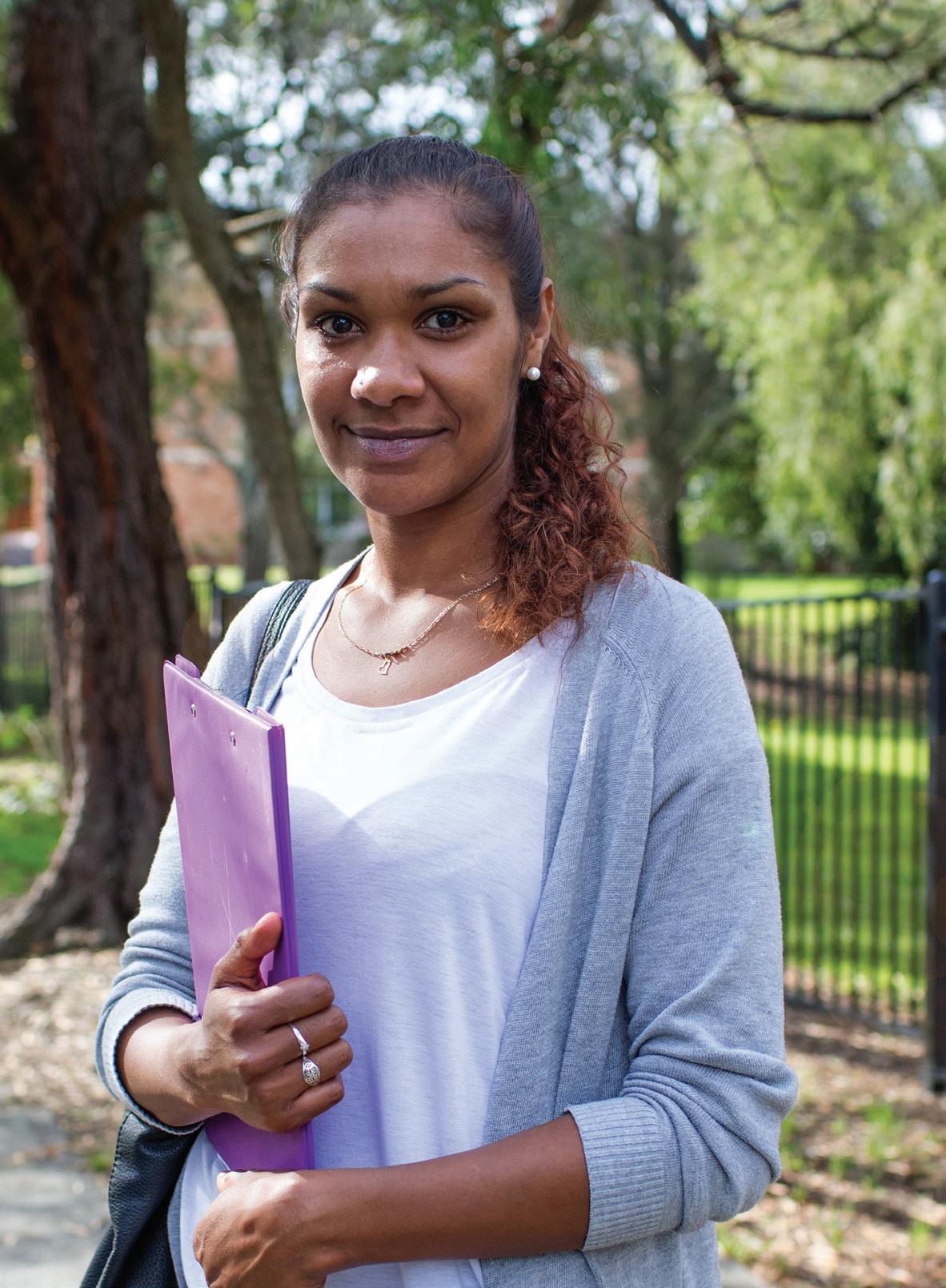
• Major themes from the qualitative interviews stressed the importance of outreach activities into schools and Indigenous communities; access pathways; Indigenous mentors and role models; health careers education and promotion; and creating a culturally safe learning environment, including improving the cultural competency of non-Indigenous staff. Interviewed participants were in favour of clearly defined articulated pathways between VET health study and tertiary qualifications in allied health with the Certificate IV in Aboriginal and/or Torres Strait Islander Primary Health Care the most cited example.
The Fellowship made the following recommendations:
• Professional accrediting bodies should actively recruit Indigenous members to governance positions including the establishment of Indigenous-led associations within professions.
• Higher education providers should pursue partnerships to extend pathways from health VET qualifications into higher education, including pursuing better credit transfer arrangements for VET qualifications which align with allied health curricula.
• Professional healthcare bodies should create guidelines for higher education providers on recognition of prior learning (RPL), credit transfer, and articulation pathways into the profession to support diverse educational backgrounds and mature-aged students.
• Higher education providers should expand allied healthcare offerings into regional areas wherever possible, including the provision of online offerings.
• Higher education providers should incorporate Indigenous cultures and knowledges into online content, including Indigenous voices and perspectives wherever possible.
https://www.ncsehe.edu.au/publications/higher-degree-allied-health-indigenousstudents/
59 ACCESS THE FINAL REPORT ONLINE >
Meaningful jobs for students with disability: From luck to business as usual
David Eckstein
University students with disability face specific challenges getting work that is relevant to their studies. Targeted career support is needed but universities experience barriers to providing this support. This study gathered and analysed national data including feedback from students with disability and staff to explore relevant issues. The research suggests that disparate factors, including competing understandings about employability and careers support, inadvertently conspire to deprive students with disability of enabling careers education. Altogether, the university sector is at the cusp of landmark positive change, but staff training and support is required if the careers thinking of students with disability is to be unleashed from the shackles of imposed disability.
BACKGROUND
There is broad agreement that students with disability should get the same benefit from university as students without disability, including access to jobs after they complete their studies.
It has therefore been a persistent concern that, compared to other students, students with disability are more likely to be out of work after they complete their studies. If they do get work, it is less likely to be related to the skills and knowledge they developed at university. They also make up only two per cent of students taking part in employers’ graduate programs. Current data indicates that the COVID-19 pandemic has exacerbated this inequity. The provision of career education in universities has been shown to deepen students’ engagement with their studies as well as the world of work. Providing career education that targets the specific needs of students with disability brings significant challenges for universities but there are also significant opportunities. This Fellowship sheds light on such opportunities, as well as the barriers which hamper university efforts to provide targeted career support and the factors that create added complexity for universities in regional Australia.
OBJECTIVES AND METHODOLOGY
This Fellowship’s objectives were to improve universities’ provision of careers services for students with disability by:
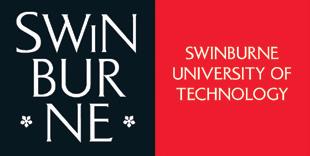
• identifying drivers of, and barriers to, targeted service provision by considering:
{ how students with disability think about their careers and how universities respond to that thinking
{ the availability, organisation, and use of existing resources
{ the role of collaboration between service areas in the provision of targeted support
{ the influence of regional location on the ability to provide targeted services
• identifying effective strategies to equip students with disability with the employability skills and career adaptability perspectives so that they can get meaningful work
• making recommendations for universities and government to facilitate the higher education sector’s ability to better provide careers support for students with disability.
60
EQUITY FELLOWSHIP
REPORT
This report contains results from a mixed methods study that combines findings from six data streams:
• An initial desk review of publicly available information on university websites to map the current provision of a targeted careers service for students with disability in Australian universities.
• Two national surveys, one of Australian university staff and one of students with disability, were used to document students with disability’s careers thinking and to gauge staff understanding of it. The surveys also gathered further evidence on the nature and number of targeted careers services for students with disability and factors affecting organisational ability to provide targeted careers support. The surveys received 150 usable staff responses (n=150) and 1,604 usable student responses (n=1,604). Survey respondents also rated their university’s support for disability-related educational and careers needs before, and since, the onset of COVID-19. Students rated their universities’ support lower since the onset of the pandemic whereas no significant difference in staff ratings was found.
• Semi-structured staff focus group discussions were held via video conference with staff in each Australian state and territory to further interrogate issues. A total of 75 participants were involved in the focus groups (n=75).

• Email interviews were also held with regional heads of service to provide added insight. Responses were received from 12 staff (n=12) across eight universities (n=8).
• Swinburne University of Technology’s AccessAbility Careers Hub participated as a case study for this project, providing documents, staff interviews (n=13), and student interviews (n=9).
Constructivist principles were used to analyse the project’s data. These included the overarching aim to help people become more self-directed about managing their careers by:
• acknowledging the inseparability of career and life
• respecting people’s expertise in their own circumstances
• treating students with disability as collaborators in their career education instead of passive recipients of pre-determined wisdom about their issues.
Another key principle relates to people’s ability to find, make and keep meaningful work, referred to as “employability” in the literature. This is not a fixed characteristic but is developed through experience and learning. Students with disability’s sense of their own employability can be diminished by the negative assumptions of others. Consequently, targeted career support needs to acknowledge the issues students with disability deal with, including their individual experience of disability and dealing with the negative assumptions of others.
KEY FINDINGS AND RECOMMENDATIONS
This project acknowledges that universities do not control the labour market, but indicates they can do more to help students with disability transition to the workforce and secure employment that is relevant to their studies and aspirations.
This research found, while more universities currently provide targeted careers support for students with disability than before, they make up just over half (55.8%) of Australia’s universities and the extent of the support they provide is uneven. The research also found that, while some students with disability display significant independent career management ability, many do not. The most significant finding is the lack of insight that staff as a whole have about how students with disability think about their careers. Even their career aspirations are not understood by staff — a fact that stands to undermine targeted support initiatives before they have even begun.
This research also indicates that both the lived and anticipated invalidation of their inherent abilities dominates much of students with disability’s careers thinking. By adopting understandably reactive responses to imposed notions of disability, students with disability resist using their abilities to represent themselves to employers. Consequently, their ability to manage their own careers is diminished and their professional aspirations are compromised. The report’s recommendations include considering the practicality of developing a national careers strategy for the benefit of students with disability, and using the Graduate Outcomes Survey to give the sector access to current and accurate data about the way students with disability think about their careers.
61

Another concerning finding is that through lack of service coordination and mixed notions of career helpfulness among staff, the university system does not adequately engage with students’ responses to their experience of disability. This research indicates that these matters could be improved by enhancing existing staff training to include information about employability and career development learning for students with disability (Disability CDL) that is consistent with current career development theory. This would help equip staff in different university areas to make warm referrals to appropriate service areas and provide students with disability with more consistent career education messages.
The findings and recommendations also address the training gap that exists for career development professionals. Disability CDL is regarded as a specialisation in its own right but accredited training is not available. Careers practitioners frequently report that they lack the expertise to address the specific careers issues that students with disability present. The lack of ability to provide support is felt across the university landscape, resulting in students with disability being bounced between services and in many cases out of the university altogether.
The report also found that the developing practice of universities forming partnerships with Disability Employment Service (DES) providers accounts for much of the sector’s recent growth in targeted service provision. The report notes the issues that these partnerships raise for both parties and suggests that national guidelines could be usefully provided for the benefit of students, universities and DES providers. Issues facing regional universities were also noted, including the relative lack of DES providers and extensive graduate employment networks in regional areas. The advent of Regional University Centres is indicated as an opportunity for the sector to investigate ways of providing new career development initiatives for the benefit of students with disability.
Issues regarding employer interest in disability recruitment are also discussed as opportunities to engage them as learning partners for the benefit of all stakeholders and students with disability in particular.
Significantly, the Fellowship indicated that, where it is provided, Disability CDL remains a co-curricular offering. As such, it is not available to students with disability whose time is absorbed by managing their disability and their studies. The application of Universal Design Learning principles to in-curriculum career development learning is an urgent need. Assuming the presence of students with disability during course design and review processes would enhance academic engagement for students both with and without disability.
These kinds of measures are essential if the labour market outcomes for students with disability are to be improved. Their ongoing exclusion from the job market means the community will continue to be deprived of their inherent insight and skills. The report suggests a nationally coordinated effort will be important in the sustainability of future gains made. Staff participation in the national Community of Practice emerging from the sector’s engagement with the Fellowship project indicates there is an appetite for a place to share information about best practice initiatives and support each others' efforts.
Students with disability have much to teach us about the careers support they need. Combined with increasing employer confidence towards disability recruitment, the university sector has the chance to work with students with disability and industry to develop shared understandings about disability careers issues. In doing so, it could contribute to change at a national level for the benefit of all concerned.
Professor Katie Ellis Director Centre for Culture and Technology Curtin University
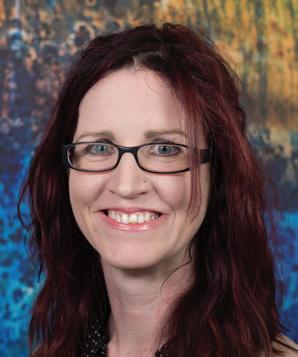
Drawing on the perspectives of students with disability and the staff that support them, David Eckstein makes a strong case for establishing dedicated careers support programs for students with disability. Although universities cannot control the labour market, there are still things they can do to help students with disability transition to the workforce. Throughout the report, Eckstein expertly brings together the policy context with the experiences of staff and students grappling with this issue, putting it into relationship with new theoretical understandings of disability. Taking the discussion one step further, the report foregrounds the insights of students with disability in recognition that they are the experts of their own lives. The research offers innovative and practical solutions, such as communities of practice within dedicated careers hubs for students with disability, and highlights the impacts of unconscious bias and institutional ableism. This research comes at exactly the right time as we grapple with the long-term economic effects of the COVID-19 pandemic and the possibility that the workforce will become even more competitive than it already is. The paper makes an original and timely contribution to the national debate about both disability inclusion and ways to support people with disability both at university and as they transition to the workforce.
https://www.ncsehe.edu.au/publications/jobs-students-disability/
63 ACCESS THE FINAL REPORT ONLINE >
Building a stronger evidence base to support effective outreach strategies for Aboriginal and Torres
students: Increasing impact and university participation
Katelyn Barney
Strait Islander
This Equity Fellowship focused on outreach programs for Indigenous students and examined “what works” and what could be improved in these programs. Most universities are running outreach initiatives for Indigenous high school students. The Fellowship involved a mixed methods approach (combining qualitative and quantitative methods) to identify successful factors in outreach programs for Indigenous students. The project findings have established strategies to strengthen and improve outreach programs specifically for Indigenous students that can be adopted by all universities across Australia. The Fellowship has also developed resources for outreach staff to assist them in evaluating their programs targeting Indigenous students.
BACKGROUND
Outreach programs into schools are identified as important for building Indigenous student aspirations. A number of universities run week-long, intensive camp experiences that bring Indigenous school students onto university campuses for information sessions, workshops, and events. However, high-quality, research-based evidence of the impact of these programs is limited. It is unclear when the first outreach programs specifically for Indigenous students occurred, but the number of outreach programs have grown substantially since the implementation of Higher Education Participation and Partnerships Program (HEPPP) funding in 2010. Outreach activities include aspiration raising; academic preparation and support for school students; on-campus visits to demystify university; peer mentoring programs; and academic skills development workshops. Programs are also provided for specific cohorts, such as Indigenous students.
Outreach programs to secondary schools from Years 10 to 12 are the most common, although outreach to earlier years of schooling is increasing. This Fellowship focused on intensive camps for Indigenous students, which are part of a suite of outreach activities being undertaken by universities for Indigenous students. Other forms of outreach include one-day on-campus experiences, mentoring programs, and school visits. However, on-campus camps for Indigenous students are a frequently used form of outreach occurring at 24 Australian universities. Initial discussions with outreach staff highlighted camps as a critical, but resource-intensive, element of outreach programs. As a result, camps are the focus of this study, but it is hoped that the findings will be applicable to other outreach programs for Indigenous students more broadly. On-campus outreach camps for Indigenous students share many similarities: usually threeto five-day on-campus experiences for school students, a variety of information sessions, and workshops and events
64
EQUITY FELLOWSHIP REPORT
led by Indigenous and non-Indigenous outreach staff and Indigenous student ambassadors or mentors. These activities are all aimed at demystifying university culture so that, hopefully, those students enrol in and attend university.
It is important to note there have been a number of research projects undertaken at universities across Australia that provide evidence of the effectiveness of equity programs. Yet, evaluation of Indigenous student outreach programs remains limited. This Fellowship fills this gap by strengthening the evidence and research base about the effectiveness of intensive camp outreach strategies targeting Indigenous students and will, in turn, assist in strengthening outreach programs by identifying effective practice.
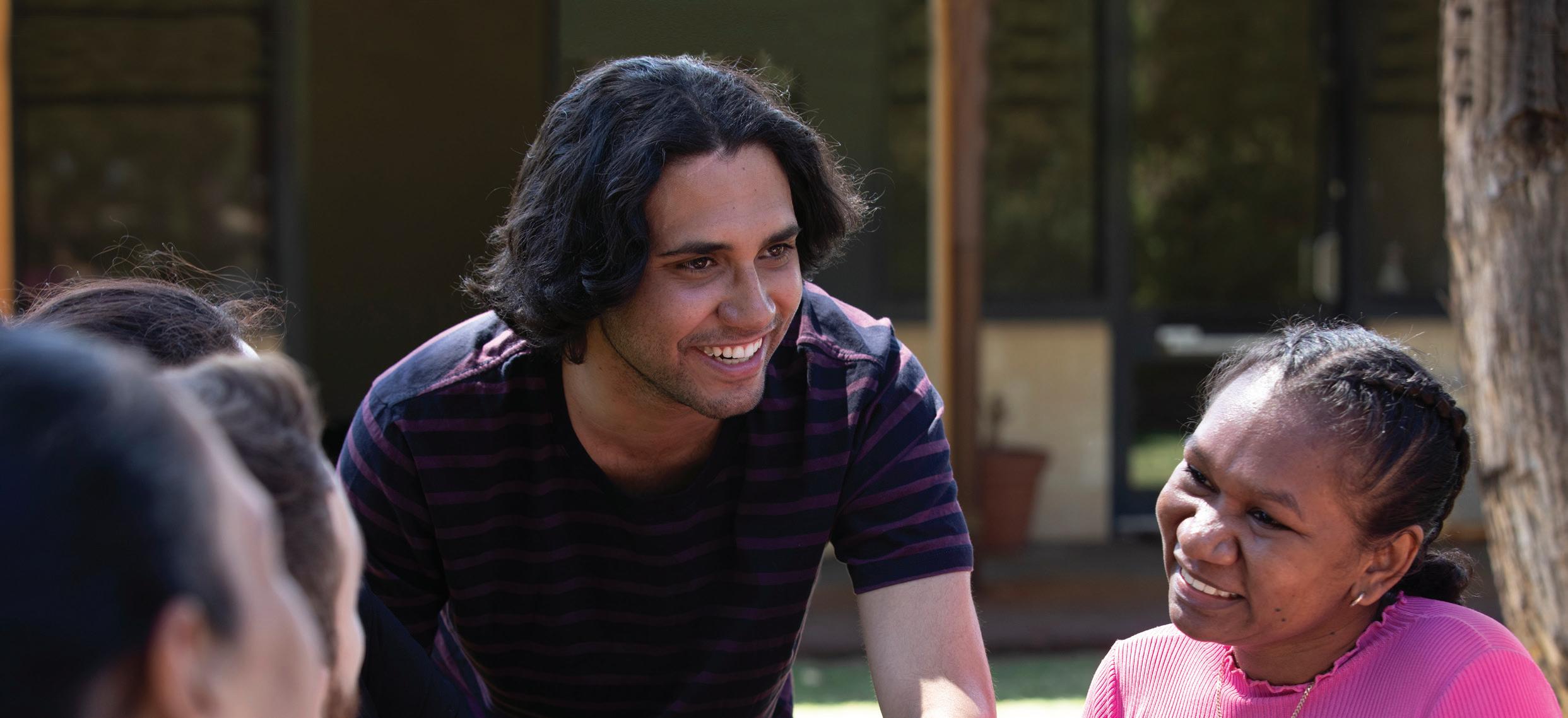
OBJECTIVES AND METHODOLOGY
The Fellowship involved a mixed methods approach (combining qualitative and quantitative methods) to identify the range of strategies and initiatives that are used to increase higher education access specifically for Indigenous students. The Fellowship then undertook an evaluation of two selected outreach initiatives. Additionally, strategies were developed for strengthening and improving outreach camps through engagement with an expert advisory group and staff at universities.
The Fellowship built on Barney’s established national partnerships and collaborations by working closely with an expert Indigenous Advisory Group. The members of the Advisory Group were: Associate Professor Clair Andersen, Professor Tracey Bunda, Professor Bronwyn Fredericks, Associate Professor Graeme Gower, Professor Martin Nakata and Professor Maria Raciti. Two advisory group meetings were held during the Fellowship to ensure that expert Indigenous advice, feedback, and perspectives were interwoven through the research. Regular email/Zoom/ Skype discussions with Advisory Group members were also
conducted. Barney also worked with an Indigenous evaluator, Professor Susan Page, who provided formative evaluation throughout the Fellowship by monitoring the progress of the Fellowship, attending advisory group meetings and the webinar on tips for outreach staff on evaluation, evaluating the engagement of key stakeholders, and providing regular formative feedback throughout all phases of the Fellowship. The Fellowship comprised four phases. A fifth phase was opportunistically added to the Fellowship towards the end of 2020.
Phase 1: Establishing the Fellowship program (January–March 2020) — theoretical significance.
Phase 2: Evaluating outreach programs: Case studies of intensive outreach camps (April–August 2020) — theoretical and practical significance.
Phase 3: Developing strategies to strengthen and improve outreach camps (September–October 2020) — practical and strategic significance.
Phase 4: Sharing lessons and improving the evidence base (November–December 2020) — strategic significance.
Phase 5: Broadening impact/dissemination (January–June 2021) — strategic significance.
KEY FINDINGS AND RECOMMENDATIONS
Key findings from the Fellowship were:
• The peer-to-peer connections between Indigenous students were a key success factor of outreach camps.
• Camps are part of a suite of outreach activities that many Indigenous students undertake while at school. Therefore, causality between outreach activity and transition to university is difficult to prove.
• Camps play an important role in demystifying university and provide “a taste” of university life for Indigenous students.
https://www.ncsehe.edu.au/publications/outreach-strategies-aboriginal-torres-straitislander-students-university/
65
ACCESS THE FINAL REPORT ONLINE >
• Most Indigenous students participated in outreach camps during Year 10, 11, or 12 and they were already considering transitioning to university.
• More cultural aspects and more Indigenous perspectives in the curriculum are needed in some camps.
• Post-camp engagement with Indigenous students is particularly important and needs to be strengthened in some camps.
• More practical resources are needed for staff to assist them to evaluate their programs.
The eight key recommendations derived from this Fellowship are outlined below according to each of the targeted audiences:
Key stakeholder recommendations
1. University leadership needs to ensure more training opportunities for outreach staff to provide them with the necessary skills to be able to evaluate their programs.
2. University outreach staff should continue to engage post-camp with Indigenous students who participate in outreach activities. This ensures that they are supported beyond undertaking the camp, through the whole-ofstudent-life cycle, from school, into university, and beyond. Follow up should be offered in a diversity of media (telephone, online, face-to-face).
3. University leadership and outreach staff should work together to ensure clear, agreed-upon “measures for success” in relation to outreach programs. These should take into consideration a range of factors, not just transition into university, but also the more subtle benefits of outreach programs. For example, the
connections students made with their peers, changes in their aspirations and their expectations about university.
4. University outreach staff should work collaboratively with Indigenous centres and Indigenous academic staff within universities to ensure Indigenous perspectives are strongly embedded in the “hands-on” activities on outreach camps.
5. University outreach staff should further develop stageand age-appropriate outreach programs for Indigenous students in primary school and early years of high school as there is growing recognition that the current major investment in outreach activities in the later secondary years may begin too late.
6. Universities should ensure there is Indigenous leadership of outreach programs for Indigenous students.
Australian Government recommendations
7. The Australian Government Department of Education, Skills and Employment (DESE) could test the feasibility of including evaluation of Indigenous outreach programs as a specific part of the current investment in the Student Equity in Higher Education Evaluation Framework and the Widening Participation Longitudinal Study (WPLS).
8. The DESE should build on the work of the WPLS so that data on the engagement of Indigenous students in outreach activities is included and linked to administrative data on the transition of Indigenous students into university.
Professor Maria Raciti Professor of Marketing Director, Indigenous and Transcultural Research Centre University of the Sunshine Coast
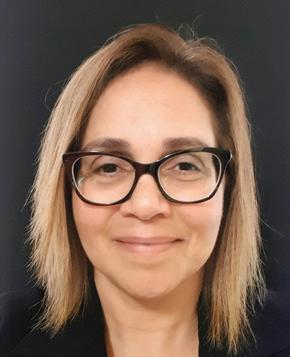
Dr Barney’s research is a thorough interrogation of a well-documented gap in the widening participation (WP) literature. Effective evaluation of outreach broadly and Indigenous outreach specifically has long been a point of tension with wide ranging and often changing views of what "success" is and the simultaneous presence of two disparate logics — returnon-investment versus return-on-objectives. Katelyn’s report provided sensible and research-informed recommendations for key stakeholders. These six recommendations could be reasonably adopted by institutions to enhance their onthe-ground delivery and evaluation of Indigenous outreach activities, including camps.
The deep dive into the two case studies was comprehensive and elevated participants’ voices. Dr Barney’s positioning statement and discussion of her critical pedagogy approach demonstrated reflexivity.
While the practice of reflexivity in WP research may occur, it is largely underreported. Thus, Katelyn’s report is a timely prompt for WP researchers to engage in, and document, reflexivity in research outputs.
Overall, Katelyn’s research complements previous studies and highlights the need and value of evaluation. The report also highlights the untenable pursuit of causal explanations for the unpredictable, nonlinear and context-dependent choice of non-traditional students to go (or not to go) to university. Dr Barney’s research provides realistic and implementable recommendations and such pragmatism will be particularly helpful for policy implementation. Katelyn is to be applauded for her focus on translating her findings into useful tools for practitioners via multimedia resources with Indigenous academics, which will enhance access and accelerate the uptake of her recommendations.
66

Biographies
Lisa ANDREWARTHA
Lisa Andrewartha has led a broad range of research projects designed to improve student equity in higher education. Lisa’s recent research publications have focused on: students from low socioeconomic status backgrounds; care leavers in


higher education; outcomes of tertiary enabling programs; employability in higher education; postgraduate student equity; military veterans in higher education; and students who are carers.
Sally BAKER
Dr Sally Baker is a Senior Lecturer in the School of Education at the University of New South Wales. Sally’s teaching and research interests centre on language, literacies, transition and equity in higher education, particularly with regard to culturally and linguistically
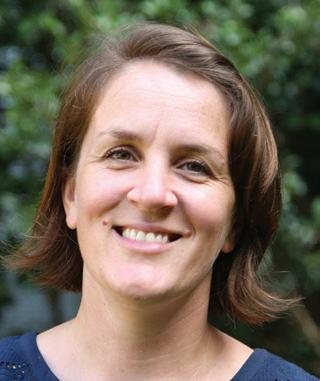
diverse students, and refugee students in particular. Sally is Chair of the national Refugee Education Special Interest Group for/with students from refugee backgrounds, supported by the Refugee Council of Australia.
Katelyn BARNEY
Dr Katelyn Barney is a Senior Lecturer in the Aboriginal and Torres Strait Islander Studies Unit at the University of Queensland. Her research focuses on improving pathways for Indigenous students into and through higher education and advancing

understanding about the role of collaborative research and music making between Indigenous and non-Indigenous people. Katelyn was a 2020 Equity Fellow with the NCSEHE and her Fellowship explored effective evaluation of university outreach with Indigenous secondary school students.
Kathryn BARTIMOTE
Dr Kathryn Bartimote is an academic lead within the Deputy Vice-Chancellor (Education) Portfolio, guiding the strategic and ongoing academic work of the portfolio in the area of quality assurance, of students' learning experience and outcomes in particular.
This involves institutional measurement and analytics, as well as data governance. Kathryn also leads various initiatives to enable learning analytics across the University of Sydney. Her research in higher education focuses on student motivation and success, and development of associated measures and tools.
Amani BELL
Amani Bell is Associate Professor of Work Integrated Learning in The University of Sydney School of Health Sciences. Her research focuses on students and staff working in partnership to enhance higher education, particularly to improve

access and success for students from diverse backgrounds.
Jace BLUNDEN
Mr Jace Blunden is a Casual Indigenous Student Success Program Tutor for the Wollotuka Institute Indigenous Education and Research Academic Division at The University of Newcastle. He also is a Research Assistant for the Centre of Excellence for Equity in Higher Education (CEEHE) College of Human and Social Futures. Much of his writing focuses on equity student access and participation in Higher Education.
Matt BRETT
Dr Matt Brett is Director of Academic Governance and Standards at Deakin University. He is an Adjunct Fellow with the NCSEHE and President and nonexecutive Director of Melba Support Services. He has a longstanding commitment to student equity
spanning research, policy and practice.
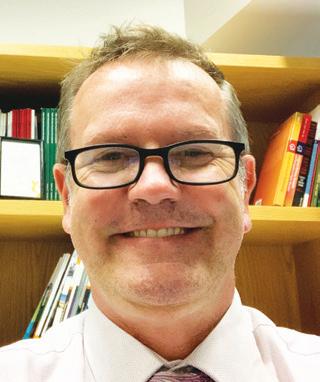
68
Donna BRIDGES
Dr Donna Bridges is a lecturer of sociology at Charles Sturt University. She is a gender theorist and a feminist researcher. She researches in the areas of gender inequality, gender and privilege, and gender and work. Her research covers the areas of military



institutions, the construction industry, aviation and social work. She is joint editor of Absent Aviators: Gender Issues in Aviation and Creative spaces for qualitative researching: Living research. Donna publishes in international Q1 journals and in edited book collections and media commentary. She is currently writing a book about gender in the Australian military.
Mark BROWN
Professor Mark Brown is Ireland’s first Chair of Digital Learning and Director of the National Institute for Digital Learning (NIDL) at Dublin City University. Mark is an EDEN Fellow and serves on the Executive Committees of the European Distance and eLearning
Network (EDEN) and the European Association of Distance Teaching Universities (EADTU). He is also currently Vice President of the Open and Distance Learning Association of Australia (ODLAA).

Sarah BUCKLEY
Dr Sarah Buckley is a Senior Research Fellow at ACER with research expertise in mathematics anxiety, engagement and motivation, particularly during early adolescence. Sarah has led several initiatives designed to address mathematics anxiety with pre-service teachers and in schools. Sarah has also worked on a number of large-scale international assessments including the Trends in International Mathematics and Science Study (TIMSS) and the Programme for International Student Assessment (PISA).
Jonathan BULLEN
Dr Jonathan Bullen is a Wardandi Noongar man, Senior Lecturer within Curtin Medical School, Platform Lead for Aboriginal Health & Wellbeing Research in the Faculty of Health Sciences, and Chair of Curtin University's Indigenous Leadership. His research focuses on developing non-Indigenous Australians' capabilities to effectively work with Indigenous Australians in health and tertiary education contexts, and associations between the physiological and psychological health of Indigenous Australians.
Matthew BUNN
Dr Matthew Bunn is a Research Fellow at CEEHE at the University of Newcastle, Australia. His work is centred on understanding entrenched inequalities within higher education, including problems of individualisation, the theorisation of agency and the durability of social class. Dr Bunn also works on building stronger communication between research and practice, including through CEEHE’s National Writing Program for Equity Practitioners.

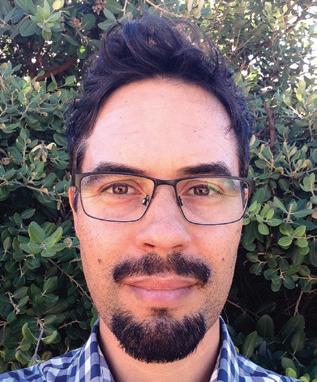
Penny Jane BURKE
Professor Penny Jane Burke is Global Innovation Chair of Equity and Director of CEEHE at the University of Newcastle, Australia. She has published widely in social justice in higher education, is co-editor of the Bloomsbury Gender and Education book series, Global Chair of Social Innovation at University of Bath and an expert member of the Australian Government’s Equity in Higher Education Panel.
69
Biographies
Beni CAKITAKI
Beni Cakitaki is a Senior Research Officer at the Centre for Higher Education Equity and Diversity Research. Beni has published national research on Australian higher education policy, and improving higher education access and outcomes for equity groups. His research focus includes Australian higher education policy, statistical modelling in higher education contexts, and labour markets.
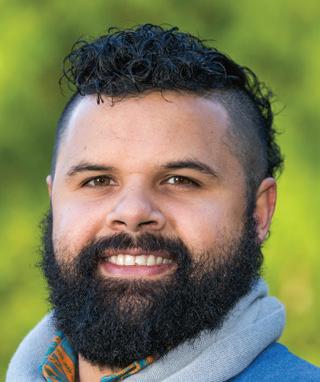
Julia COOK
Dr Julia Cook is Lecturer in Sociology at the University of Newcastle, Australia. Her research interests include the sociology of youth, time and housing, and their intersections with economic sociology. She is Co-Director of the Newcastle Youth Studies Network, a chief investigator on the current phase of the long-running Life Patterns research programme (2021–25), and a 2022–24 Australian Research Council DECRA awardee.
Djandunmarra COX
Djandunmarra Cox graduated from Curtin University with a Bachelor of Science majoring in Psychology and Human Resource Management. She has previously worked as an academic tutor at St Catherine’s College and a research assistant at Curtin University. She now works at Woodside as a graduate People and Global Capability Analyst.

Nicole CRAWFORD
Dr Nicole Crawford is NCSEHE Senior Research Fellow. She was a 2019/20 NCSEHE Equity Fellow and investigated proactive ways of supporting the mental wellbeing of mature-aged university students in regional and remote Australia. Prior to the Fellowship, she was a lecturer in Pre-degree Programs at the University of Tasmania (UTAS). She initiated UTAS’s Social Inclusion CoP, and the National Association of Enabling Educators of Australia Special Interest Group on Mental Health.
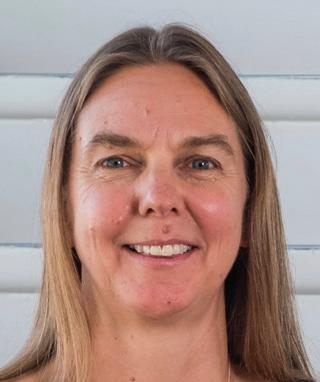

Hernán CUERVO
Hernán Cuervo is an Associate Professor at the Melbourne Graduate School of Education, in the University of Melbourne, Australia. His research interests are in the fields of sociology of youth, rural education and theory of justice. His latest books are Understanding Social Justice in Rural Education (Palgrave, 2016), Youth, Inequality and Social Change in the Global South (Springer, 2019) and Thinking about Belonging in Youth Studies (with Harris & Wyn, Palgrave, 2021).

Cheryl DAVIS
Cheryl Davis is the Director of Indigenous Engagement in the Faculty of Health Sciences at Curtin University, providing leadership and strategic direction to the Faculty in regards to Indigenous engagement. She was the project lead on the Balang Djuripin project which enabled the Koorda Network to be established, which comprises staff across the Faculty who have completed cultural security training workshops to provide career guidance and support to Indigenous students.
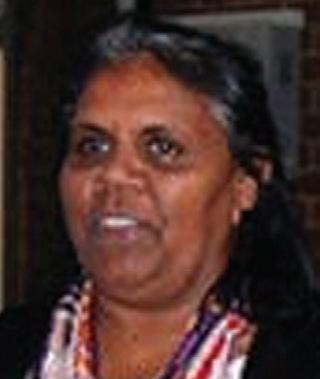
70
Jodie DAVIS
Jodie Davis is the Associate Director for Student Engagement at the University of Newcastle. She has over two decades of experience in higher education working in a broad range of roles. Jodie is passionate about customer service and loves the challenge of making the complex seem simple. In her current role she leads all operations for enquiries, conversion, transition and success, student events and activities, and student communication.
Janine DELAHUNTY
Dr Janine Delahunty is a lecturer in Academic Development and Recognition at the University of Wollongong and Equity Fellow of NCSEHE. Janine has a longstanding interest in educational equity which she has fostered through involvement in a range of equityfocused projects including with First-in-Family students, people from regional, rural and remote areas, Indigenous students and staff, and online learners. She values the richness and diversity of stories as told by participants.
Nora DEMPSEY
Nora Dempsey is the Senior Advisor for Innovation in the Office of eDiplomacy at the US Department of State. She has played a key role in creating the Virtual Student Federal Service (VSFS), the only global government virtual internship program. Although currently focused on using technology as an innovative diplomatic tool around the world, Nora has been at the heart of more traditional partnerships between educational institutions, and governments, across international borders.
Clemence DUE
Dr Clemence Due is a Senior Lecturer in the School of Psychology at the University of Adelaide. Her research expertise lies in the area of cross-cultural mental health, particularly for people from migrant and refugee backgrounds.
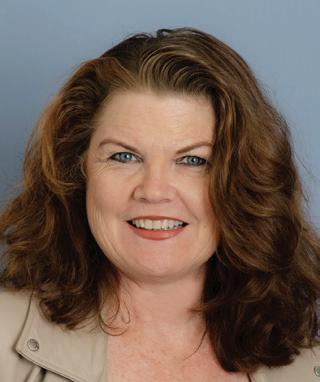



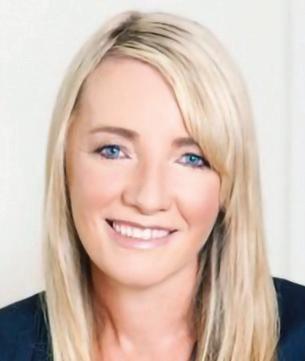
Karen DUNWOODIE
Dr Karen Dunwoodie is currently working as the Deputy Director and Research Fellow at the Deakin Centre for Refugee Employment, Advocacy, Training and Education (CREATE). She has worked with the refugee sector in Australia for the past 10 years and her research interests include progressing the field of refugee resettlement, principally focusing on career development and the impact access to tertiary education and training may have on the lives on refugees and people seeing asylum.
David ECKSTEIN
David Eckstein is Career Consultant at Swinburne University and leads the AccessAbility Careers


Hub—Swinburne’s specialist careers service for university students with disability—which received the 2019 National Association of Graduate Careers Advisory Services (NAGCAS) best practice award, and 2020 Honorable Mention from the US National Association of Colleges and Employers. He is NAGCAS national treasurer and leads a Disability Career Development Learning community of practice for Australian university staff.
Daniel EDWARDS
Dr Daniel Edwards is Research Director of Tertiary Education Research at the Australian Council for Educational Research (ACER). His interests include student aspirations and pathways into and through higher education. Dan is on the ACER Board of Directors, the Australian Government's Equity in Higher Education Panel, and is an Honorary Senior Fellow at the Melbourne Centre for the Study of Higher Education (CSHE) at the University of Melbourne.
71
Biographies
Katie ELLIS
Katie Ellis is Professor in Internet Studies and Director of the Centre for Culture and Technology at Curtin University. Her research is located at the intersection of media access and representation and engages with government, industry and community to ensure actual benefits for people with disability. She has authored and edited 17 books and numerous articles on the topic of disability and the media.
Habiba FADEL
Habiba Fadel is a PhD student at the Centre for Research in Assessment and Digital Learning (CRADLE). Her project examines belongingness in tertiary online education particularly for students from CALD backgrounds. Her masters degree thesis focused on student engagement with contemporary events, the findings of which were published in the Social Educator journal. Habiba has worked as a research assistant on multiple projects at Deakin University and has also been an Assistant Lecturer at the Faculty of Business and Law.
Samuel FOWLER
Mr Samuel Fowler is a lecturer and part-time PhD student in the School of Education at the University of South Australia. His research relates to using professional development to shift service teachers' epistemologies in order to promote innovative use of digital tools. In addition to this study, he also works with the Connect team (the universities STEM outreach group) to promote effective transdisciplinary thinking in primary school students.

Paula GLEESON
Paula Gleeson is a Senior Social Researcher at UTS, where she established the Centre for Carers Research. Paula has deep experience in international development, women’s health and safety, and feminist theory. Paula’s work is to support and recognise family and friend carers in policy and practice and amplifying carer voice is critical to her work. Paula’s research practice is deeply collaborative. Paula is a solo mum and feminist.
Deanna GRANT-SMITH

Associate Professor Deanna GrantSmith is Deputy Director of the Centre for Decent Work & Industry at Queensland University of Technology. Her research focuses on unpaid work experience, internships and student wellbeing in a Work Integrated Learning context across a wide range of disciplines including nursing, allied health, education, business, creative industries, and planning. She is Senior Fellow and Associate Fellow (Indigenous) of the Higher Education Academy.


Himanshu GUPTA
Dr Himanshu Gupta is a trained physiotherapist and currently holds the position of Senior Consultant at Allen + Clarke Consulting. He also holds a Senior Lecturer academic status within the College of Medicine and Public Health at Flinders University, Northern Territory division. Himanshu has had his research published in peer-reviewed journals and books, presented findings at conferences, been the recipient of research awards, and serves as a reviewer and editor for multiple international public health peer-reviewed journals.

72
Stephanie HARDACRE

Dr Stephanie Hardacre is a Research Assistant in the School of Psychological Sciences at the University of Newcastle. She was awarded her PhD in social and organisational psychology in early 2020, which explored political solidarity and leadership processes in the context of gender equality. She is currently working on several projects in the student equity space, including a HEPPP-funded project investigating low SES student perceptions of success at university.


Lisa HARTLEY
Lisa Hartley is Co-Director and Senior Lecturer at the Centre for Human Rights Education at Curtin University. Her interdisciplinary research is focused on questions of human rights and social change which cuts across the fields of refugee and migrant studies, sociology, and community and social psychology. She has extensive experience working with a range of community groups providing support and advocacy for human rights issues, informed by a commitment to working along side communities, including people seeking asylum.
Andrew HARVEY
Professor Andrew Harvey is Executive Director of Student Equity and Director of CHEEDR. Andrew has published widely in areas of higher education policy, including student equity, admissions, retention, and globalisation. He is lead editor of Student Equity in Australian Higher Education: Twenty-five years of A Fair Chance for All (Springer, 2016).


Braden HILL
Professor Braden Hill is a Nyungar (Wardandi) man from the south-west of Western Australia and the Pro ViceChancellor (Equity and Indigenous) and Head of Kurongkurl Katitjin, Edith Cowan University’s Centre for Indigenous Australian Education and Research. He has significant experience in Aboriginal education, as well as leading a range of equity initiatives including Sage Athena SWAN, Respect Now Always, Reconciliation Action Plan and Disabilities and Access Inclusion Plan within the tertiary sector.
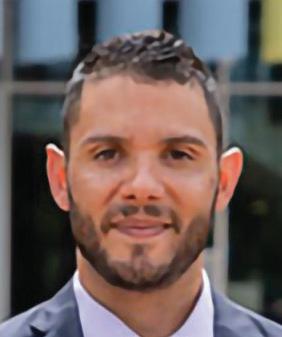
Peter HURLEY
Dr Peter Hurley is an Education Policy Fellow at the Mitchell Institute at Victoria University. He has expertise in tertiary education policy and international education systems, with a particular interest in advocating for equitable policy solutions so that the benefits of education can be shared by all. He has worked in various research and management roles in the vocational and higher education sectors.
Jennifer JACKSON
Jen Jackson is Associate Professor of Education Policy at the Mitchell Institute at Victoria University. Jen has held a range of education research and policy roles, across early childhood, school and tertiary education. Jen has a particular interest in how higher education and VET can work together to improve equity and opportunity. In 2020, Jen was Research Manager for the Skills for Victoria’s Growing Economy review.
73
Biographies
John KENNEDY
John Kennedy is a Lecturer in STEM Education and a member of the Centre for Change and Complexity in Learning at the University of South Australia. His industry-engaged research sits at the nexus of educational theory and classroom practice and is focused on students' attitudes to schooling, in particular, the impact of changing pedagogies on attitudes to STEM subjects, leading to real change in real school settings.
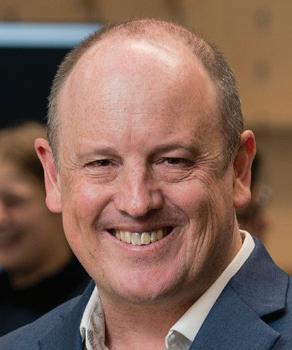
Sharron KING
Professor Sharron King is the Dean of Programs (UniSA College): Education Futures. She has a long history of senior leadership, research and innovation in improving educational outcomes for both academic staff and students. Her research interests focus on students' transition to university, as well as student health and wellbeing and widening access to university for students who face educational disadvantage. Sharron is currently the CI of a collaborative NCSEHE-funded project investigating students’ transitions to University from regional South Australia.
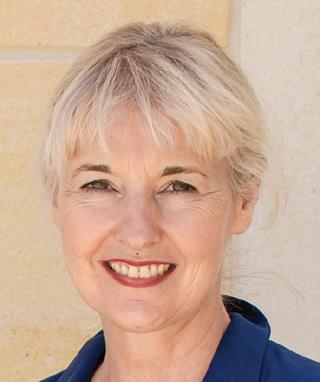
Elizabeth KNIGHT
Elizabeth is a professional career practitioner and has worked supporting students in tertiary education for over 20 years. She is currently a Research Fellow at the Centre of International Research on Education Systems at Victoria University. A key area of interest is equity of access to and in tertiary education, the provision of institutional information and support for transition into post-school education.
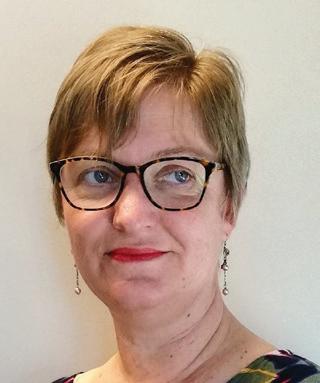
Matthias KUBLER
Matthias Kubler works as Research Manager in the Institute for Social Science Research (ISSR). He has undertaken various data analyses of equity patterns in university access, deferral and completion specialising in the utilisation of data from the Higher Education Information Management System (HEIMS) and the ABS Census. Prior to joining ISSR he researched the student experience and student retention as Research Analyst for the University of Queensland Student Affairs Division.
Sarah LAMBERT
Dr Sarah Lambert is an Honorary Fellow at Deakin University researching topics related to social justice, digital participation and success of under represented learners. Her research builds on 20 years working in educational technology and learning design in regional university settings. She is the Chief Investigator of the Australian National Open Textbooks as Social Justice scoping study funded by the NCSEHE.

Simon LEONARD
Associate Professor Simon Leonard leads the pre-access (outreach) equity programs at the University of South Australia. With a view to preparing young people to meet the contemporary challenges of a complex world, his research focuses on understanding how the innovative approaches to teaching and learning emerging from the science of learning can be translated to sustainable and scalable practice in schools and other learning environments.

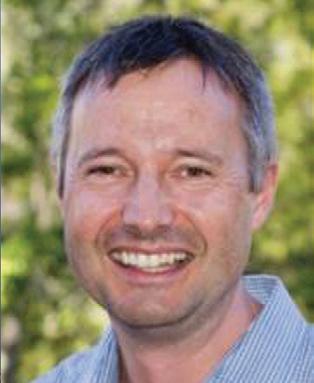
74
Tamara LIPSCOMBE
Grounded in a community and inter-cultural psychology perspective, Tamara's research interests are centred on issues of colonisation and resultant issues of social inequalities faced by First Nations Peoples. She grounds herself in a social justice framework, meaning that she has a particular focus on ethical praxis. Her analytical specialties concern explicating discourses, worldview, ideologies, deep cultural narratives, and resultant power dynamics in society.
Michael LUCKMAN
Michael Luckman is Manager, Institutional Research at the Centre for Higher Education Equity and Diversity Research at La Trobe University.
Michael has a Bachelor of Social Science (Honours) and a Masters of Public Policy and Management.
Michael’s primary research interests are on the evaluation of educational interventions and the trajectories of students through higher education, with recent publications on student deferral, leave-taking and non-complete degrees.

Darlene MCLENNAN

Darlene McLennan is the Manager at ADCET and is also currently the National Disability Coordination Officer (NDCO) for Northern Tasmania. She completed her Master of Business with the University of Tasmania and has a postgraduate degree in Careers Education through RMIT University. Her work in ADCET compliments the key objectives of her NDCO role, which are to improve linkages, improve transitions and improve participation for people with disability in tertiary education.
Julie MCMILLAN
Dr Julie McMillan is a Senior Research Fellow at ACER. Dr McMillan has published on a broad range of subject areas relating to youth transitions. She has worked on the development of a number of new measures of socioeconomic status and provided advice to government bodies on how to identify school and university students from socioeconomically disadvantaged backgrounds.

Tebeje Molla MEKONNEN
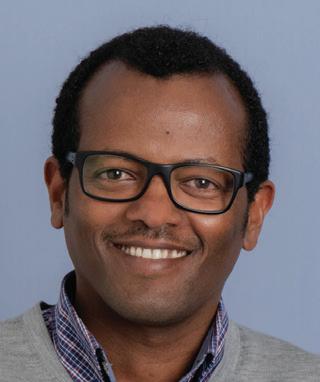
Dr Tebeje Molla is an Australian Research Council DECRA Fellow in the School of Education at Deakin University. His research focuses on educational inequality and policy responses at systemic and institutional levels. His DECCRA project explores higher education participation among African Australian youth from refugee backgrounds. He has widely published on student equity and, theoretically, his work is informed by critical sociology and the capability approach to social justice.
Lucy MERCER-MAPSTONE
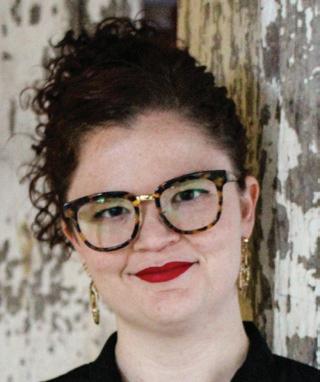
Dr Lucy Mercer-Mapstone has a passion for student engagement in higher education with a particular focus on student–staff partnership and student equity. Lucy’s teaching and research seeks to reconceptualise relationships between students and staff in higher education, based on respect, reciprocity, dialogue, and mutual learning. Lucy adopts social justice and feminist lenses to shine light on the role of power in her work, aiming to create more egalitarian spaces in higher education.
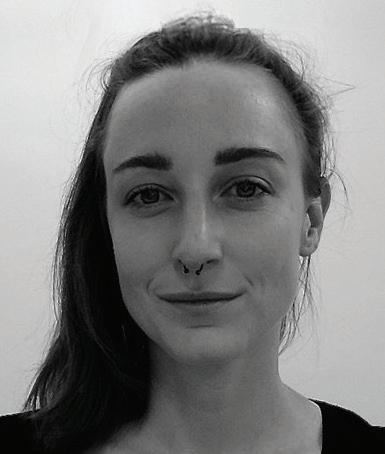
75
Biographies
Ella MOECK

Dr Ella Moeck works in the College of Education, Psychology and Social Work at Flinders University. She is also a Research Fellow in the Ethics and Well-Being Hub at The University of Melbourne, where she is part of the Functions of Emotions and Everyday Life lab. Her research interests focus the intersection between cognition and emotion.

Gulwanyang MORAN
Gulwanyang Moran is a proud Birrbay and Dhanggati woman of the Gathang language group, NSW. With a passion for language and culture, Gulwanyang is qualified and experienced in research, media, advisory and educator leadership roles. Gulwanyang has worked on several research projects as an RA in the Education and Languages Education research spaces. Gulwanyang holds a Masters in Indigenous Language Education, Bachelor Degree in Primary Education, Post Graduate Degree in Business and Associate Degrees in Business Administration and Aboriginal Education.
Alexander NEWMAN
Alex is Head of the Department of Management at Deakin Business School and Director of the Centre for Refugee Employment, Advocacy, Training and Education (CREATE). CREATE supports people from a refugee background to access education and meaningful employment. He is a leading scholar on the topics of leadership, entrepreneurship, organisational psychology and human resource management.
Andrew NORTON
Andrew Norton is Professor in the Practice of Higher Education Policy at the Centre for Social Research and Methods at the Australian National University. He was previously the Higher Education Program Director at the Grattan Institute. In 2013–14 he was the co-author of a government-commissioned review of the demand driven student funding system. He has also worked as a ministerial adviser on higher education and as a university policy adviser.



Francisco PERALES
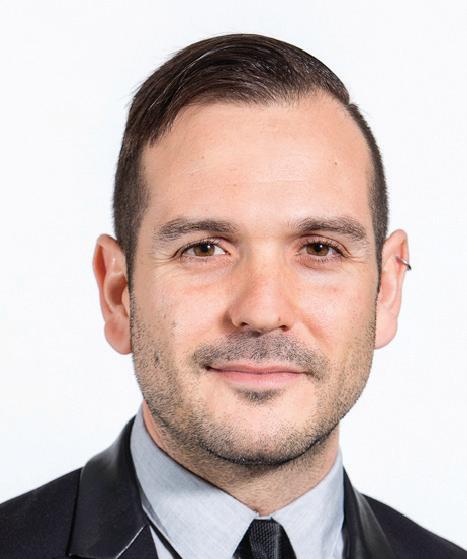
Francisco (Paco) Perales is Associate Professor of Sociology at the University of Queensland, Australia. His research uses longitudinal and life-course approaches and quantitative methods to enhance our understanding of social stratification in contemporary societies. Paco’s recent work has concentrated on identifying the drivers of socioeconomic inequalities by socioeconomic background, gender, sexual orientation and refugee status within Australian society.
Tim PITMAN
Associate Professor Tim Pitman is a researcher of higher education policy at Curtin University. His research has a focus on widening access and participation for groups of students historically underrepresented in higher education. His current research investigates how people with disability in higher education are supported in their studies.
76
Louise POLLARD
Louise Pollard is the Deputy Director, Student Life, at The University of Notre Dame Australia, and is responsible for university residences and leading the national student engagement initiatives including Orientation, Sports and Mentoring. She completed a 2017 Equity Fellowship through the NCSEHE; was previously the Manager of Aspire UWA, a nationally-recognised widening participation program at The University of Western Australia; and has 20 years experience in secondary and tertiary education.

Jacob PREHN

Dr Jacob Prehn (PhD, MSW, B.Soc.Sc.) is a proud Worimi man, Indigenous Fellow, Senior Lecturer, and the Master of Social Work Course Coordinator at the University of Tasmania. He is an awardwinning early career researcher in the fields of sociology and social work and current CI on a A$1.25million NMHRC research grant.
Robyn QUIN
Adjunct Professor Robyn Quin served as Deputy Vice-Chancellor Education at Curtin University from 2007 until 2012. Previous to that she was Pro Vice-Chancellor and Executive Dean at Edith Cowan University. Her academic background is in communication studies but during her time in academic administration she developed a string and continuing interest in issues of student equity and strategies to encourage people from equity groups to engage with higher education.
Maria RACITI
Professor Maria Raciti is a social marketer who is dedicated to social justice and positive behaviour change. Maria is Co-Director of the USC Indigenous and Transcultural Research Centre, an Adjunct Fellow with the National Centre for Student Equity in Higher Education and was part of an Australian Government "Napthine Review" taskforce. Maria is a Principal Fellow of the Higher Education Academy (UK) and is regularly engaged as an expert advisor.
Lynne ROBERTS
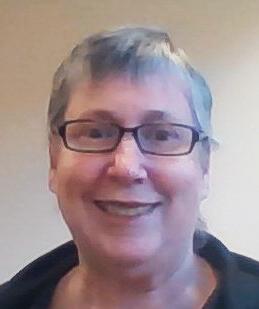
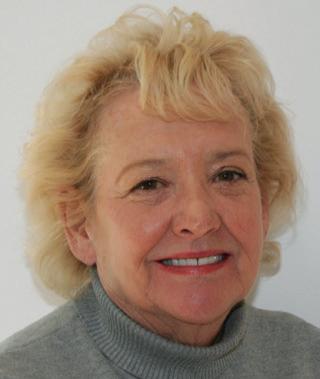
Associate Professor Lynne Roberts is the Director of Learning and Teaching in the School of Population Health at Curtin University.
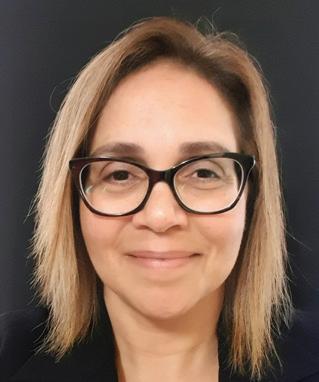
Chris RONAN
Chris Ronan is the Equity and Engagement Director at the Country Universities Centre. He has previously worked in universities across the USA, New Zealand and Australia, and is an executive member of the Society for the
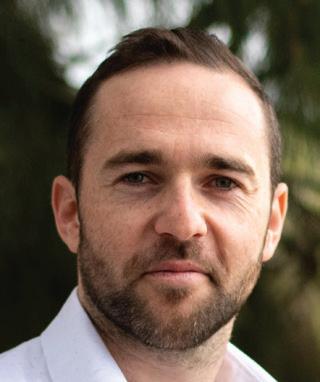
Provision of Education in Rural Australia (SPERA). Chris holds a Masters degree from the LH Martin Institute for Tertiary Education Leadership and Management at the University of Melbourne, with a focus on regional higher education policy.
Sheldon ROTHMAN
Dr Sheldon Rothman recently retired after 45 years in education, including 19 years at ACER. Much of his research at ACER focusses on the senior secondary years of school and young people’s transition to work and further study.
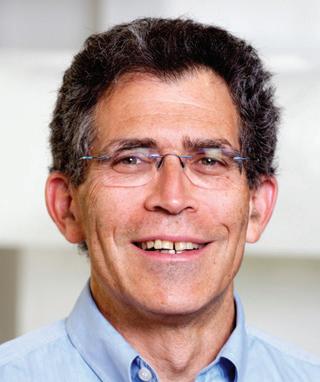
77
Biographies
Steven ROWLEY
Steven Rowley is Professor of Property in the School of Accounting, Economics and Finance at Curtin University. He has been director of the Australian Housing Urban Research Institute’s (AHURI) Curtin research centre since 2011 and delivered over 90 publications including industry reports, academic journal articles and AHURI reports in the areas of housing affordability, housing supply and affordable housing.
Andrea SIMPSON
Dr Andrea Simpson is a clinical audiologist and academic lecturer and researcher. She was selected as one of six NCSEHE Equity Fellows in 2020.
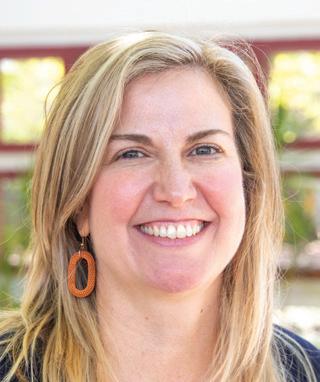

Bret STEPHENSON
Dr Bret Stephenson holds a PhD from The University of Edinburgh and is Senior Research Fellow within CHEEDR at La Trobe University. Bret has received several awards for teaching and university innovation, including a 2014 OLT National Citation Award. Bret has research interests in: student success and retention, data analytics, student equity and participation, and the history of higher education.

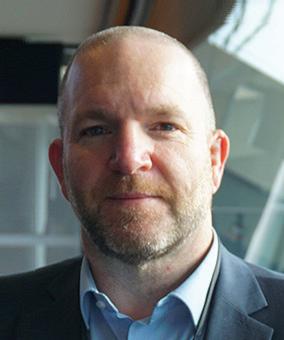
Cathy STONE

James SMITH
Professor James Smith is Director of the Freemasons Centre for Male Health and Wellbeing — Northern Territory at Menzies School of Health Research. He has led multiple research projects relating to Indigenous higher education in Australia. He is a former Equity Fellow and current Adjunct Professor with the NCSEHE.
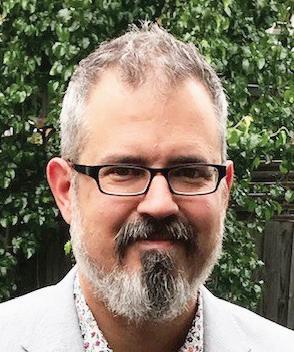
Ian SOLOMONIDES
Professor Ian Solomonides has a PhD in engineering education and strong research interests in student learning, student motivation and engagement, and curriculum design. Previous roles include Director of Macquarie University’s Learning and Teaching Centre, Victoria University’s Pro Vice-Chancellor (Learning Innovation and Quality) as well as various other leadership roles in Australia and the UK. He was one of the founding and lead designers of the Victoria University Block Model.
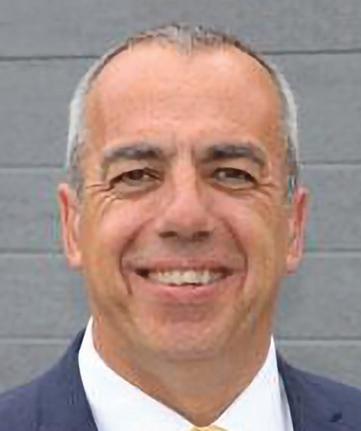
Dr Cathy Stone is a consultant and researcher in higher education student equity, retention and success who focuses on improving the experience of mature-aged, First-in-Family, regional, and online students. She is a Conjoint Associate Professor, School of Humanities & Social Science, University of Newcastle, and an NCSEHE Adjunct Research Fellow. Cathy has many years’ experience in developing student support and success programs, both on campus and online, and researching ways these can be improved.
Melanie TAKARANGI
Melanie Takarangi is an Associate Professor in the College of Education, Psychology & Social Work at Flinders University. She is a cognitive psychologist who primarily researches how people react to and remember negative or traumatic personal experiences. Her work informs legal and clinical issues such as the reliability of testimony and psychological wellbeing and adaptive functioning. She also has a strong interest in undergraduate and postgraduate mentorship and research training.
78
Kathy TANGALAKIS

Associate Professor Kathy Tangalakis’s career focus has been on enhancing the first year student learning experience and outcomes for diverse student cohorts in biomedical and healthrelated courses. Her contribution to learning and teaching has been recognised internationally, nationally and institutionally with numerous awards. Kathy is currently researching how Victoria University's innovative Block Model has impacted on commencing student outcomes in STEM.
Kate THOMPSON
Associate Professor Kate Thompson is the leader of the Digital Learning for Change Research Group and the Research Engagement Leader for the Visualisation and Interaction Solutions for Engagement and Research (VISER) team, both at QUT, and one of the lead editors of AJET. Kate explores the roles of technology in enabling student learning and teacher practice. She has developed methodological tools to generate actionable knowledge for teachers, learners and the designers of learning.
Christopher THOMPSON

Chris Thompson is currently the Associate Dean (Education) in the Faculty of Science, and Associate Professor in Chemistry. His current research lies in innovative science education, where he co-leads the Chemistry and Science Education Research Group (ChaSERs). Specific areas of interest include graduate employability, student attitudes towards studying chemistry, and putting the A in "STEAM". Chris has published over 60 papers in chemistry and chemistry education, and is co-author of Australia's most popular foundation chemistry textbook.
James TOGNOLINI
Jim Tognolini is Professor and Director of the Centre for Educational Measurement and Assessment

University of Sydney. He is a Professorial Fellow at the University of Wollongong and Adjunct Professor of Education at The University of Western Australia. During 2006–16 he was Senior Vice President (Research and Assessment) and was Distinguished Research Scientist for Pearson Assessment Centre. During 2009–13 he was in residence as Professor and Senior Research Fellow at Oxford University.
Wojtek TOMASZEWSKI
Associate Professor Wojtek
Tomaszewski is Principal Research

Fellow in Quantitative Methods and Research Group Leader at the Institute for Social Science Research (ISSR), The University of Queensland. He leads ISSR’s Education, Employment and Disadvantage Group, and his expertise is in quantitative research and advanced statistical analysis. Wojtek has led multiple projects in the field of education for the Commonwealth and State Governments in Australia, and previously for the British Government.
Bep UINK
Dr Bep Uink (Master of Applied Psychology (Clinical), PhD) is a Noongar woman from Perth, WA. She is a Research Fellow at Murdoch University’s Kulbardi Aboriginal Centre. Her research focuses on understanding how socially determined disadvantage impacts the social emotional wellbeing of young people, both Indigenous and non-Indigenous, and how social systems such as higher education can support young people's wellbeing.


79
Biographies
Lynette VERNON
Dr Lynette Vernon is a senior research fellow in Education at Edith Cowan University. Previously Lynette worked with NCSEHE within programs aimed to widen access and improve participation in higher education. Lynette started her career as a high school science teacher, teaching (>20 years) in schools across Australia. While teaching in rural Australia, she studied online and completed her Graduate Diploma in Psychology at Charles Sturt University, then completed her PhD (Psychology) at Murdoch University.
Elaine WADDELL
Dr Elaine Waddell is a casual professional in the College of Medicine and Public Health at Flinders University. Her research expertise focuses on phenomenology, mental health and military veteran experience.

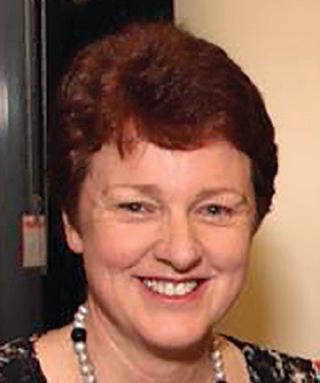
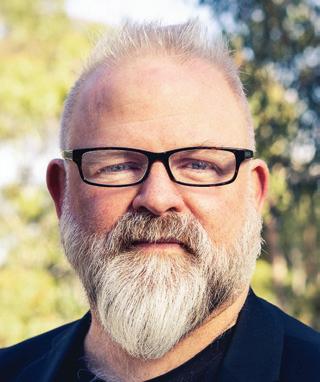

Brad WEST
Dr Brad West is a sociologist at the University of South Australia. He is the co-President of the International Sociological Association's Research Committee on Sociological Theory, a Faculty Fellow in the Centre for Cultural Sociology at Yale University and founding co-convenor of the Military Organisation and Culture Studies Group (MOCS). His books include Re-enchanting Nationalisms (Springer), War Memory and Commemoration (Routledge) and Militarization and the Global Rise of Paramilitary Culture (Springer).
Matthew WYATT-SMITH
Matthew Wyatt-Smith is a veteran and CEO of the Australian Student Veterans Association (ASVA). In his transition from the Australian Defence Force back into the local community, he witnessed firsthand the obstacles that many veterans were facing. His work at the ASVA aims to bridge the gap for veterans who want to get back into study and continue to contribute to society.

Ben WADHAM
Associate Professor Ben Wadham is Director of the Open Door: Veteran Transition, Integration, Wellbeing research initiative at Flinders University. Open Door is an Australasian research hub that brings together veterans, scholars, and practitioners around key research, service provision, and policy/legislation initiatives. Open Door is connected to other veteran research hubs across the Five Eyes nations. Ben is the co-Deputy Director of Orama Research Institute for Mental Health and Wellbeing. As a Veteran, Ben's research is focused on the health and wellbeing of ex-service personnel.
Ning XIANG
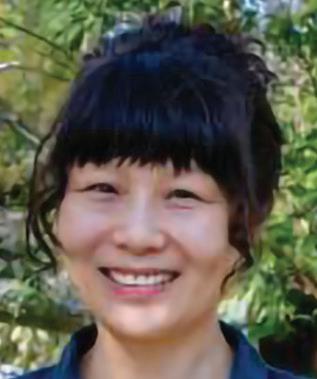
Dr Ning Xiang, a Senior Research Assistant at the Institute for Social Science Research at The University of Queensland (UQ), is an experienced researcher with multi-disciplinary training background. She holds a PhD in social psychology from UQ and has been working on a number of projects funded by the Department of Education, Skills and Employment and the NCSEHE. Her current research interests involve student engagement and equity in higher education.
Note: For the purposes of this publication, "Indigenous" refers to Aboriginal and/or Torres Strait Islander people and/or Australian First Nations people, unless specified otherwise. This term is used for brevity. The NCSEHE acknowledges the diversity of views with regard to using these terms.
80
Acronyms
ABS Australian Bureau of Statistics
ACER Australian Council of Educational Research
ACMID Australian Census and Migrants Integrated Dataset
ADCET Australian Disability Clearinghouse on Education and Training
ADF Australian Defence Force
AHPRA Australian Health Practitioner Regulation Agency
AHURI Australian Housing Urban Research Institute
AJET Australasian Journal of Educational Technology
ANZSSA Australia and New Zealand Student Services Association
ASSD Additional Support for Students with Disability
ASVA Australian Student Veterans Association
ATAR Australian Tertiary Admissions Rank
BNLA Building a New Life in Australia
CALD Culturally and Linguistically Diverse
CALDM/R Culturally and Linguistically Diverse Migrant and Refugee
CDAA Career Development Association of Australia
CDL Career Development Learning
CEEHE Centre of Excellence for Equity in Higher Education
CEO Chief Executive Officer
ChaSERs Chemistry and Science Education Research Group
CHEEDR Centre for Higher Education Equity and Diversity Research
CRADLE Centre for Research in Assessment and Digital Learning
CREATE Centre for Refugee Employment, Advocacy, Training and Education
CSP Commonwealth Supported Place
CSU Charles Sturt University
DDA Disability Discrimination Act
DES Disability Employment Service
DESE Department of Education, Skills and Employment
DPF Disability Performance Funding
DSE Disability Standards for Education
DSO Disability Support Office
DVA Department of Veterans Affairs
EADTU European Association of Distance Teaching Universities
ECU Edith Cowan University
EDEN European Distance and eLearning Network
EFTSL Equivalent Full-time Student Load
EHEP Equity in Higher Education Panel
EPHEA Equity Practitioners of Higher Education Australasia
FiF First-in-Family
FYE First Year Experience
HEIMS Higher Education Information Management System
HEPPP Higher Education Participation and Partnerships Program
IAHA Indigenous Allied Health Australia
IRU Innovative Research Universities
ISSR Institute for Social Science Research
ITAS The Indigenous Tutorial Assistance Scheme
LSAY Longitudinal Surveys of Australian Youth
MOCS Military Organisation and Culture Studies Group
NAGCAS National Association of Graduate Careers Advisory Services
NAPLAN National Assessment Program – Literacy and Numeracy
NCSEHE National Centre for Student Equity in Higher Education
NCVER National Centre for Vocational Education Research
NDCO National Disability Coordination Officer
NESB Non-English Speaking Background
NIDL National Institute for Digital Learning
NPE Non-Participating Enrolment
NSW New South Wales
ODLAA Open and Distance Learning Association of Australia
OER Open Educational Resources
PISA Programme of International Student Assessment
QUT Queensland University of Technology
RRR Regional Rural and Remote
RUC Regional University Centre
SA South Australia
SAS School Attitude Survey
SES Socioeconomic status
SES Student Experience Survey
SIG Special Interest Group
STEM Science, Technology, Engineering and Mathematics
TACs Tertiary Admissions Centres
TEL Technology-Enhanced Learning
TICS The Innovation and Creativity Schools
TIMSS Trends in International Mathematics and Science Study
UDL Universal Design for Learning
UK United Kingdom
UNCRPD United Nations Convention on the Rights of Persons with Disabilities
UniSA University of South Australia
UQ The University of Queensland
USA United States of America
UTAS University of Tasmania
UTS University of Technology Sydney
UWA The University of Western Australia
VET Vocational Education and Training
VISER Visualisation and Interaction Solutions for Engagement and Research
VSFS Virtual Student Federal Service
VU Victoria University
WIL Work Integrated Learning
WINTA Women in Non-Traditional Areas
WPLS Widening Participation Longitudinal Study
81
About the NCSEHE
The National Centre for Student Equity in Higher Education (NCSEHE) is a research and policy centre funded by the Australian Government Department of Education, Skills and Employment and based at Curtin University.
The NCSEHE provides national leadership in student equity in higher education, connecting research, policy and practice to improve higher education participation and success for marginalised and disadvantaged people.
The diverse activities conducted by the Centre focus on strengthening Australia’s research quality, capability and capacity to build a robust evidence base; and informing evidence-based policy design and implementation, and institutional best practice.
An emphasis on the "student voice" and evaluation and communication of best practice equity initiatives contextualises research and data analysis.
The NCSEHE conducts a broad scope of activities including:
• research-based projects both independently and in collaboration with other organisations, funded through external grants or through Centre resources
• the NCSEHE Research Grants Program
• equity policy and program evaluation
• Research Fellowships and Equity Fellowships
• student equity data analysis, online resources and briefing notes
• print and digital publications
• collaborative and independent events
• representation at national and international conferences
• an emphasis on effective communication through channels including: website, electronic newsletters, social media and general media exposure.
The Centre has established a strong national presence, engaging with key stakeholders and maintaining sector-wide partnerships to enhance outcomes and delivery of research and recommendations. The growing reputation and influence of the Centre has contributed to student equity becoming firmly incorporated into higher education policy.
82
“
“
Connecting equity policy, research and practice
DISCLAIMER
Information in this publication is correct at the time of printing but may be subject to change. This material does not purport to constitute legal or professional advice.
Curtin accepts no responsibility for and makes no representations, whether express or implied, as to the accuracy or reliability in any respect of any material in this publication. Except to the extent mandated otherwise by legislation, Curtin University does not accept responsibility for the consequences of any reliance which may be placed on this material by any person.
Curtin will not be liable to you or to any other person for any loss or damage (including direct, consequential or economic loss or damage) however caused and whether by negligence or otherwise which may result directly or indirectly from the use of this publication.
National Centre for Student Equity in Higher Education
Building 602: 146 (Technology Park)
Curtin University
Kent St, Bentley WA 6102 GPO Box U1987 Perth WA 6845
Tel: +61 8 9266 1573
Email: ncsehe@curtin.edu.au
ncsehe.edu.au
































































































































